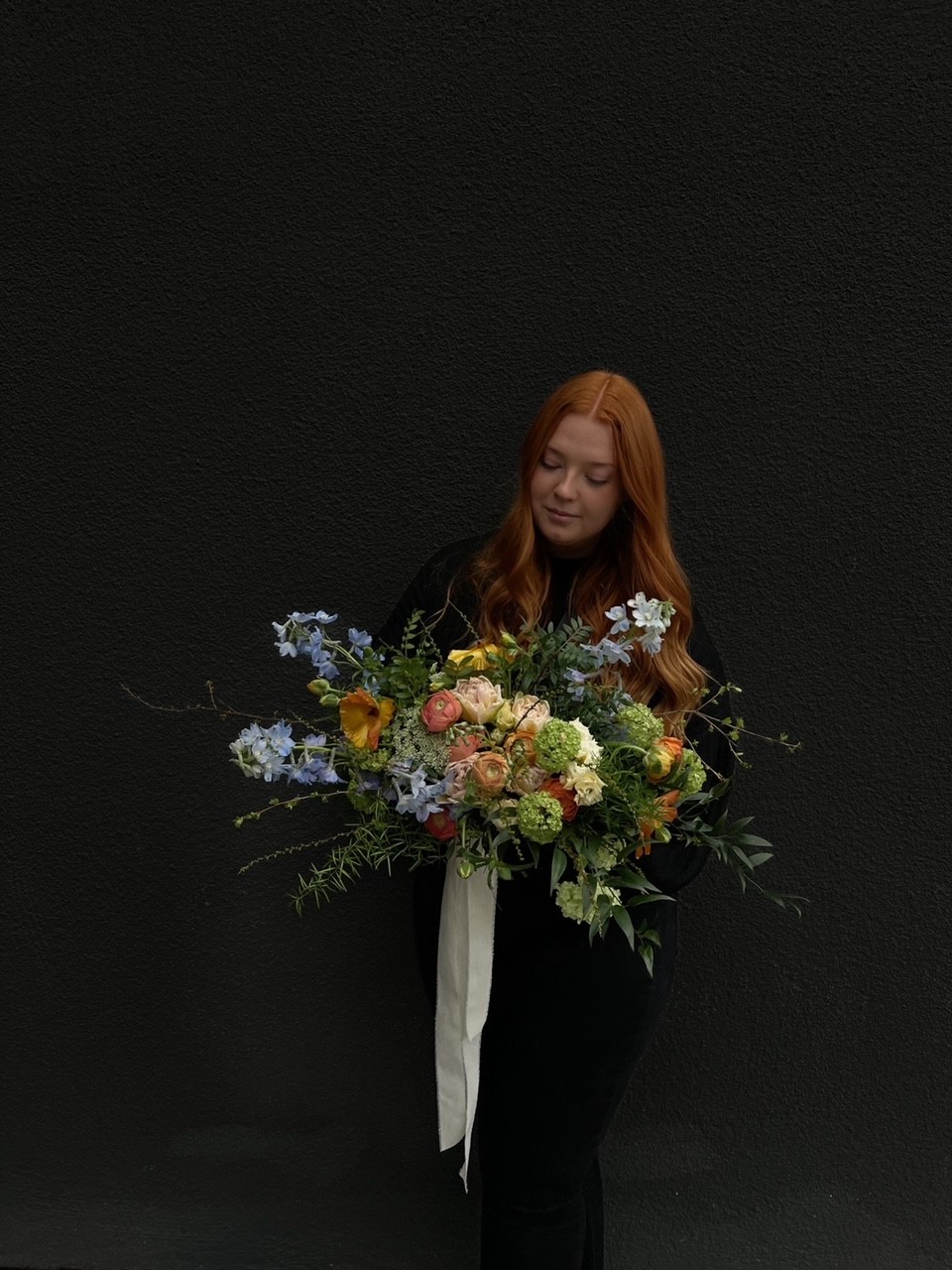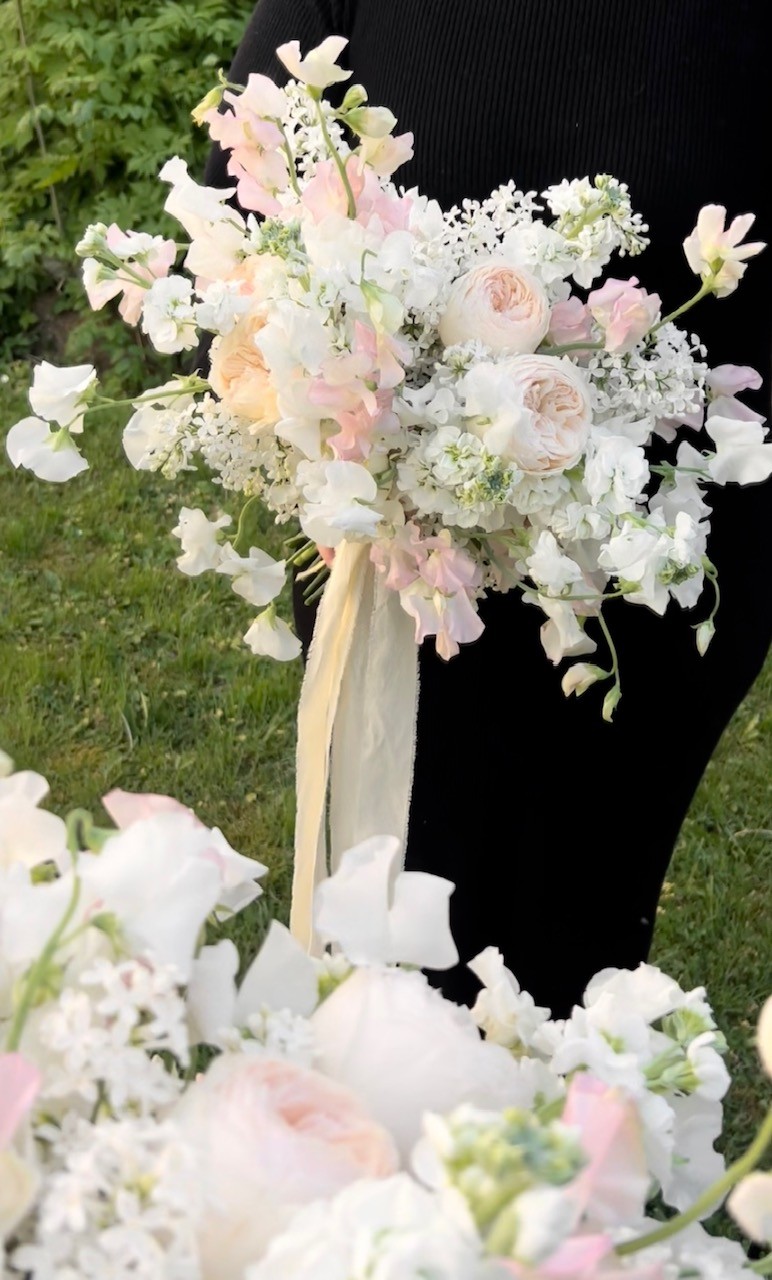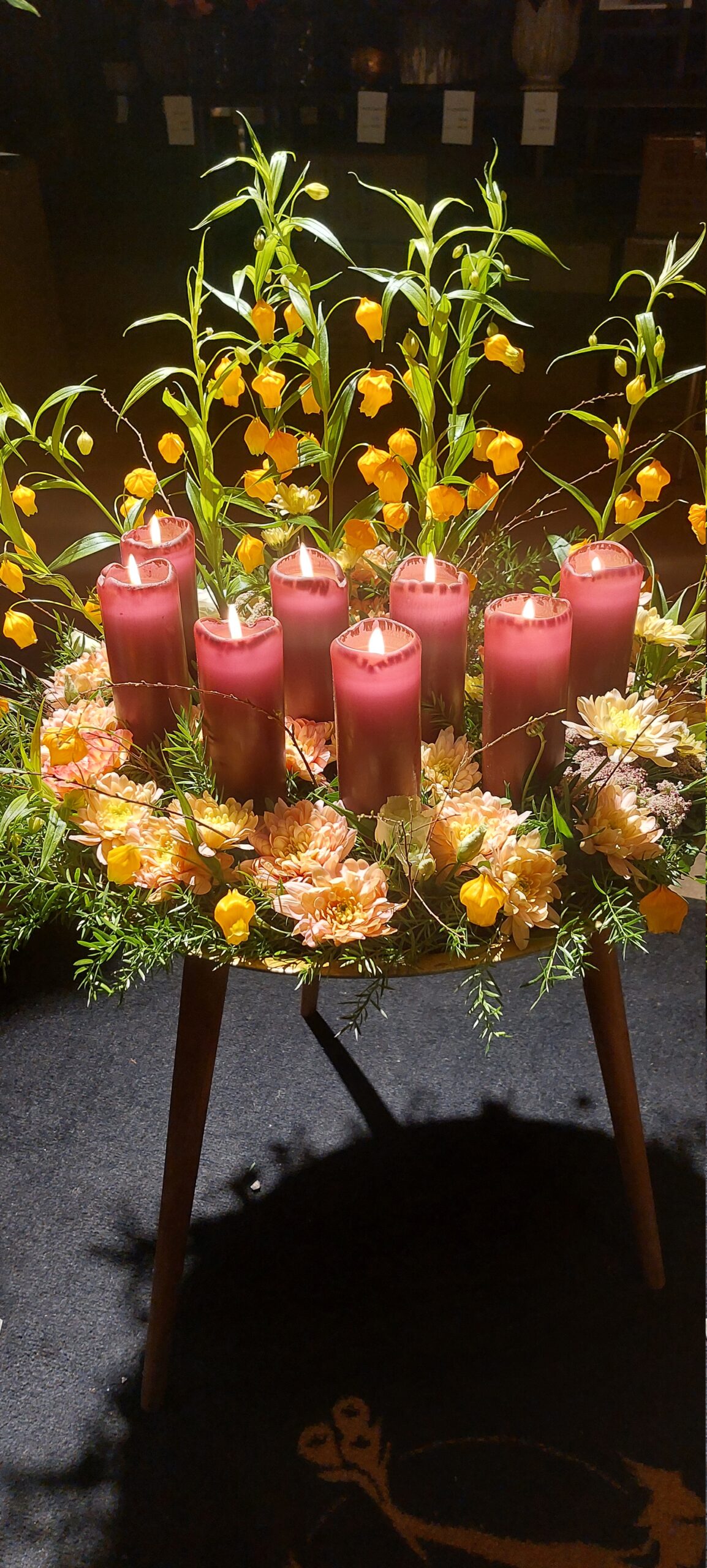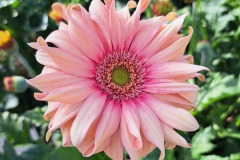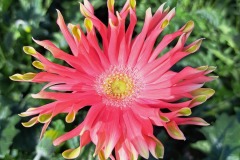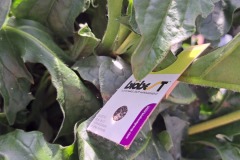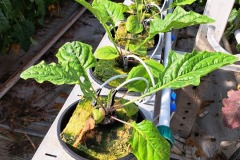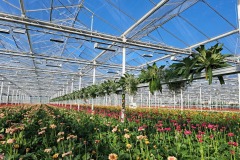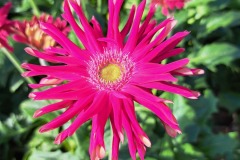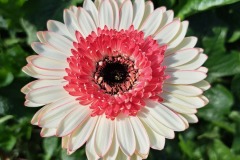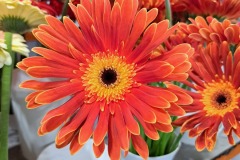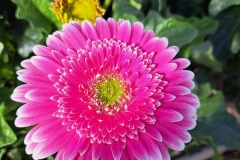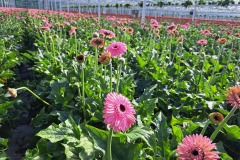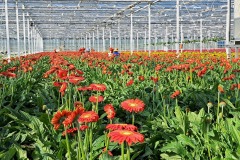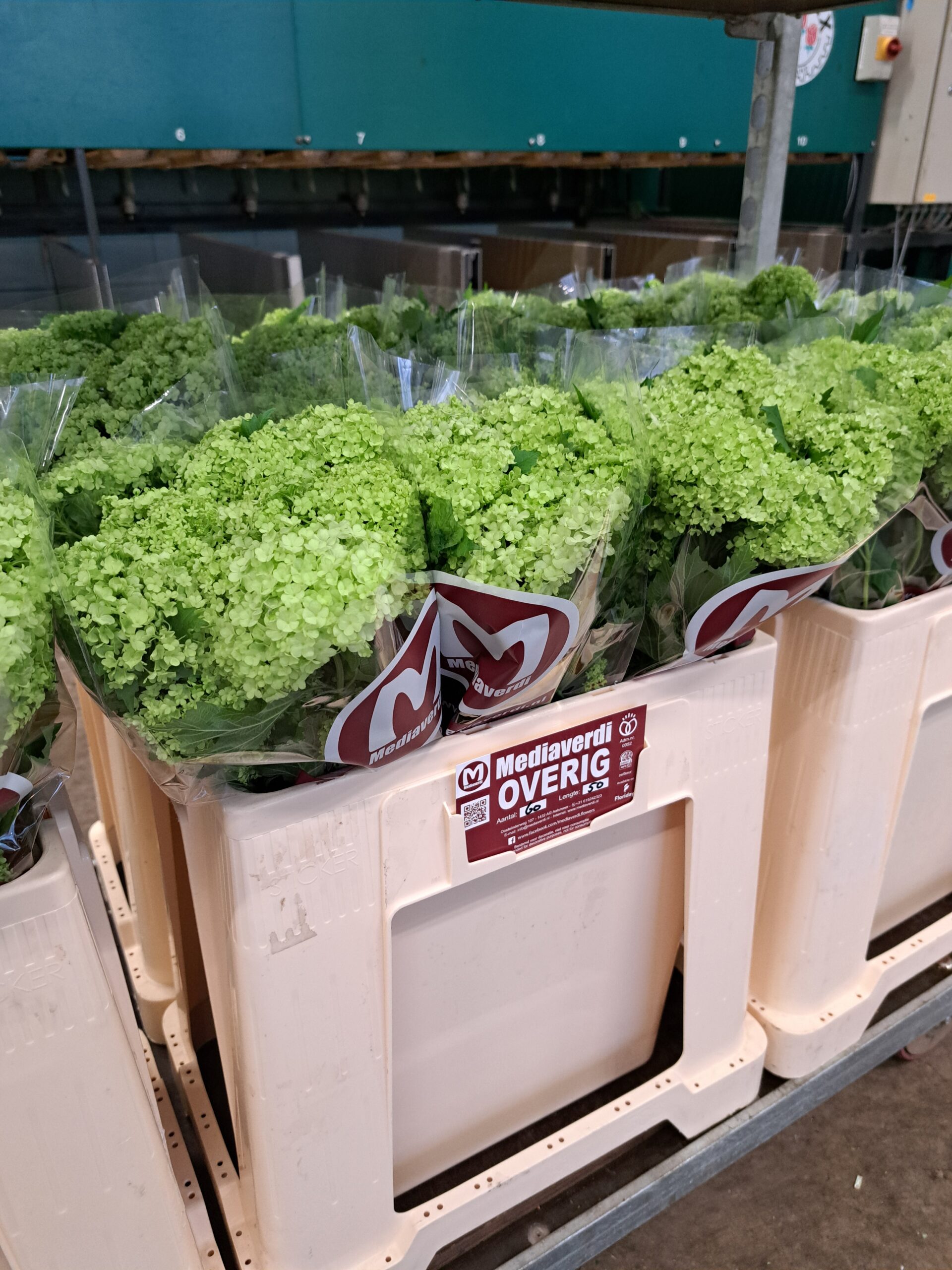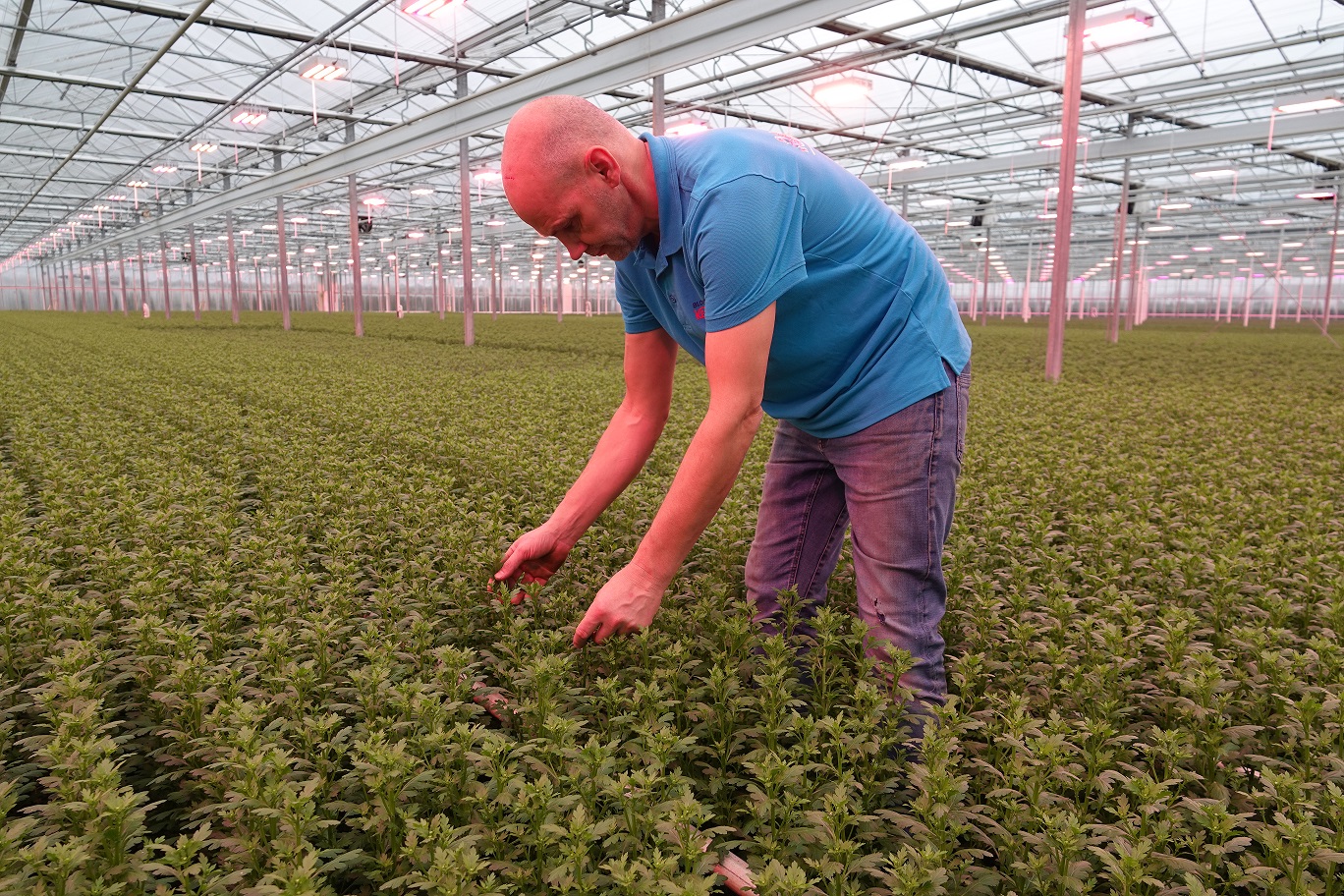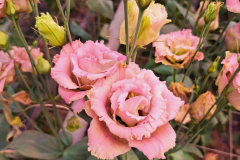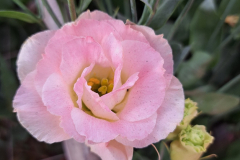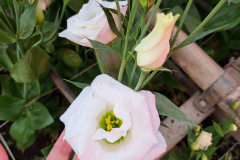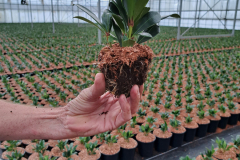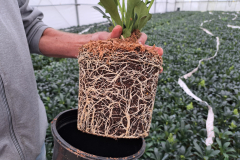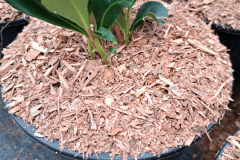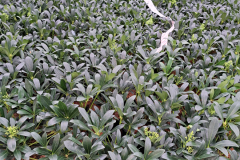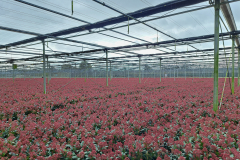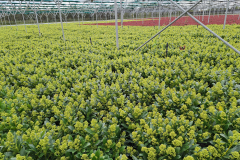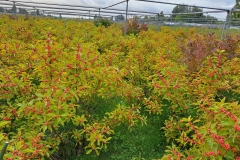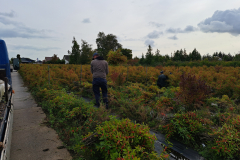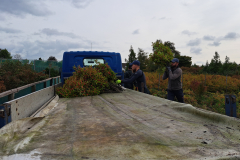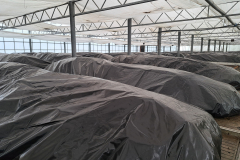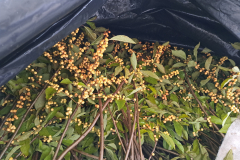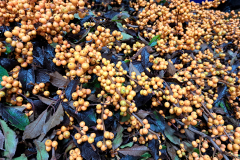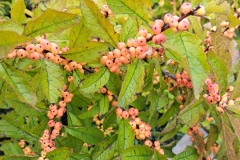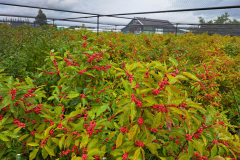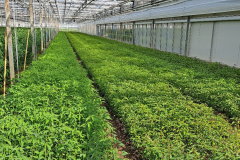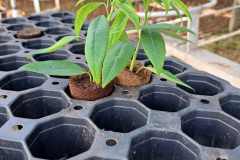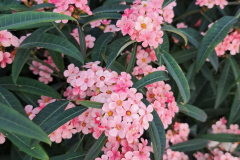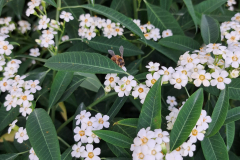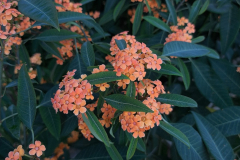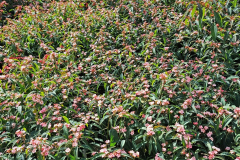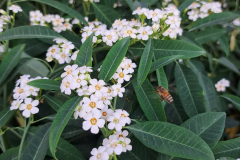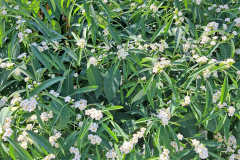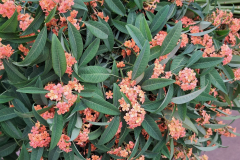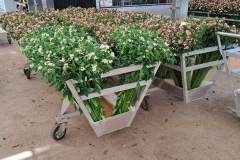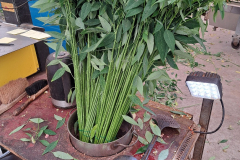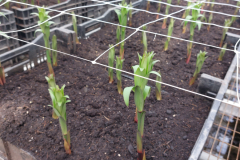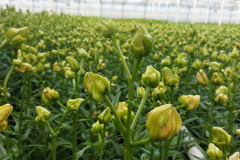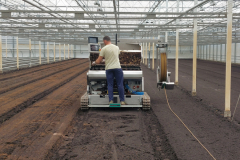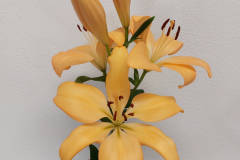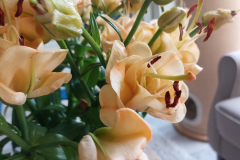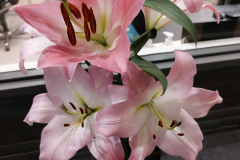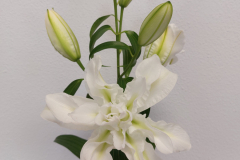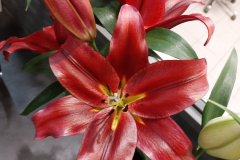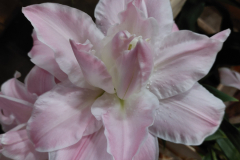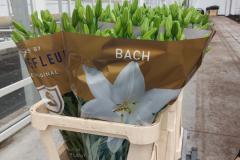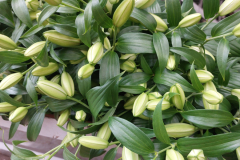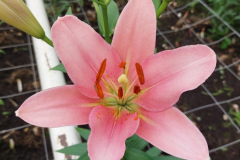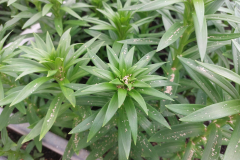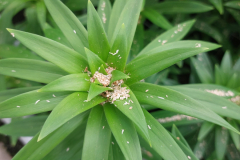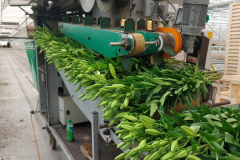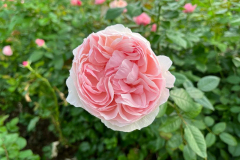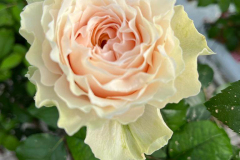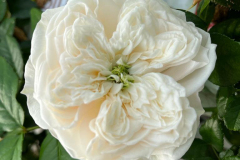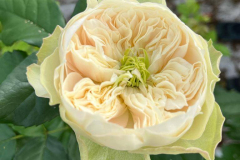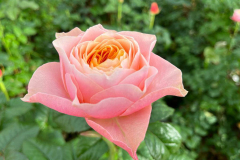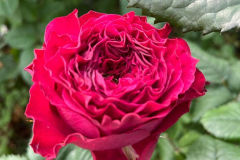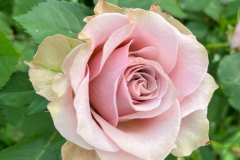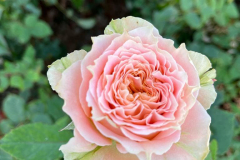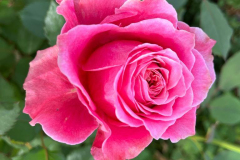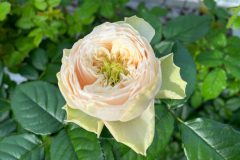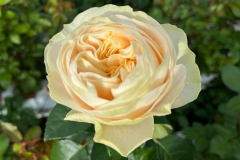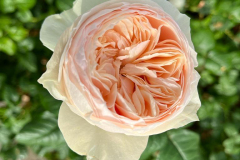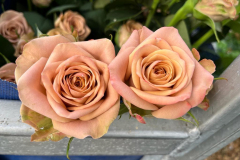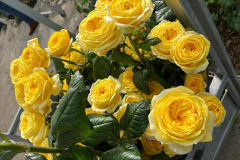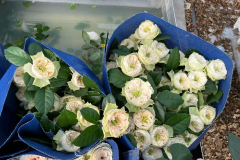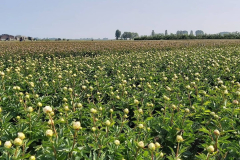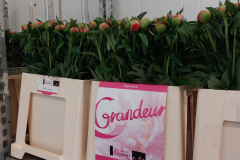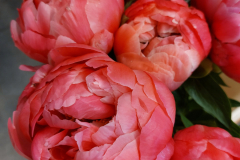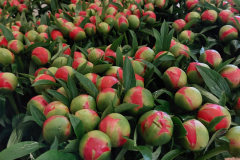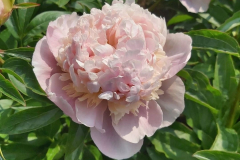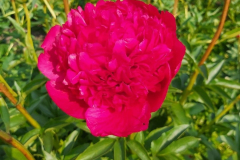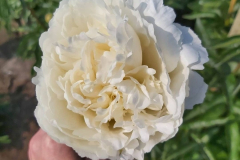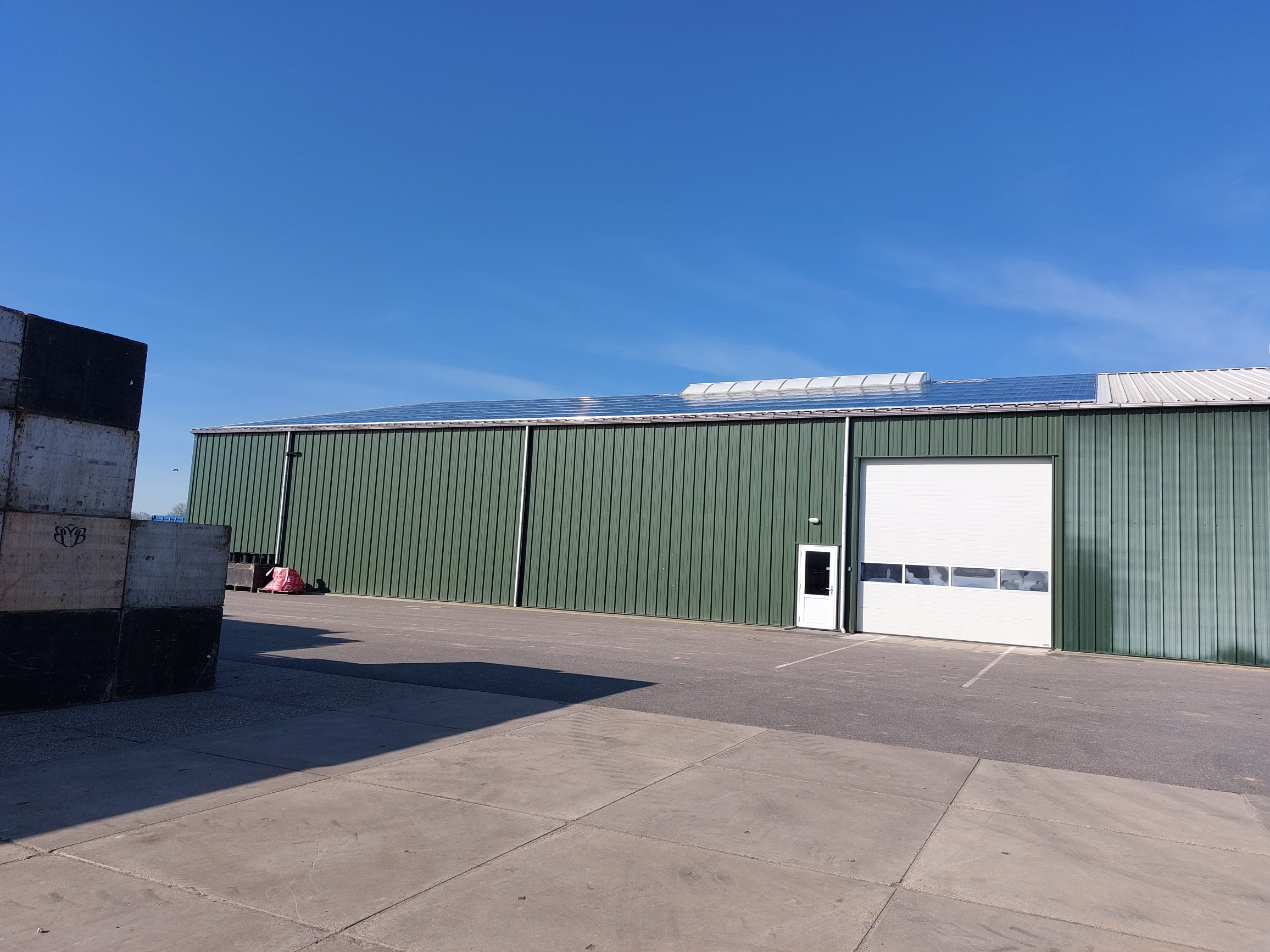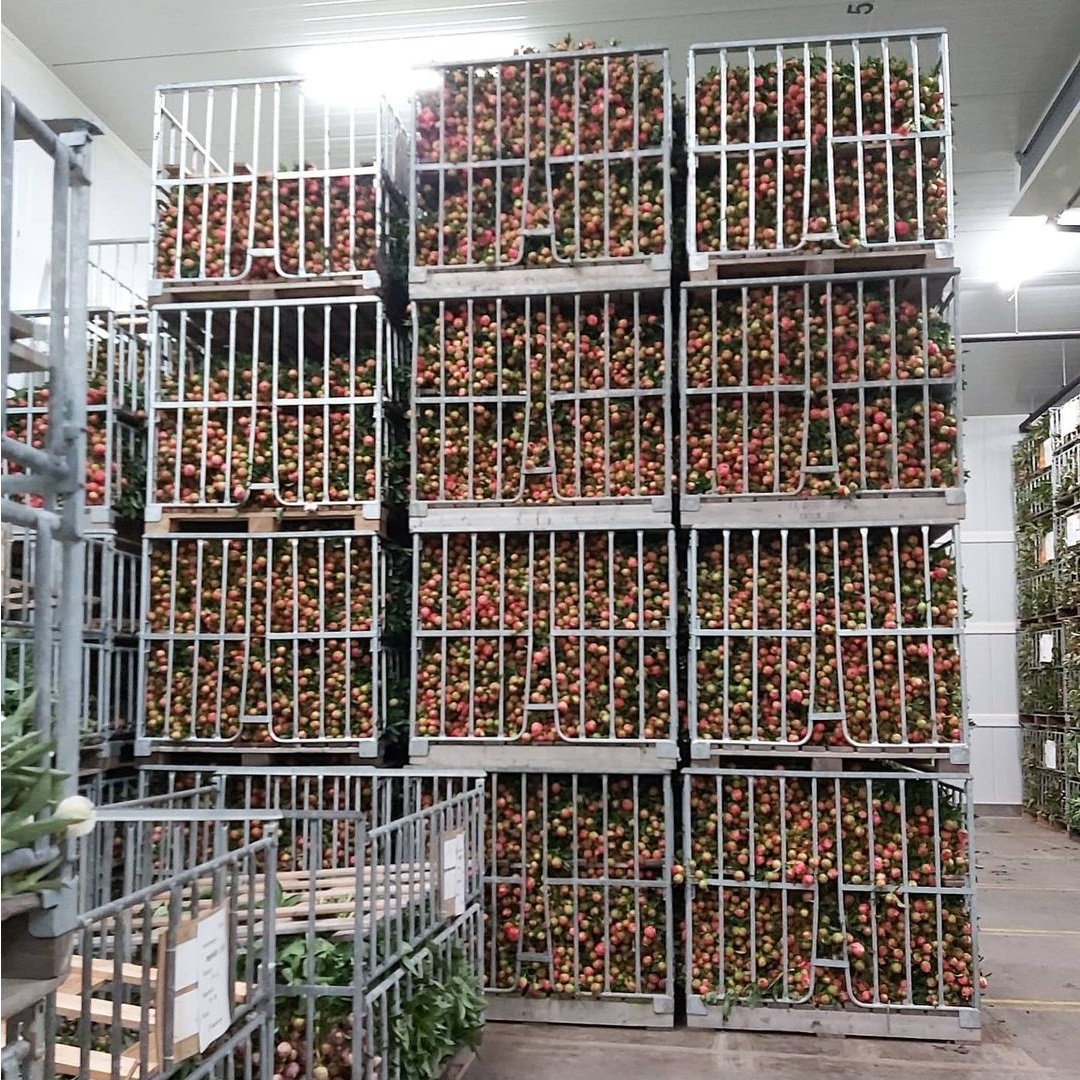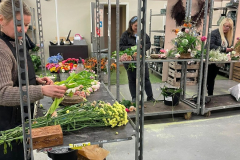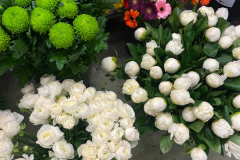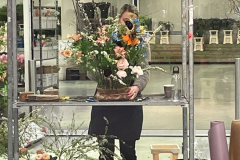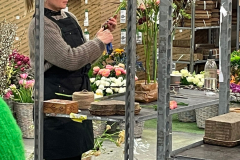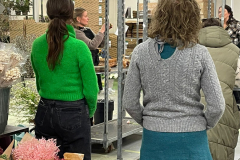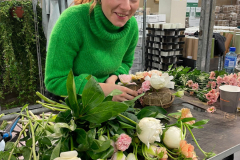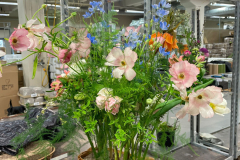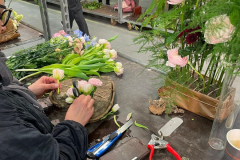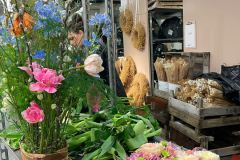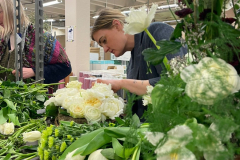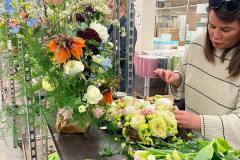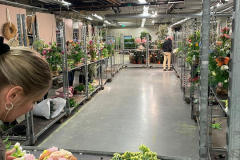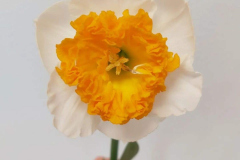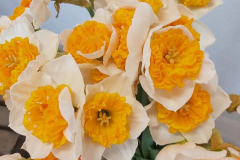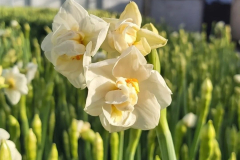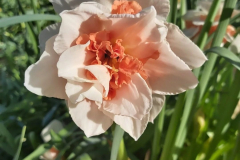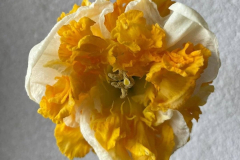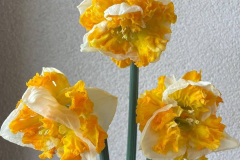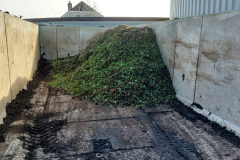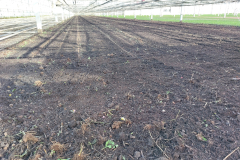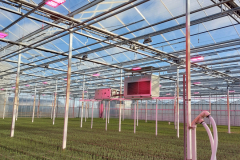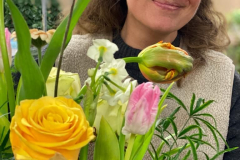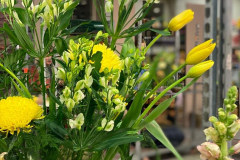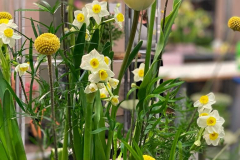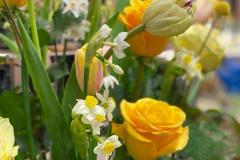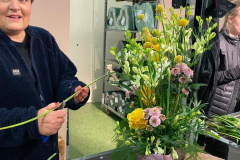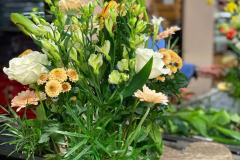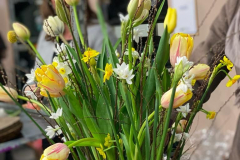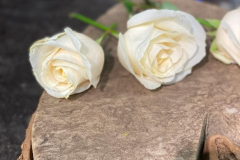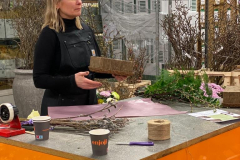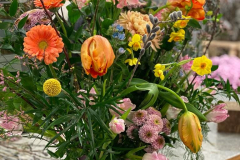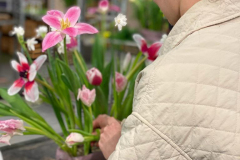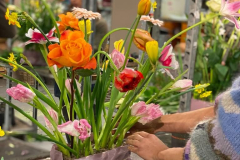Blog
FLORIST FLOWERING YOUR WORLD – Moa Edsö
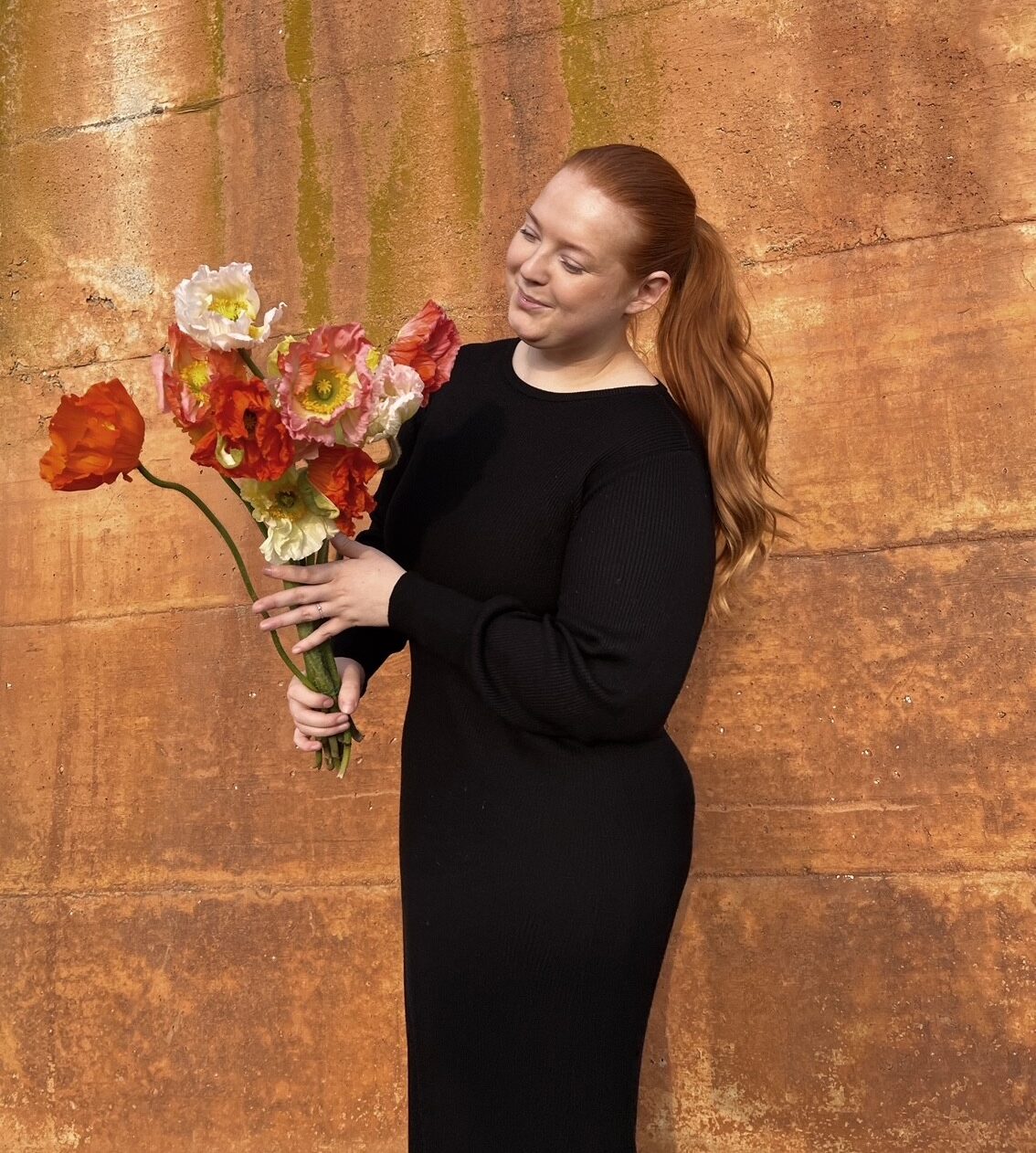
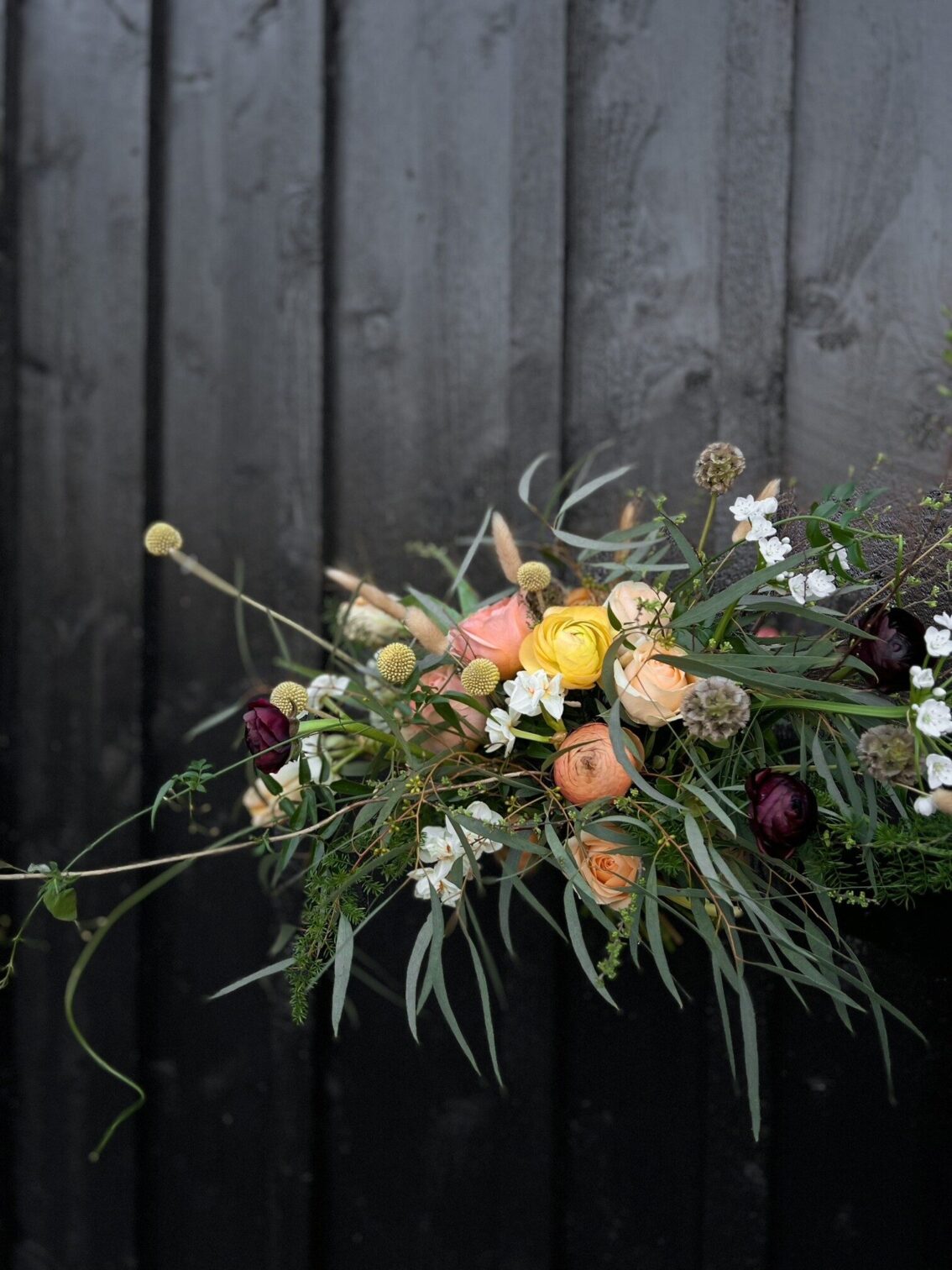
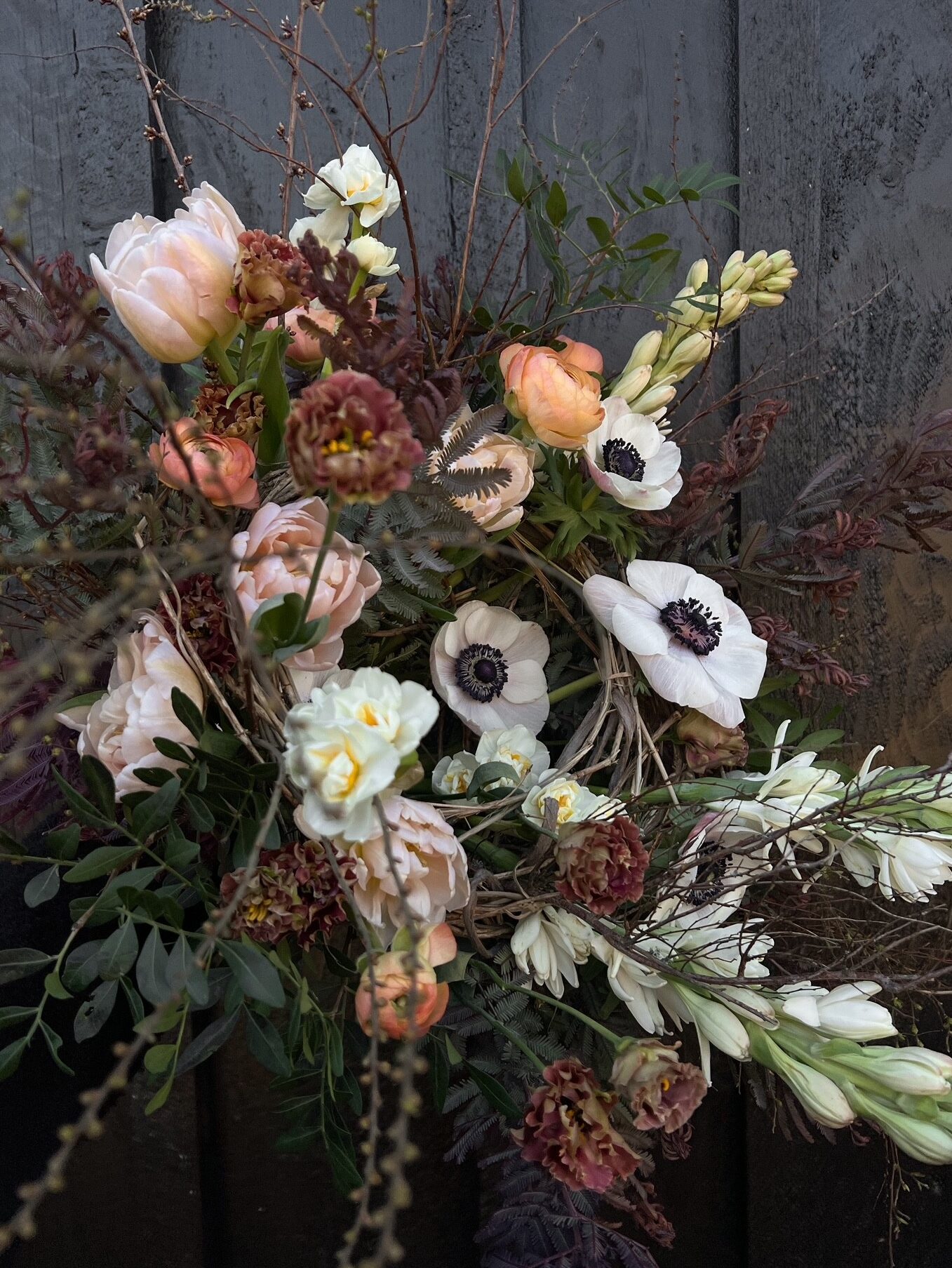
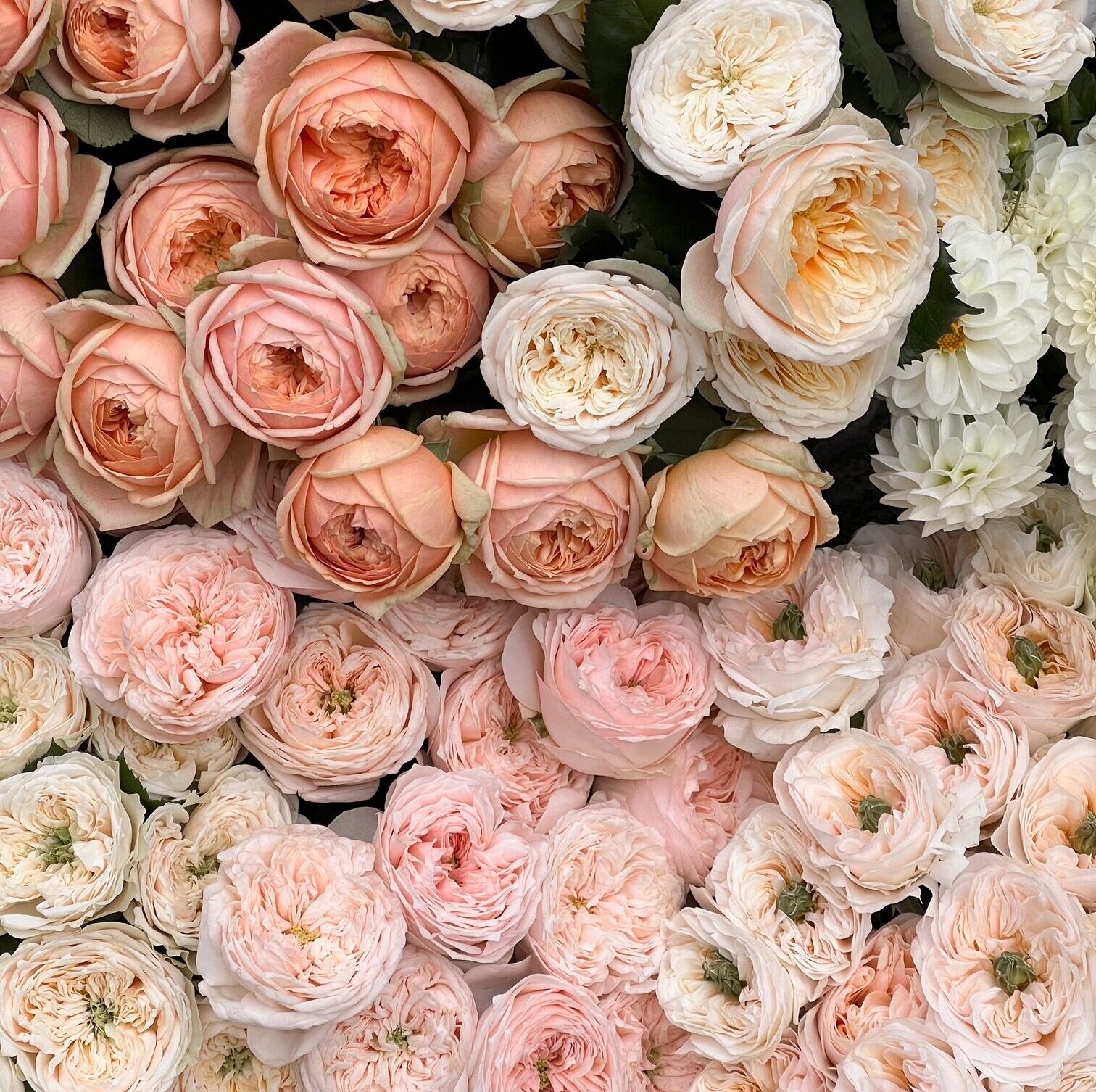
“I have enjoyed art and been creative my whole life, and here I also get the opportunity to make people happy as a bonus!”
Welcome to our interview & blog with florists, about florists, for florists. This month’s florist to present is Moa Edsö, the creative florist and driven owner of Moa’s Blommor in Karlshamn.
Why did you choose the floristry profession?
I chose to become a florist to give my artistic and creative abilities an outlet. I love working with living materials in different shapes, colours and movements. Creating with flowers is my way of creating art. When I was 20 years old, I went to a workshop at a florist with the theme of bouquets and immediately felt that this was something I wanted to work with. Even though I had known for a long time that I wanted to work with something creative, this was where it really clicked, and I knew exactly what I wanted. I have enjoyed art and been creative my whole life, and here I also get the opportunity to make people happy as a bonus! The floristry profession is really all that, fun, creative, and varied.
Did it turn out as you planned?
Somewhere it did, but not at first. When I finished my education, there were no florist jobs to look for near where I live. Then I went straight to my dream and planned to start and run something of my own. It really became a whole new world to be both a florist and a self-employed person, with everything that goes into running a company and shop.
So in the end, I followed my plan. It’s going as it should, and I’ve been really happy!
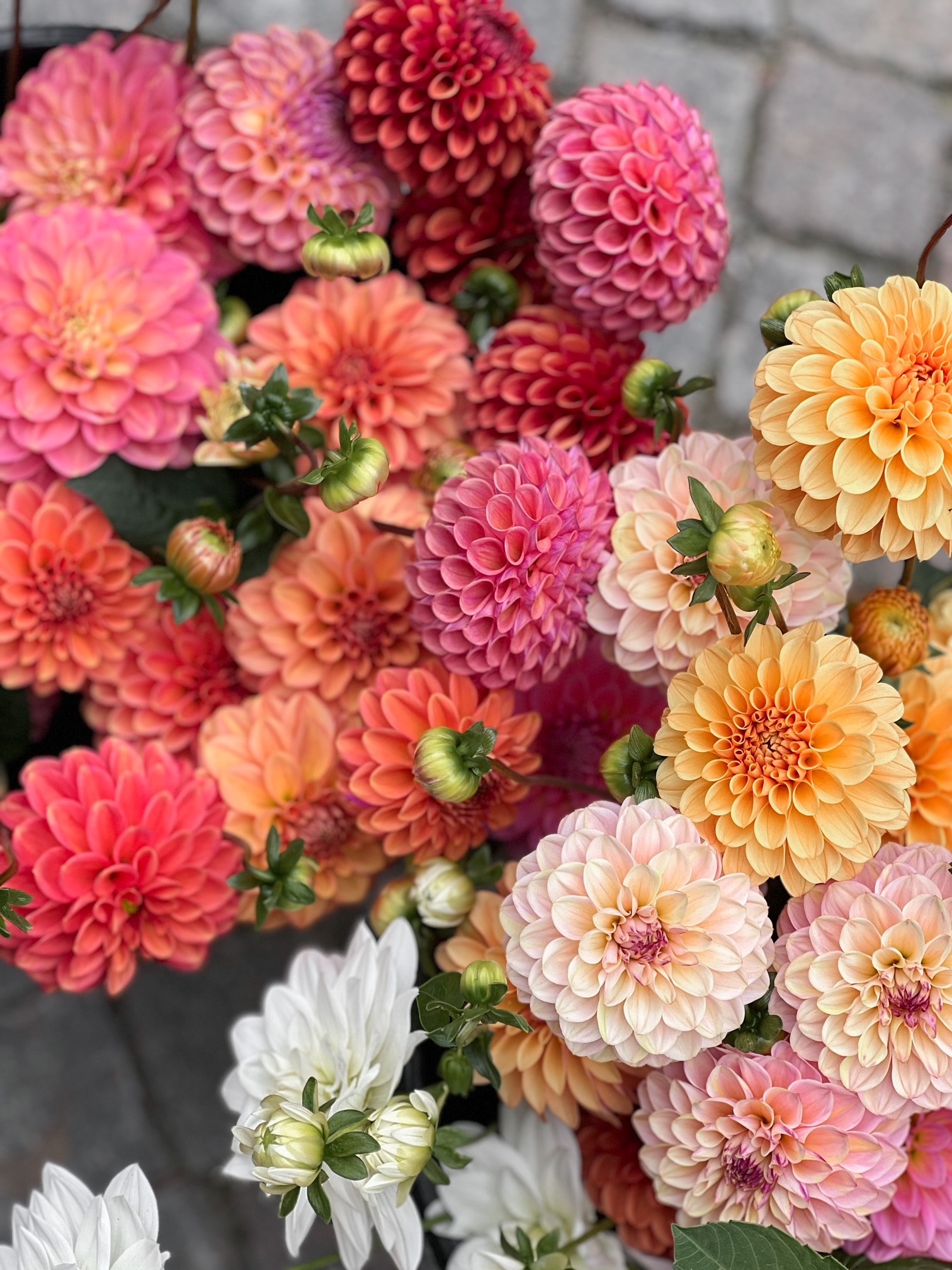
What drives you to continue developing?
Above all, my drive to constantly develop myself and my company. To constantly get a little better and get the chance to work on bigger creative projects is what keeps on pushing me forward. I want to do something more than just be a florist and run the shop. I want to inspire, compete, and would love to do bigger weddings in Sweden, and maybe in Europe too!
I get inspiration by going to workshops, competing, or going on nice florist trips like the one I recently took with you to Italy. That way I also get to meet wonderful colleagues and exchange experiences with others in the industry.
How are you as a manager/employee?
I think I’m a great manager! Now I only have myself to ask since I’m the only employee in my company. Since I work by myself, the shop has to be closed sometimes to give me the opportunity to go on inspiration and development workshops, competitions, and trips with others.
Then of course I have my family and friends who are there and help with running some errands, like going to the dump. Mom usually comes in in the afternoon and helps out a bit, like fixing a bit in the warehouse and some ground service.
How do you work more environmentally conscious?
I’m trying to reduce climate impact by planning my deliveries to the store and keeping transport down. I work without a refrigerator in the store, which is energy efficient. To work more environmentally friendly in my production, I try to work with flowers in season and buy locally grown when available. I love going to my local cut flower growers and walking around there and picking what I want!
I use more environmentally friendly cutting material as much as possible. It’s difficult to switch to it completely at the moment, but if possible, I’ll try. It’s a bit of a challenge! Then, of course, I’m very careful about sorting all the garbage that comes from deliveries, there are huge amounts of cardboard and plastic every week, so a trip to the dump is always on the agenda.
What challenges do you see ahead?
My biggest challenge will be to continue developing myself and my company, while balancing it with my private life. I hope to continue working on my dream of having more of a flower studio with a focus on weddings, funerals, events, and workshops.
It’s all about finding the right balance between work and private life!
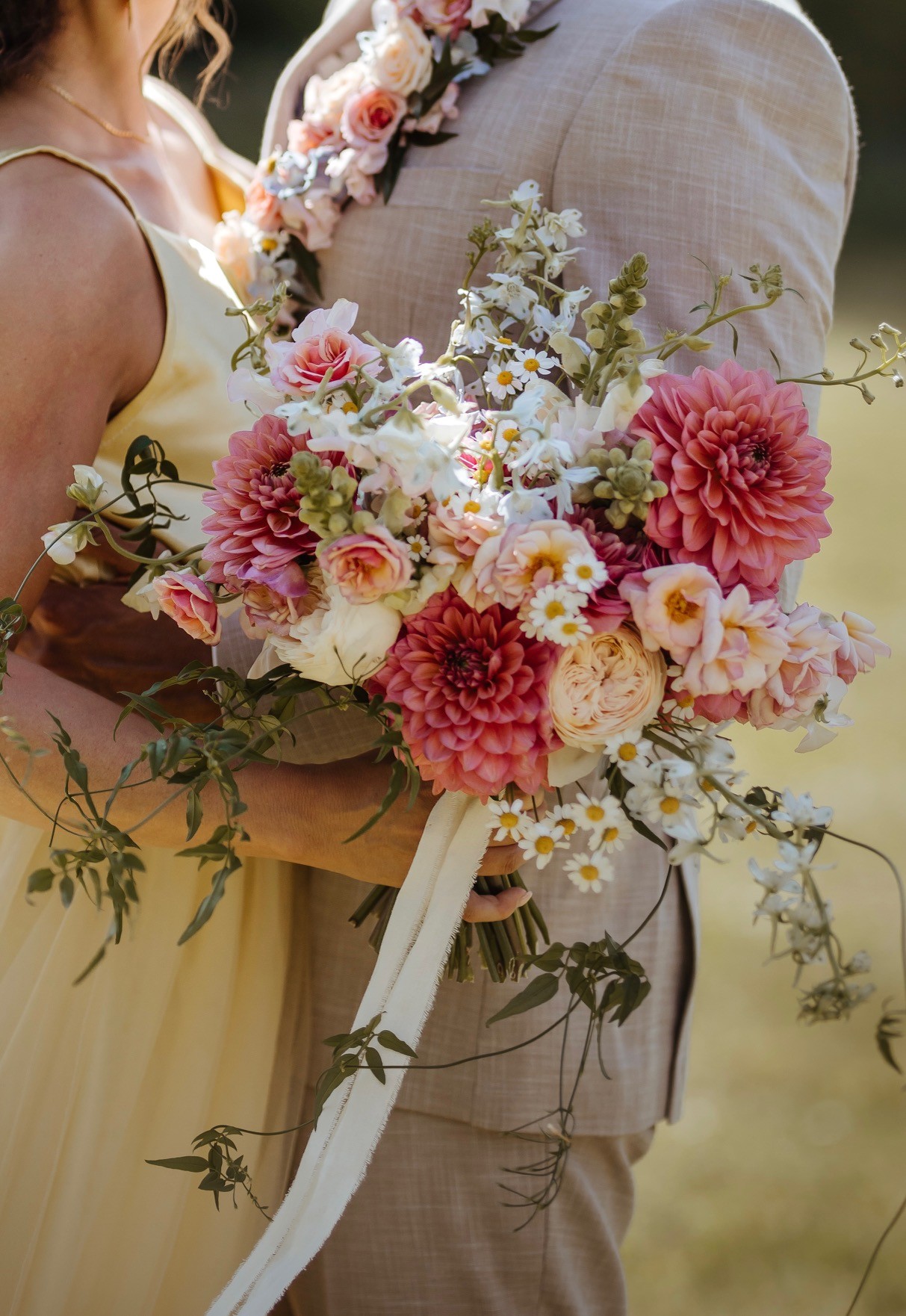
Uitgelichte blog items
Blog
FLORIST FLOWERING YOUR WORLD – Kristof Remes
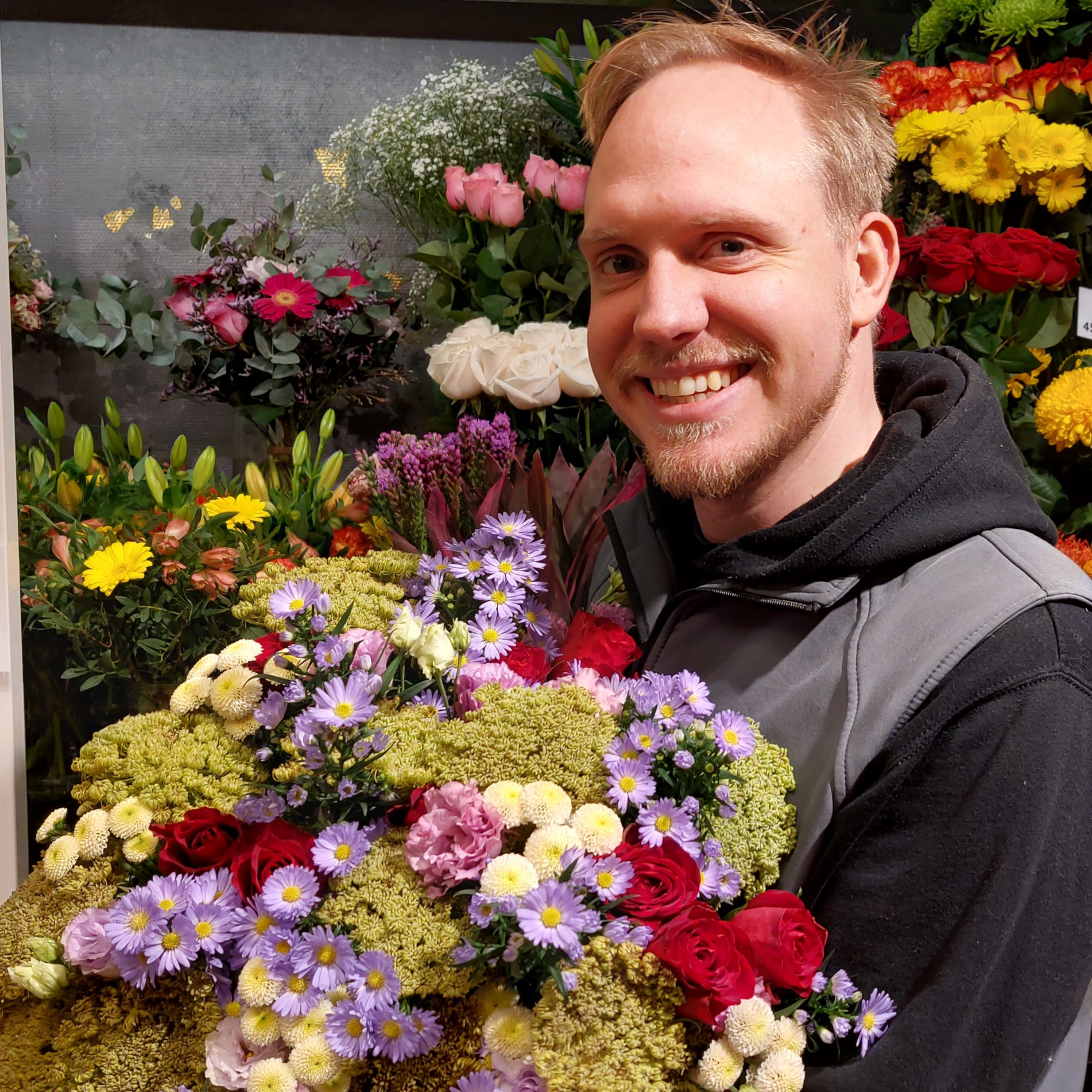
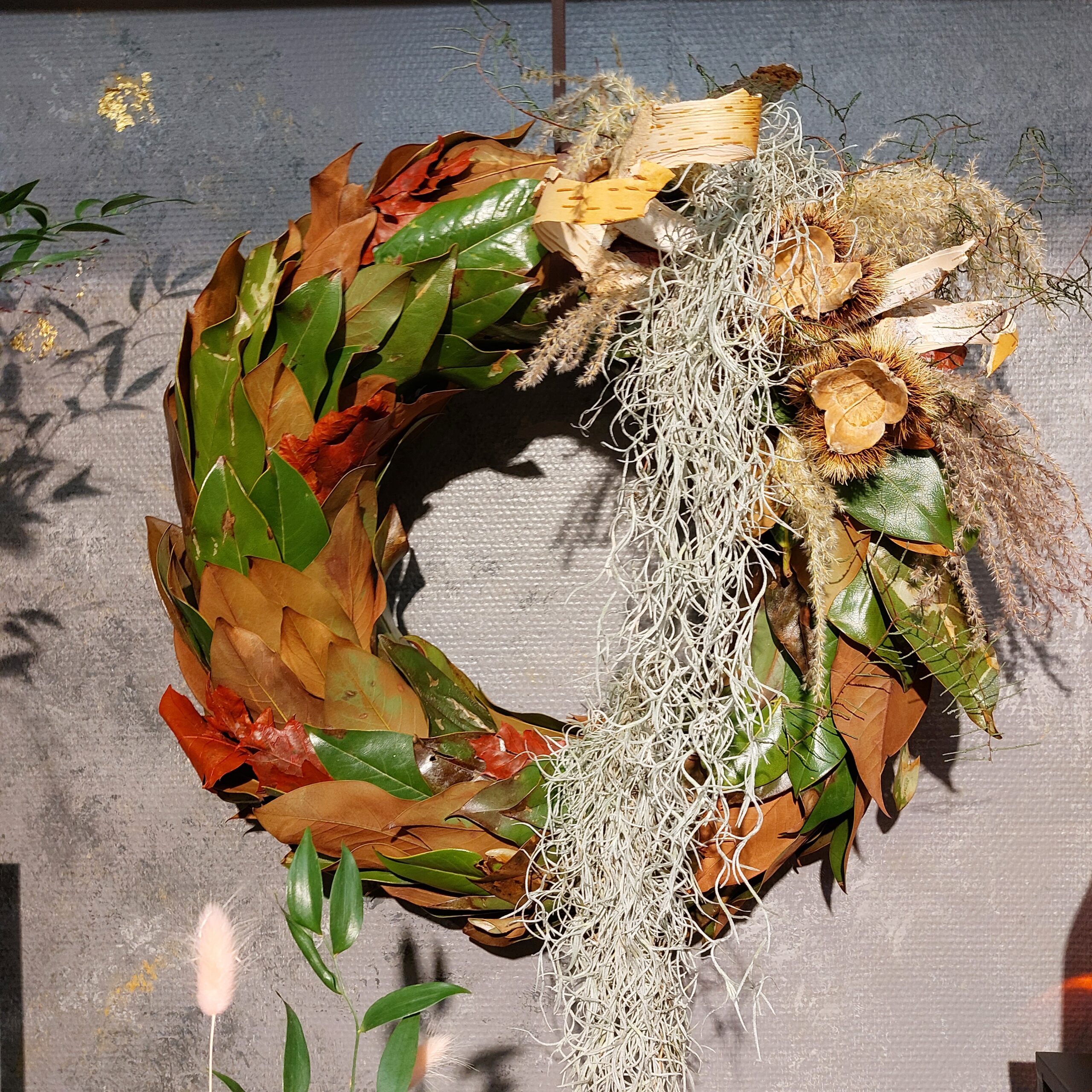
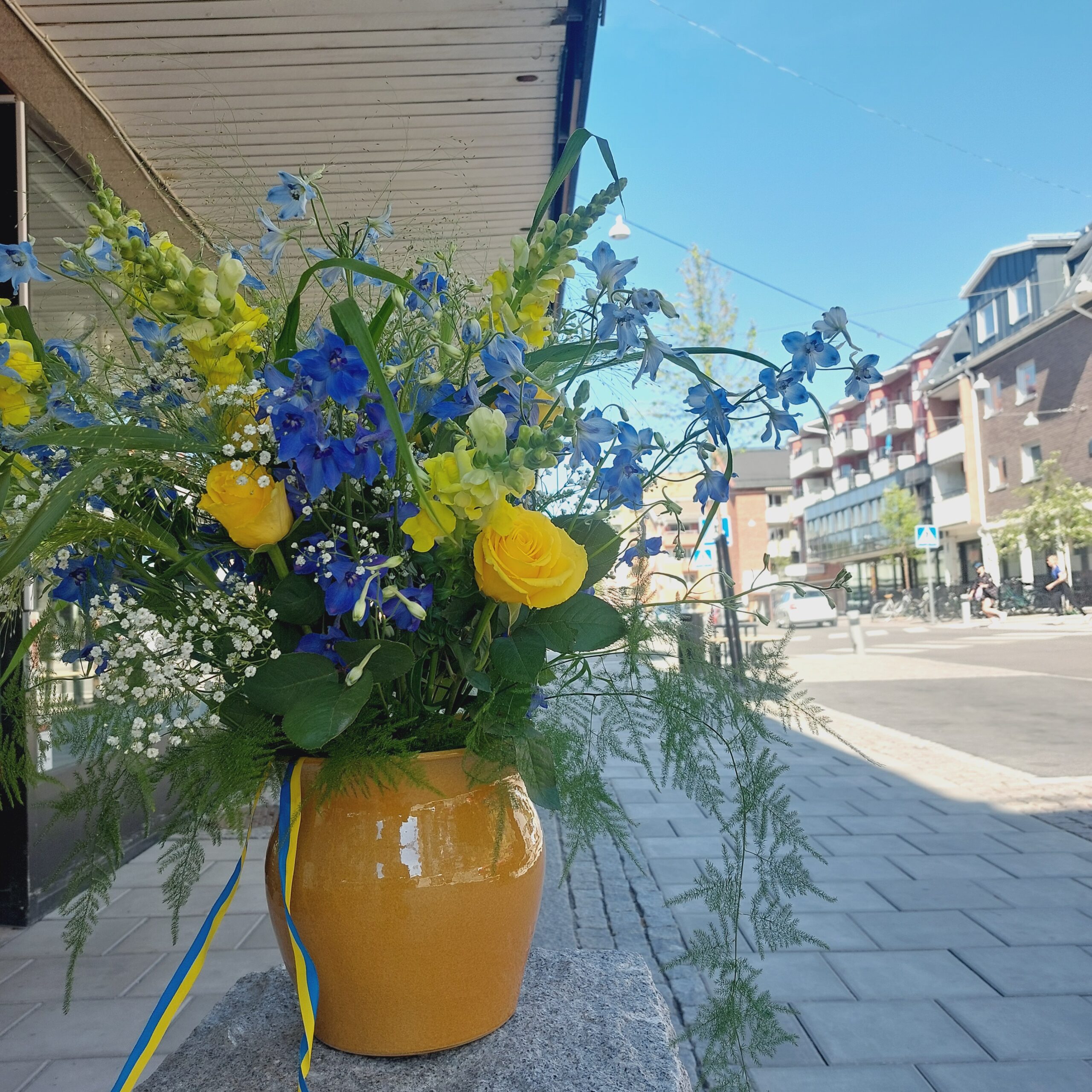
‘(This customer) was in the other week with her daughter and happily explained that “this is the flower shop” with a big smile! It’s nice and warms the heart when you hear it!’
Welcome to our interview & blog with florists, about florists, for florists. The next florist to present is Kristof Remes, a florist geek & nature lover, northerner from Skåne, who owns Kristofs Flora in Piteå since 2016.
Why did you choose the floristry?
I grew up on a farm on the countryside in Skåne and am a nature lover, but didn’t like being outside when the weather was bad.
When it came time to choose a high school, I saw that you could choose to become a florist. Perfect! Then I could choose to work with what I love – nature – but didn’t have to be outside. I chose to become a florist, inside!
After a year, I was about to drop out and just then we went with the school to Gothenburg to watch the professional WC in competitive binding. I thought that was awesome! This was what I wanted to do! It looked varied and fun! So there have been a few competitions over the years. Professional Championship two times, Professional European Championship where I won silver, and Interflora’s Championship where I won bronze in the debutant class, for example. Some with medals, and others with worse placements, but I returned richer in experience!
Did it turn out as you thought?
No! It was hard to imagine before. I Didn’t think I would end up in Norrland, Piteå as I am from Skåne, Kävlinge.
But I got a job in Luleå at Enström’s flowers. When I had worked there for a few years, I was asked if I was interested in opening a flower shop in Piteå. Whoever had been there had gone out of business so there was very little competition. It was a good opportunity for me to start something of my own and have it my way from the start. It is important to set goals. At the same time, it is important to dare to change, but not every week, but over time. Keep up with fashion but at the same time be traditional. Three roses with a bridal veil is a classic that we also get to appreciate.
The economy and profitability are of course very important. It is important to keep track of the numbers. It is a big challenge as there are many small pieces of the puzzle and many situations that affect the result. In February 2026 we will celebrate 10 years and now it is starting to turn out as I imagined.
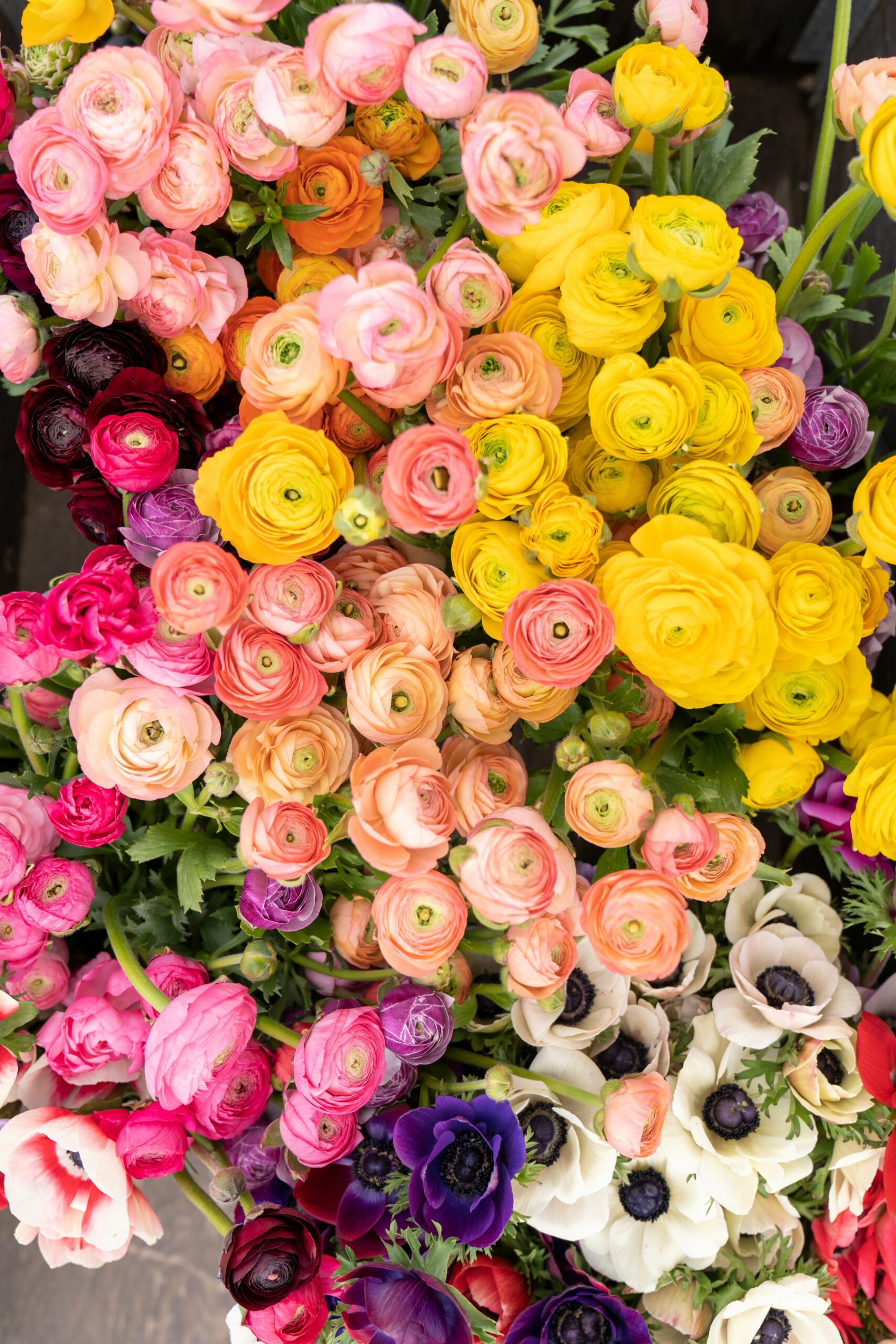
What drives you to keep developing?
To try new things! To follow up what is happening. Make a marketing strategy and follow it up with sales. It’s fun to test the ideas you get.
I think I have a social responsibility. My flower shop is part of the local community and there are expectations of us. It is both nice and at the same time a huge pressure. The flowers should be at someone’s home on the kitchen table and that is where they fulfill their function!
We have customers who come every week and want their Friday bouquet. Or some come only once a year, the week before Christmas and are going to buy their amaryllis. That’s a nice regular too. Or she who comes in once a month and buys three carnations with a sprig a little skeptically. She was in the other week with her daughter and happily explained that “this is the flower shop” with a big smile! It’s nice and warms the heart when you hear it!
How are you as a manager?
It is difficult, but I try to be a good manager. I myself have been employed by different managers in the past and I try to summarize it and take the best from each of them and take it further.
I try to see which way is best for the individual, and some things we do differently and it can work fine! I’m trying to have the best interests of the staff in mind.
I make schedules so that everyone gets the best out of the week by, for example, keeping full days even for part-time and not just adding an hour here and there. It makes sure that everyone gets to do everything so that there is a rotation of chores. I check with everyone, so that everyone is in agreement.
In trade, every hour has to be as efficient as possible, but I think it’s more important that you have continuity for the employees.
How do you work to be more environmentally conscious?
That’s the hard part. For example, we work with Fiber Floral instead of regular oasis in 95% of our funeral binders. It is a bit problematic with higher decorations. Maybe a customer will transport it himself in a car for a longer distance, for example. Then it might be better to use the old knitting compound so you know it holds together.
Then you can ask how much it does for the environment. It may not use any plastic, but it still uses a lot of energy. We will see the results in a few years.
We tie the bouquets with jute or twine. We use less steel wire and steel clamps. For the ribbons we use bamboo grill skewers, and the ribbons we have are degradable as they are made of starch.
It’s hard to find the right thing in the jungle, but we try to choose growers and retailers who work more sustainably.
What challenges do you see ahead?
The environment is a big point. The competence and craftsmanship are probably the most difficult. To find trained personnel who want to work. Many want it as a hobby, but someone has to tie the bouquets and someone has to wash the vases. The craft professions are difficult to find competent personnel for. You can teach people in the shop, but the deep craft knowledge is gained at the school desk.
I hope there will be more training in the country. There are good florist training courses in Sweden, but more are needed to meet the demand for well-educated florists with a focus on the craft and who want to help drive development forward. You can’t live on nostalgia.
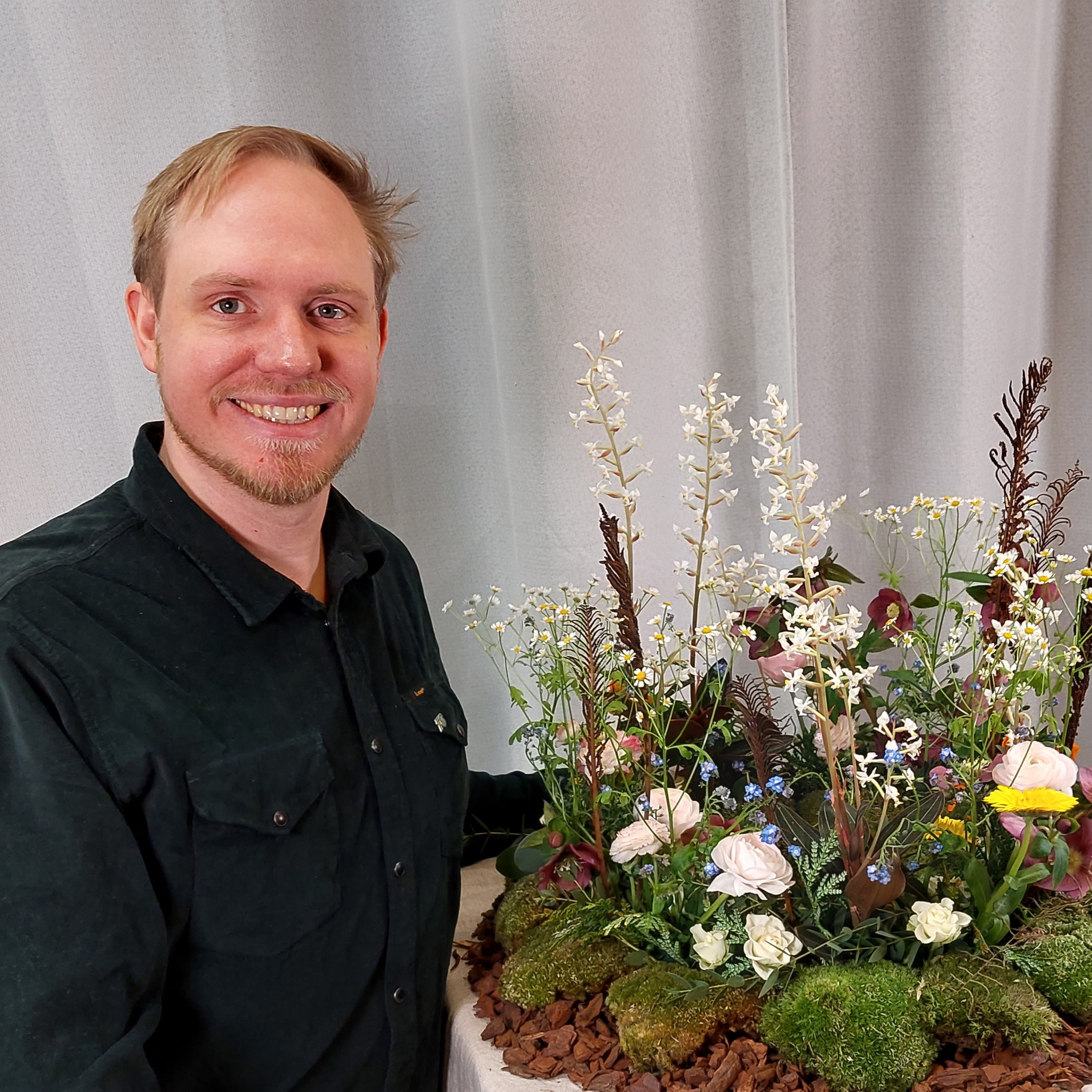
Uitgelichte blog items
Blog
FLORIST FLOWERING YOUR WORLD – Jessica Öhrström
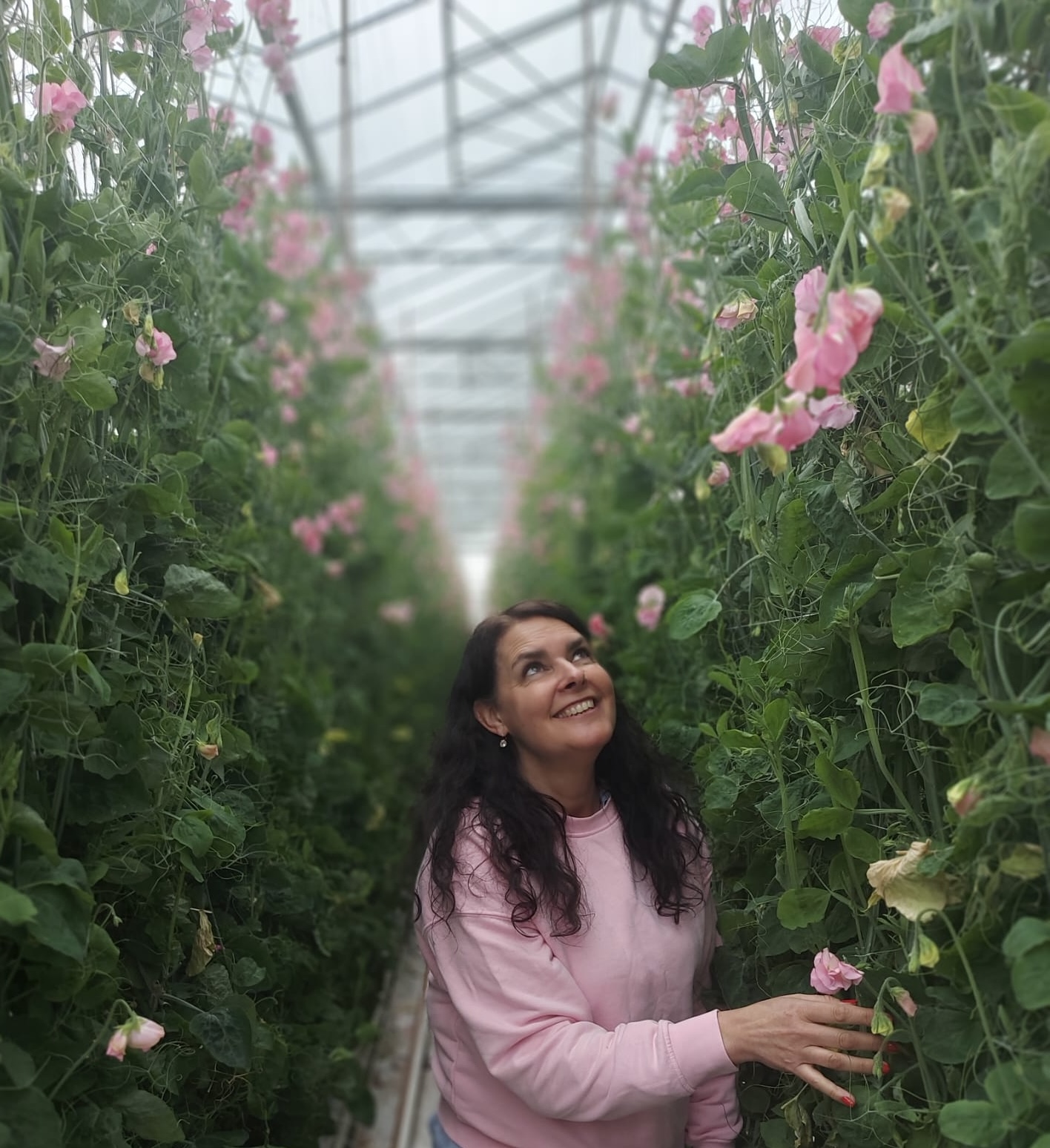
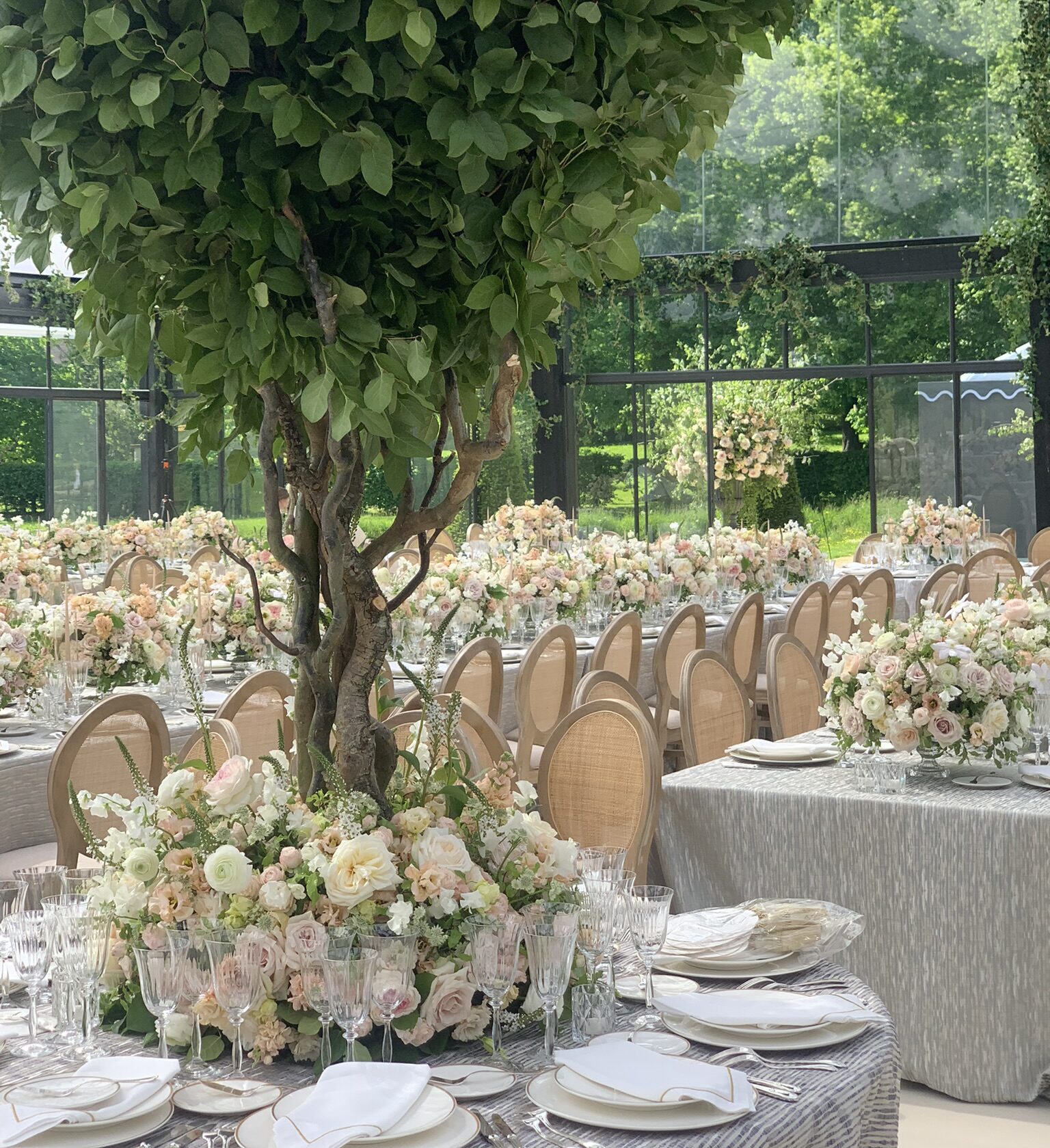
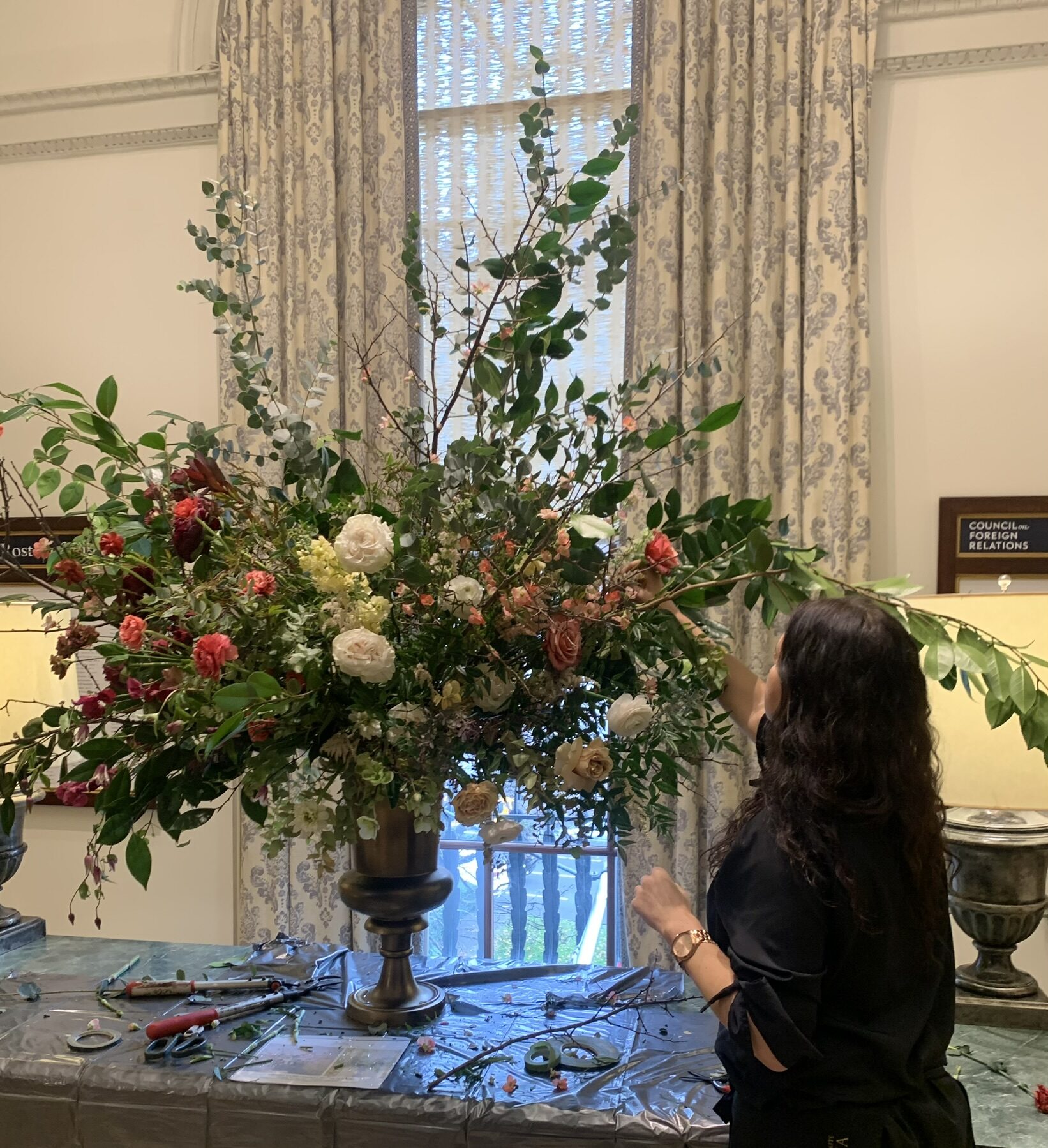
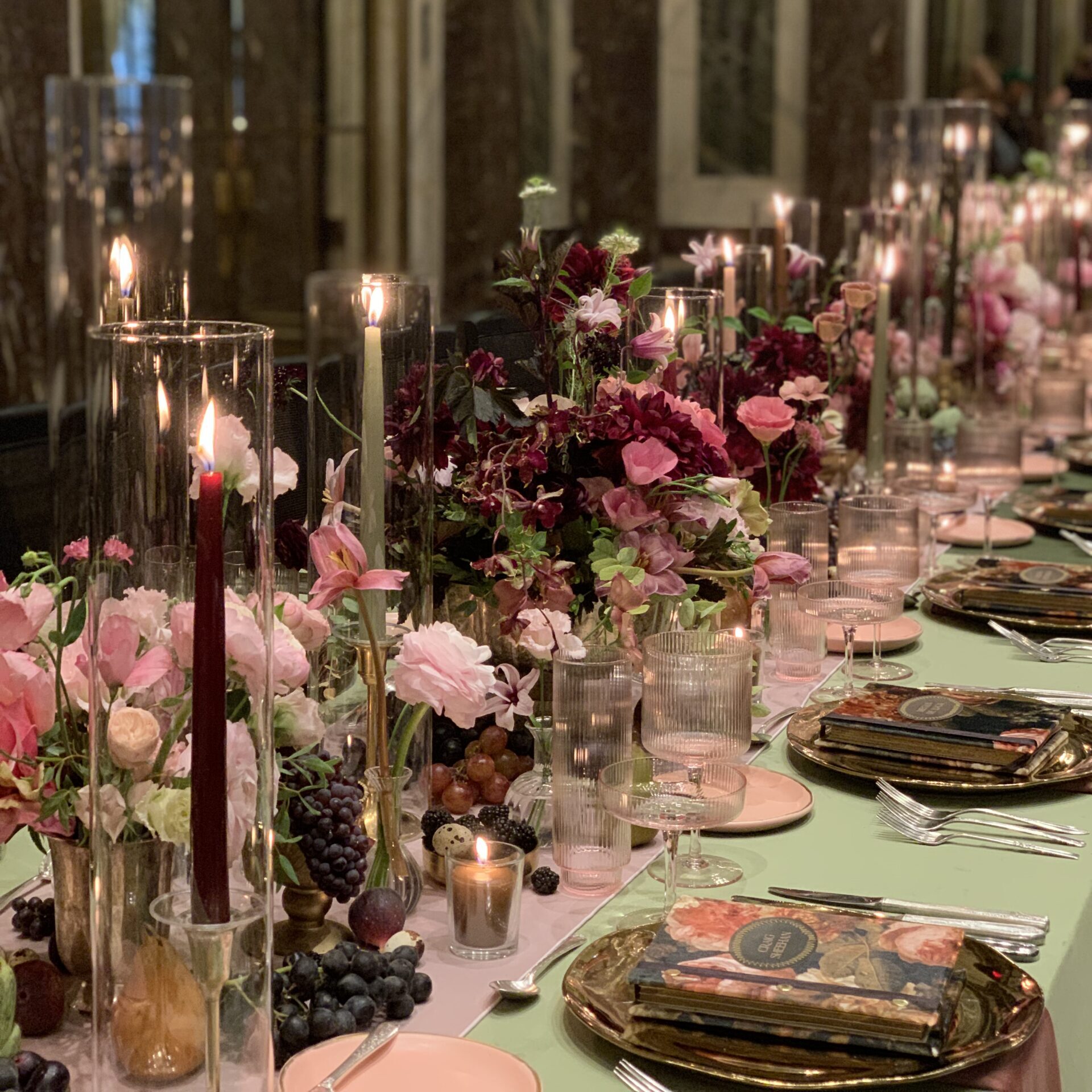
“Today, I think I got the best of both worlds.”
Welcome to our interview and blog with florists, about florists, for florists.
The next florist to be featured is Jessica Öhrström, who works as a freelance florist and is self-employed, and the driving force behind “7 of a kind Floral Design”.
Why did you choose the florist profession?
I was almost literally born in a greenhouse in Skåne.
Grandma, grandpa and my mother ran a flower shop and garden centre together throughout my childhood. Their greenhouse was a well-visited excursion destination and there was room for both exotic plants, cut flowers, puppies, and a parrot that could talk. The best thing I knew was going to the flower market with my grandfather, and when me and my brother got to “help out” to decorate Christmas wreaths, write funeral cards on grandfather´s old type writer and learn how to thorn off roses. I dreamed of going to Ingvar Strandh’s Flower School in Oxie one day, and getting educated myself to be a florist for real!
But that didn’t happen at the time. There were some professionally winding detours before I found my way back to flowers as a full-time occupation in adulthood…
I have always loved to travel and worked for many years as a flight attendant at SAS and after that, designed and developed store concepts in the fashion industry with a focus on sustainability. I have also run my own company in this. I later trained at Floristutbildarna in Stockholm. The travel nerve took me to New York and I did my internship with Ingrid Carozzi at Tin Can Studios. The first assignment I got to work on during the internship was Time Magazine’s gala for “Person of the year” and I remember wondering if it was really happening.
I had been home in Stockholm for a week or so, when Ingrid called and asked if I wanted to come back and be an apprentice with her. It was the best decision I have ever taken on a purely professional level. I could never have dreamed of having a better mentor! That is now a few years ago, and now I work in Ingrid’s team at Tin Can and have made so many great friends there. Ingrid’s expression, colour thinking, view of shape, and courage are completely unique, and it’s is really a treat to be able to work like that.
Today, I think I got the best of both worlds. I still get to travel around the world (as I did as a flight attendant) – now as a florist. I’ve got to work on absolutely fantastic projects, both in my own name and for other designers in both the US, Italy, and France.
Did it turn out as you thought?
Yes! It was even more amazing than I could ever have dreamed of! I’m so grateful that I got a second chance at a new career. I think it was meant to be- I love flying and I love flowers!
I almost get tearful very often and have to pinch myself in the arm to really understand what fantastic events and environments I get to be part of creating. This summer I’ve been working a lot in Italy, and it’s been great fun. I think everything I do is fun, the small and the big. It doesn’t matter if it’s a wedding with 10 or 250 guests.
It may seem glamorous to work on events abroad, but it is important to know that the working conditions are completely different from those in Sweden and the contracts are often a bit “fuzzy”. It is physically very challenging and often there is a lack of safety measures. The days are incredibly long and often many in a row – and there is hardly any time for recovery. Sometimes I work around the clock on high ladders in 35 degrees heat, with only 15 minutes for lunch etc.
I think it is important to nuance the picture and the incredibly hard work that lies behind everything we do in our industry. Especially to people who are not in the industry. Many believe that we just “do crafts and cuddle a little with flowers”. Taking care of goods, washing buckets, and scraping off candle wax from wedding candlesticks for a whole day is rarely seen.

What drives you to continue to develop?
I think I have to answer to my curiosity. I’m curious! Very curious!
I love meeting new people in different environments, forming teams with people I never met before, sometimes from completely different cultures. And then to create together.
I think I’m learning new things all the time; different ways of thinking about design, environmental work, technology, and construction. There is so much for everyone to gain and learn by sharing their experience and helping each other instead of seeing each other as competitors.
What are you like as a manager/employee?
I both freelance for other designers and do my own projects, which means that sometimes I’m a “boss” and sometimes an employee. I can’t really decide what I like best. The combination suits me well at the moment!
I believe and hope that both as an employee and as a manager I am responsive and empathetic. As a manager, I try to be clear about my vision and want the people I work with to know, that we are a team in which everyone is equally important and that we work together towards the same goal.
How do you work more environmentally conscious?
I always try to have environmental thinking in focus. And I work almost exclusively with sustainable methods and reusable mechanics, which can often be both more time-consuming and challenging. Especially in large-scale installations. But also more fun! I think it’s fun to figure out how to build a structure from scratch in the most sustainable way possible.
There is so much we can learn from each other when it comes to environmental work. We must be brave enough to ask for more information. Sharing with each other is key to keep the environmental work moving forward.
I often ask other florists how they work and with what techniques, which local growers they use, etc. I try to buy locally grown and locally produced in season when there is access and opportunity.
What challenges do you see ahead?
At the risk of repeating myself, I am passionate about environmental thinking! We need to talk more about it and help each other to find good sustainable methods that work in practical terms in everyday life! This applies not only to our industry, but to society as a whole.
It is not easy, as it is sometimes both more time-consuming and even more expensive to choose wisely. It’s difficult to reconcile this with recession and the fluctuating economy in both small and large contexts.
For example, is it reasonable that you can get certain flowers almost all year round? I think there is a charm in the seasons, and that it is wonderful that the range changes during the year. We must work together for a more sustainable future.
A more personal challenge in the future will be trying to develop my business and work more at home. And think about what I should do to get a better work-life balance. It has been a few tiring years with more work abroad than at home, and a lot of time away from my family.
At the same time, I’m enormously grateful, of course! I think everything is fun and I’ve been lucky to do what I like so much!
As I said, I’m curious, very curious about most things and love to work with flowers!
Uitgelichte blog items
Blog
Exclusive Gerbera from Kwekerij de Zuidplas
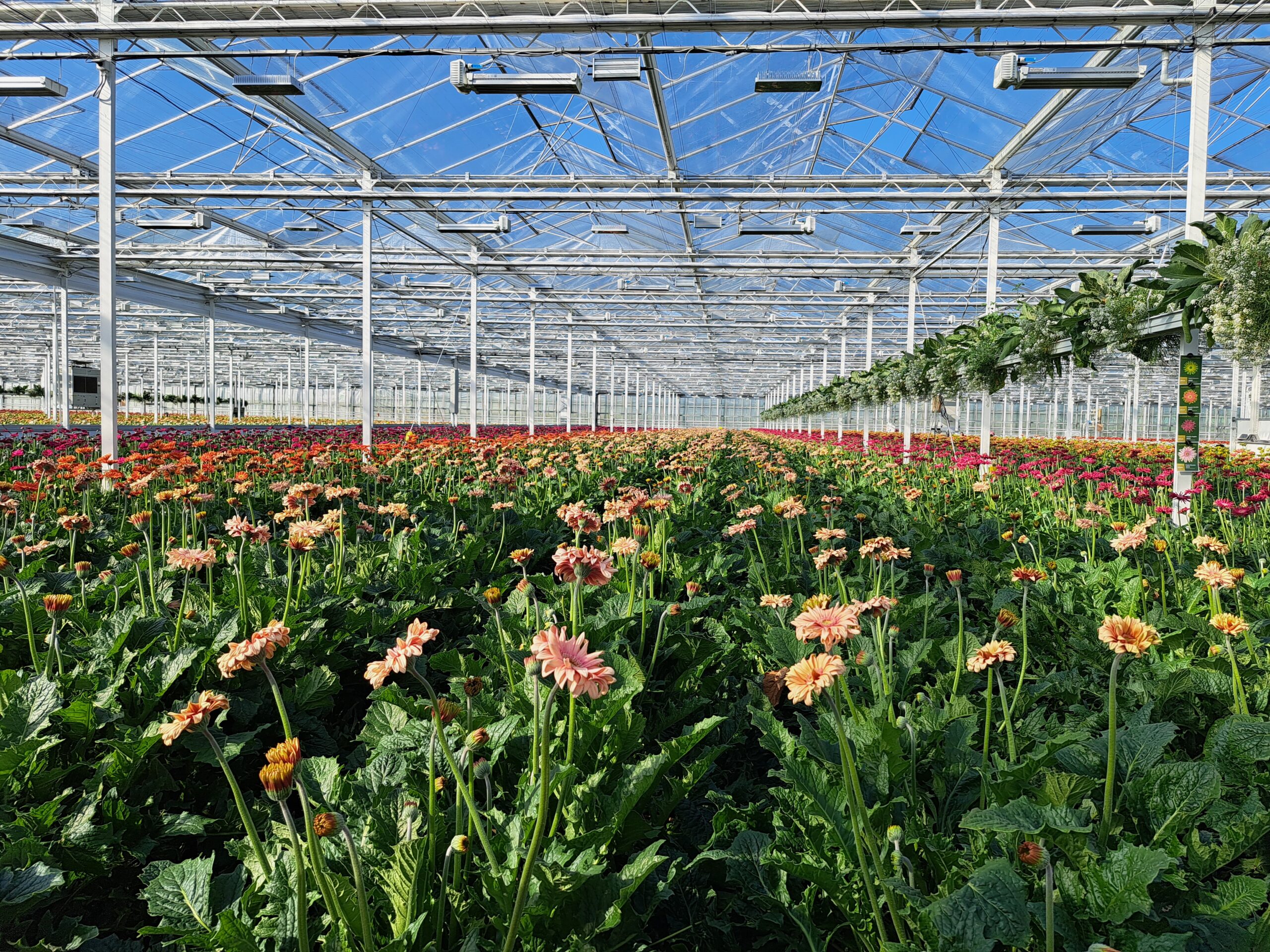
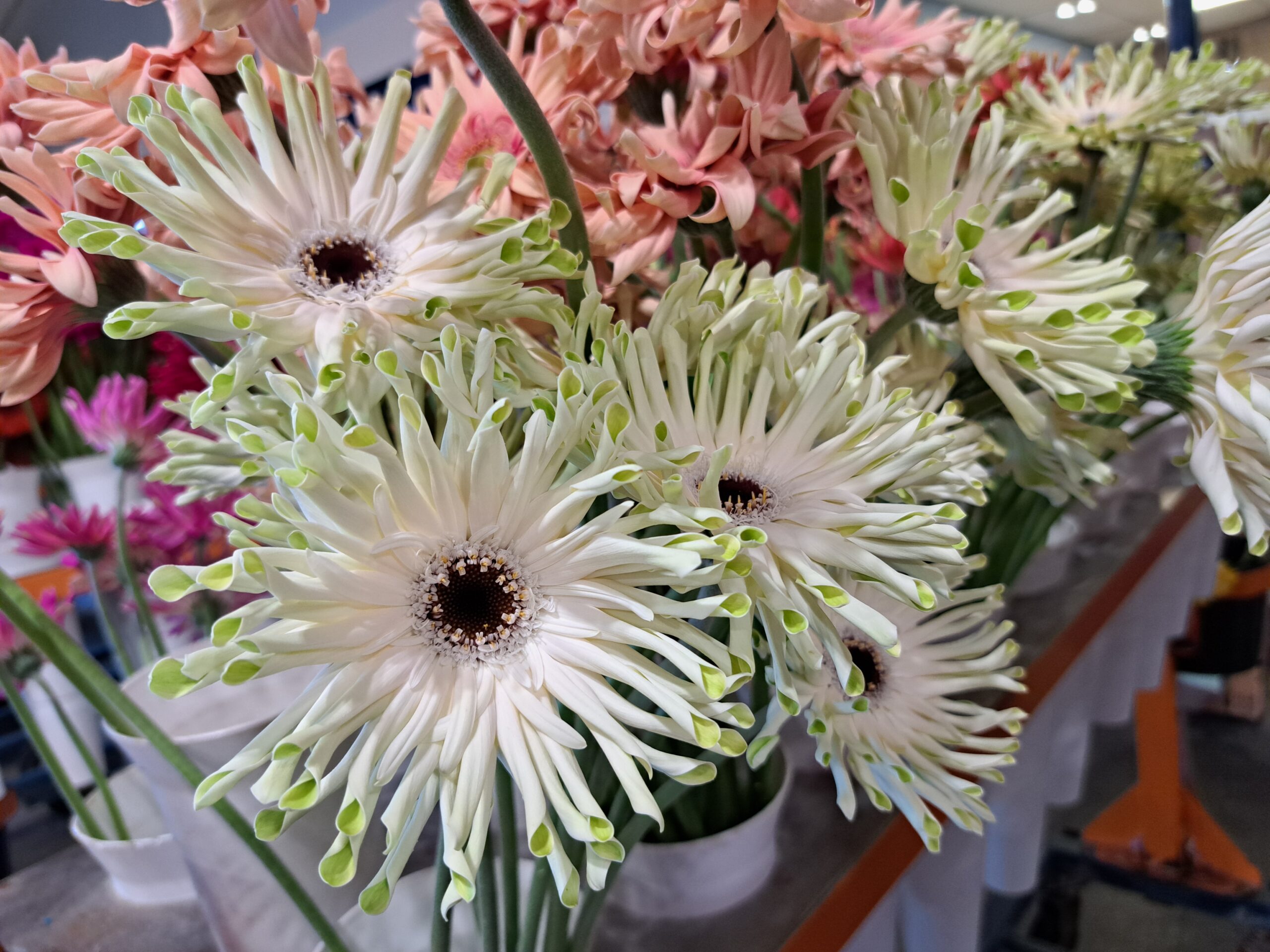
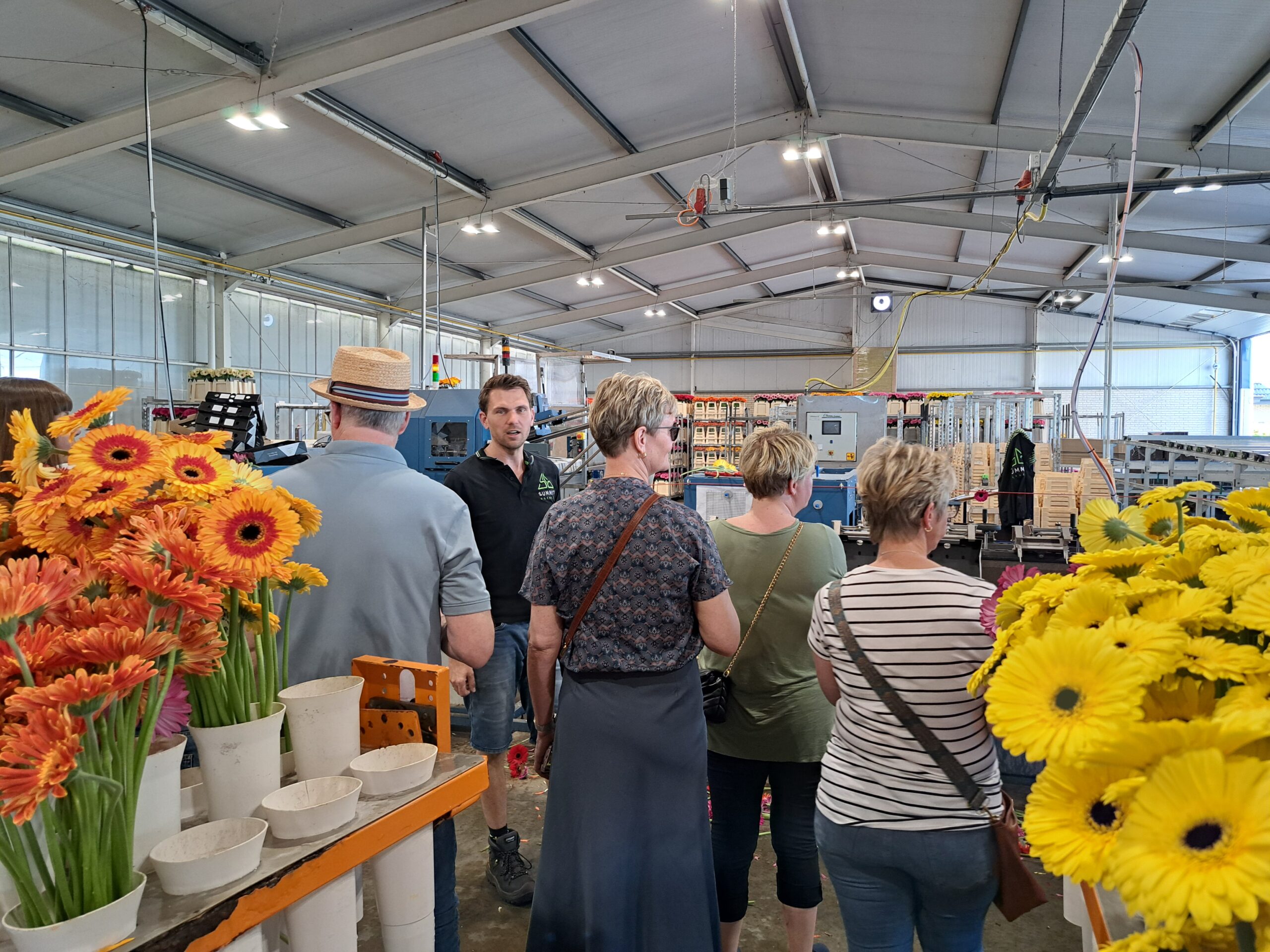
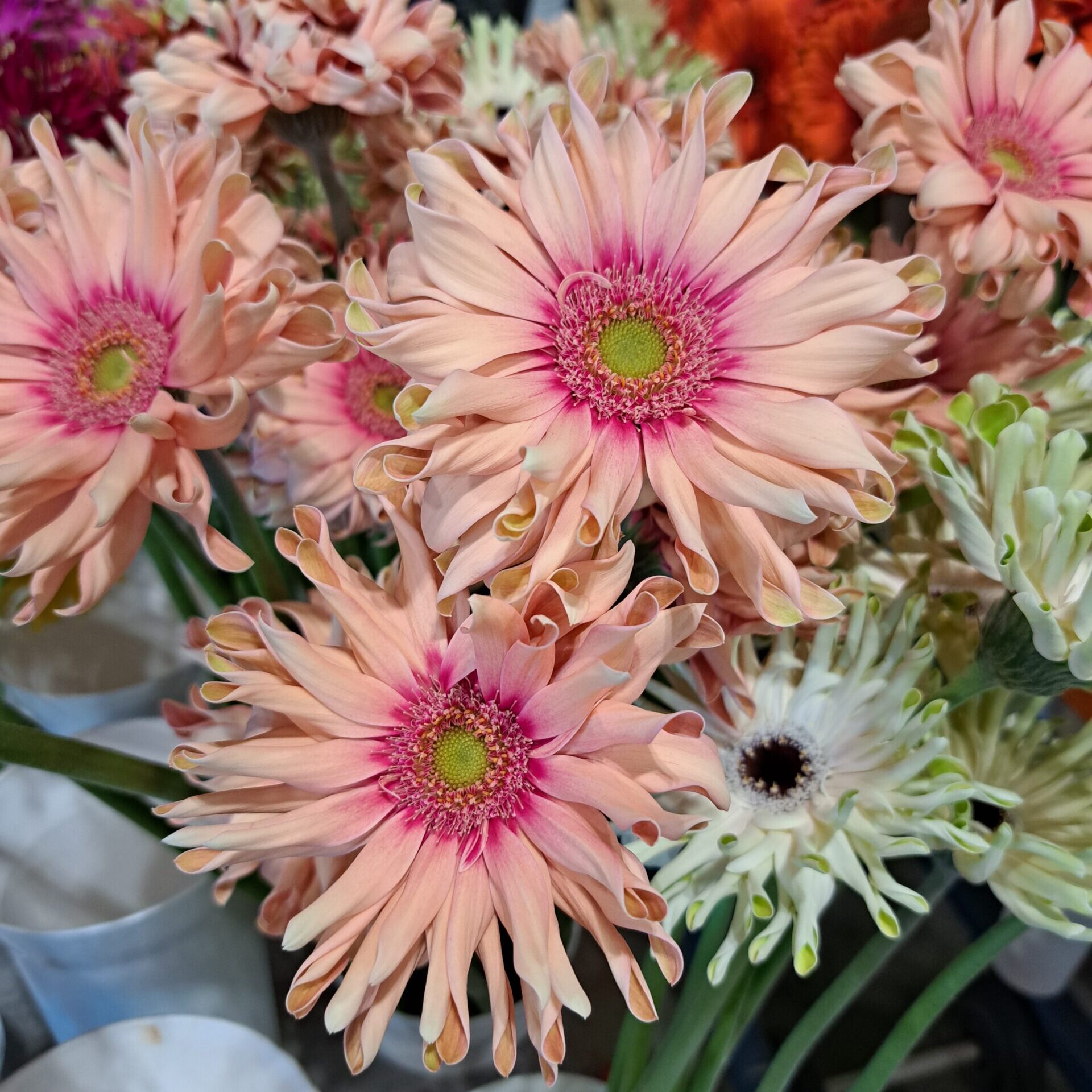
“Especially the last fifteen years the company has seen a rise in the popularity and demand for Gerbera. Therefore, they want to have every colour available for every customer and every market.”
Looking for exclusive Gerbera varieties? We’ve got you covered! Kwekerij de Zuidplas is one of our suppliers of exclusive Gerbera.
Situated in Moerkappelle, the company consists of two different nurseries, located in each other’s vicinity. Led by the brothers Leen and Juriaan the company spans 6 hectares and produces up to 23 million stems of Gerbera a year. The company has a long history and is a family business, and has been growing Gerbera for 40 years.
The assortment of the Zuidplas consists of 82 varies, of which a part is exclusive Pastini and Spider varieties. We at Hukra love these varieties a lot! Popular varieties are Rosata and Rivello and can often be found at our cash&carry’s as well!
Especially the last fifteen years the company has seen a rise in the popularity and demand for Gerbera. Therefore, they want to have every colour available for every customer and every market. It is for this reason that their assortment is as broad as it is.
A Gerbera plant usually lasts around three years in the greenhouse. As there is only a small percentage of fallout, there are few plants that need to be replaced each year. De Zuidplas has invested a lot in sustainability the past few years. Natural enemies are used to control pests. Guest plants are placed on ledges above the Gerbera to make sure these little bugs settle throughout the whole greenhouse.
De Zuidplas is a MPS certified grower, holding the MPS A, MPS-GAP and MPS-SQ certificates.
Investment in LED-lights have resulted in a reduction of 50% in energy use. Research has also shown that – together with innovation in Gerbera breeding – the LED-lights make for a stronger flower. Alongside this several dehumidifiers keep the climate in the greenhouse optimal, and screens along the roof can be closed to keep the warmth in during the winter months.
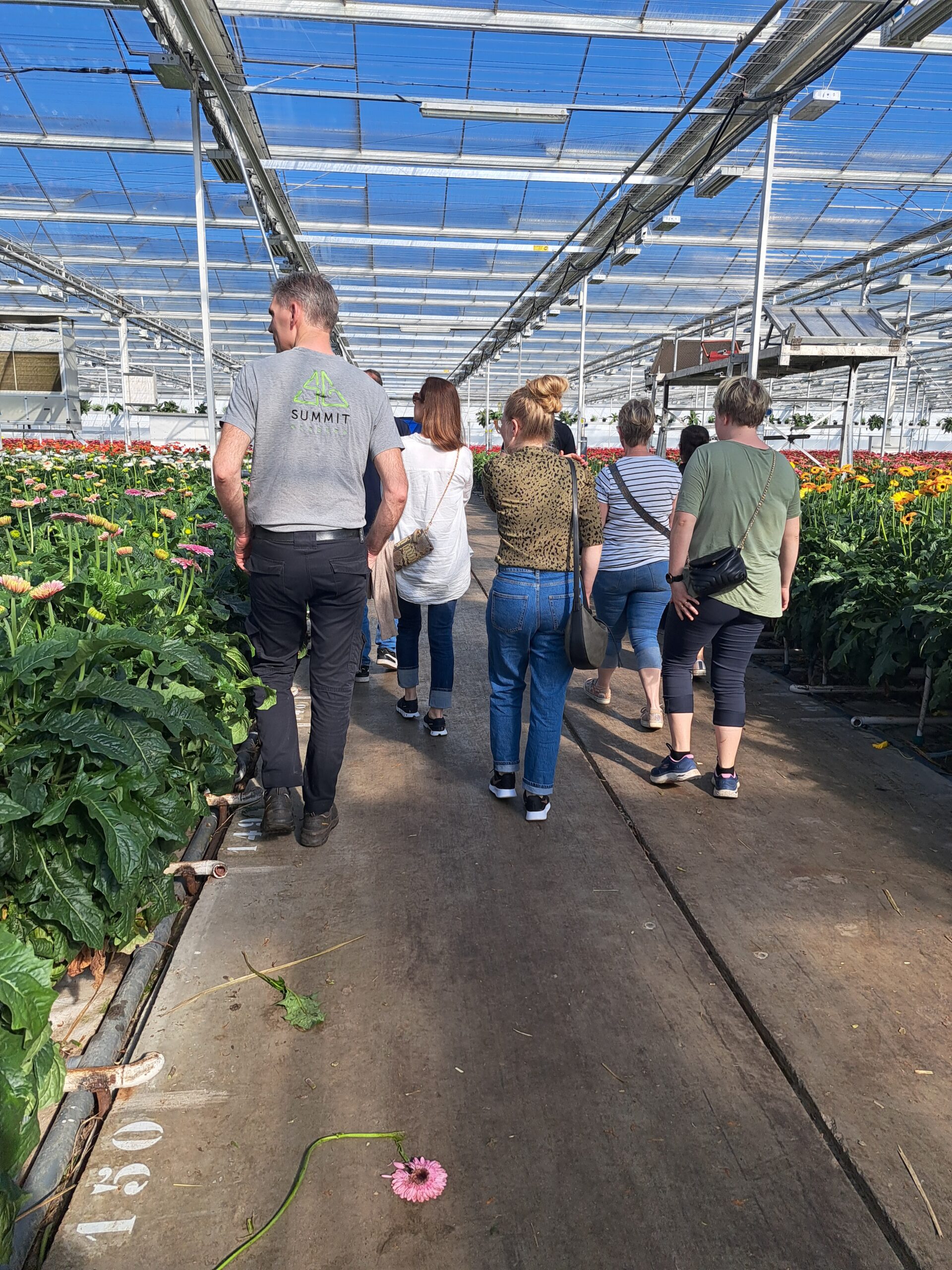
The Gerbera are only harvested when they are in the right stadium. This means one ring of stamens must be visible in the flower. It is very important that the flower is harvested in the right way. They must be broken off the plant with a certain twisting motion to prevent diseases and pests from taking an interest in the plant. People new to working with Gerbera in the greenhouse are carefully instructed on the process of harvesting. After harvesting, the flowers are packed and send to the flower auction, or directly to the customers.
It is often thought that the Gerbera is not a very strong flower and needs a wire to keep the stem sturdy. De Zuidplas believes in the quality of their flowers, and that putting wires on their flowers is not necessary at all! If they are put in a clean vase with clean water and flower food, they should last as long as any other flower.
Find the Zuidplas’s exclusive assortment in our webshop through VMP and under the Gerbera/Germini button!
Uitgelichte blog items
Blog
FLORIST FLOWERING YOUR WORLD – Löthnergården
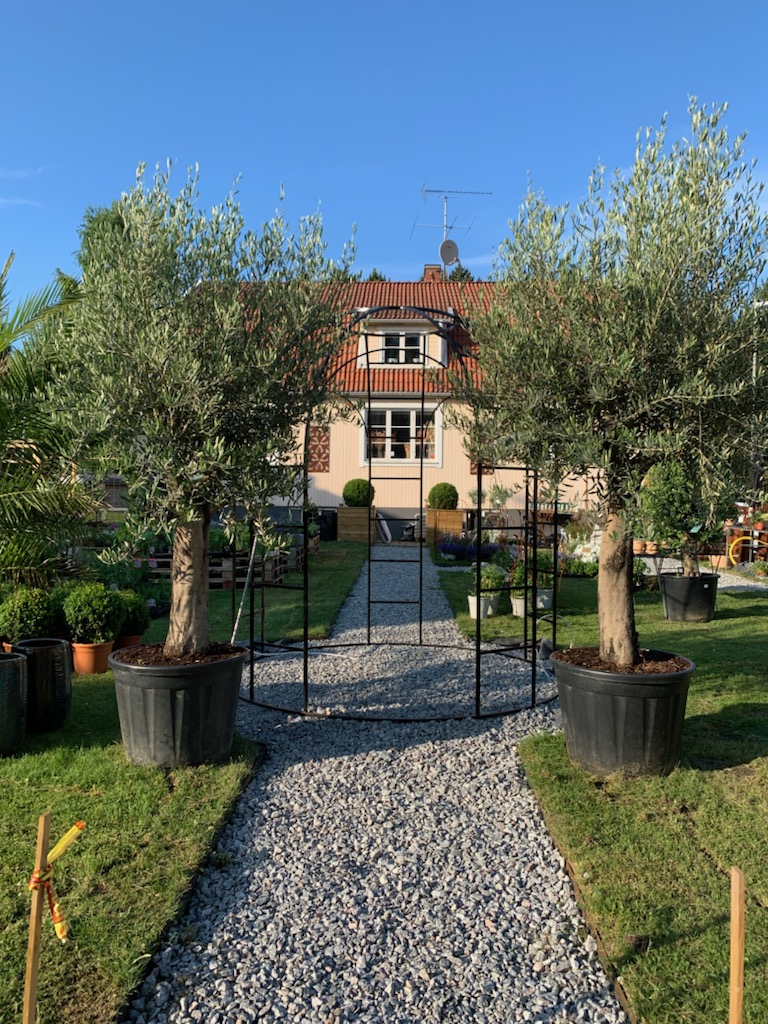
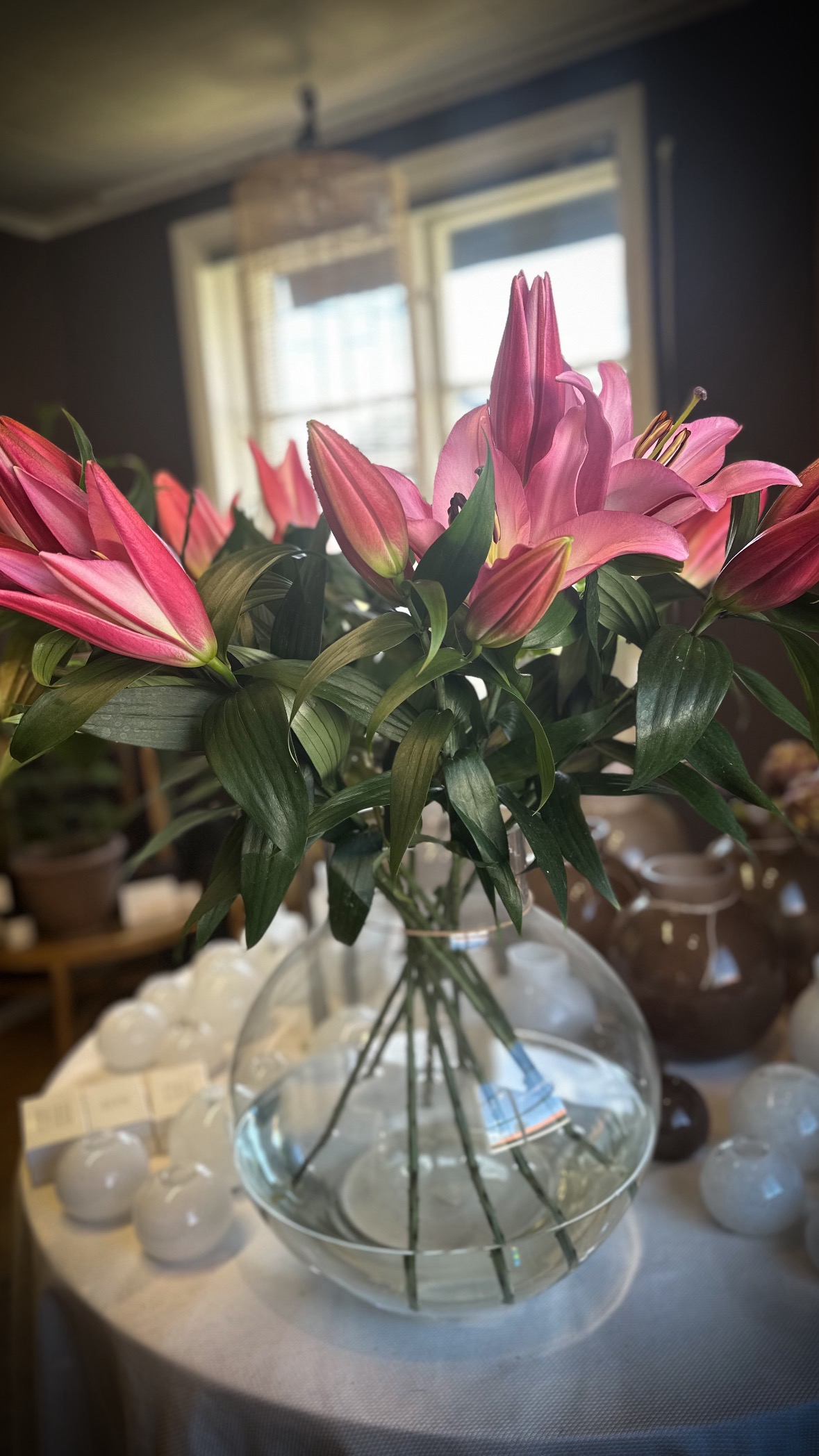
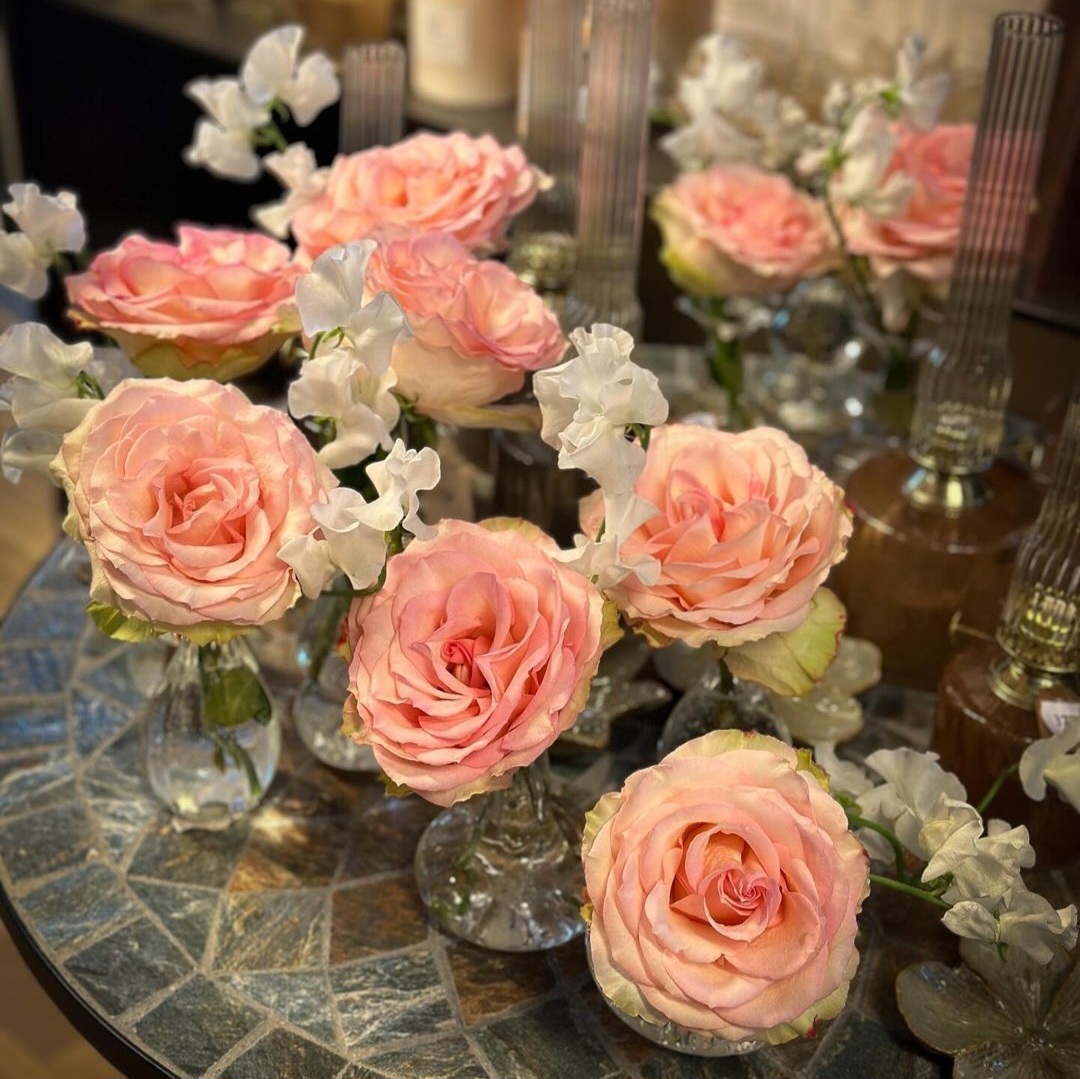
“I want my store to be like a living theater! All the lights should be on and the stage should be lit!”
Welcome to our blog with florists, about florists, for florists.
The first florist to be featured is Eva Pettersson, who owns and runs Löthnergården Inredning & Blomster Bålsta since 2020.
Why did you choose the florist profession?
My idea was that I would become an art teacher. But my dad had a flower shop, so I had to start working there on weekends and holidays. I started with simpler chores such as sweeping the floor etc. After that, I applied to Ingvar Strand’s Flower School and since then I have continued to educate and develop myself in the florist profession. It has given me a genuine interest for the industry, flowers, and customers.
Did it turn out as you thought?
Yes, I think so! Love my profession! There is so much fun to do. I have taken Journeyman’s Certificate, Master’s Certificate, and I am also a Journeyman’s Examiner for new florists, have worked as a Florist teacher, and started Fränd&Fränd through which I previously arranged Florist Day at Krägga Herrgård here in Bålsta. It was three years in a row which were incredibly intense, rewarding, and fun. I invited several florists who arranged flower vernissages and shared their experiences, as well as some lectures about the industry, in various interesting areas. A very nice way to meet florist colleagues from all over the Nordic region and at the same time get inspiration and develop as a florist. We’ll see if there will be any more of that in the future. Would be a fun challenge!
I have worked in many different flower shops in Stockholm, and also for a couple of years at IGNIS in the mid-90s, a funeral home with a flower department. From 1997 to 2007 I started and ran Fantasifloristen in Bålsta, and also Fantasifloristen in Sigtuna alongside that during 2004-2007. After that, I studied to become a marketing economist at IHM for 2 years. But the flowers lured me back to the industry after a few years in other professions. In 2012 I was regional manager for stores in Stockholm Mälardalen at Euroflorist. We helped with business development, purchasing, inspiration, etc. After that, it was many years as a consultant in the flower/event industry. To finally in the Summer of 2020 find my fourth store and my last project, Löthnergården in Bålsta that I still run.
Right now we are loading up with goods in our lovely garden department for this year’s outdoor season and upcoming holidays. There is a lot to do and always something you can contribute to!
What drives you to continue to develop?
Oh, that’s the combination of it all! I love the flowers and have so much fun with my co-workers. To bounce ideas off them and develop together. I want to continue to learn more, learn further and at the same time get better at what I am doing. There is always more to learn. Knowledge is inspiring!
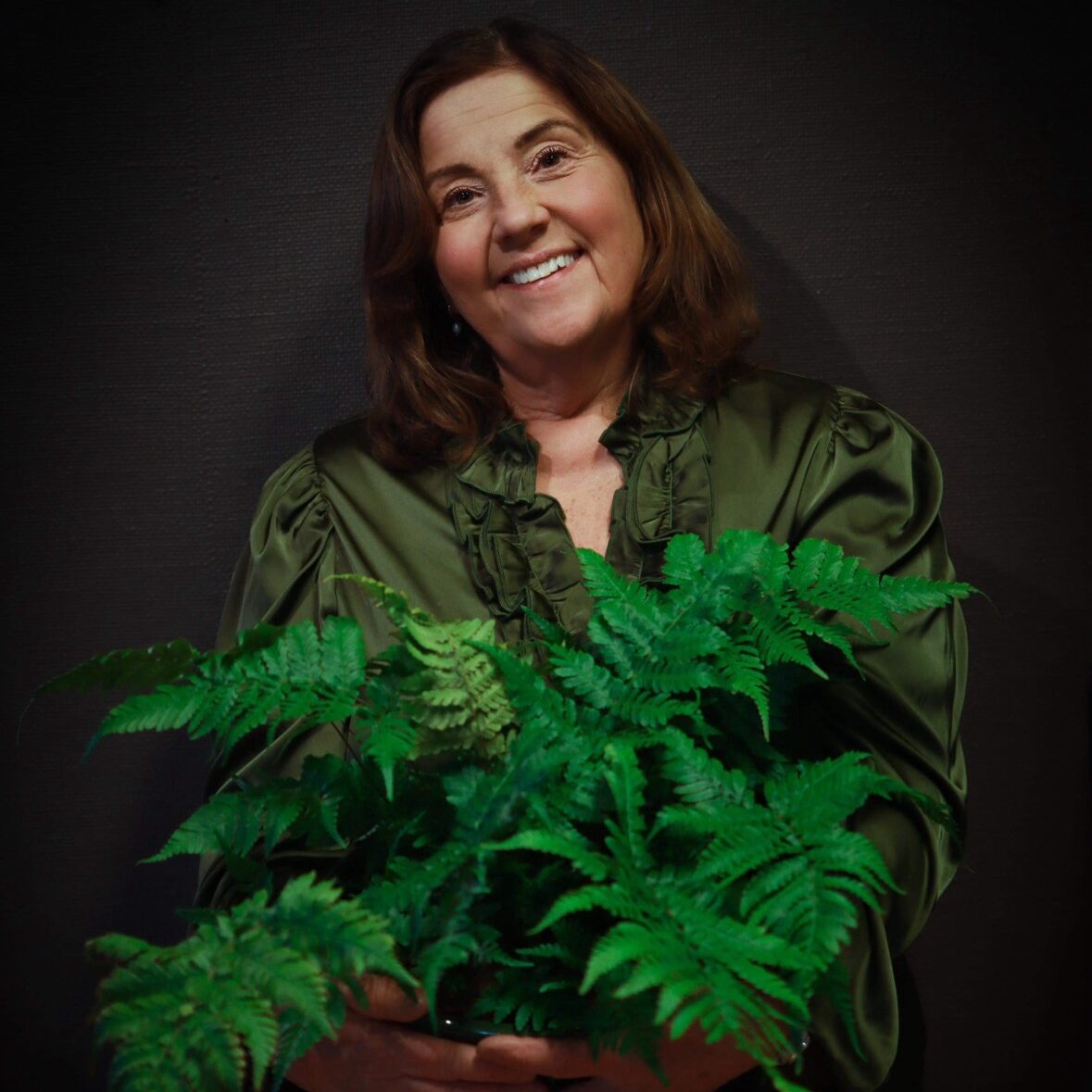
What are you like as a manager?
Open, straightforward, and present!
Open = is clear about what is happening with and in the company. Shows numbers, explain a lot about how things affect each other in the chain.
Straight = on things that are needed here and now. I explain what I expect and want my employees to give me feedback immediately if it doesn’t work. This is incredibly important in a small and tight organization.
Present = Work within the store with all chores. I step in and help in case of illness etc. It is important that they see what you are doing and not just hear. This item is heavy to carry for self-employed people as we have everything else behind the scenes to take care of, such as purchasing, accounting, planning, marketing etc. Working only 40 hours a week is a goal to go down to.
How do you work more environmentally conscious?
It is a work that is constantly ongoing. For example, we have acquired a hybrid car. We have switched to an electricity contract with renewable electricity. Our packaging is environmentally certified, we try not to use plastic products, cellophane, etc. We have waste sorting through an agreement with Ragnsells, who sorts everything for us. It’s very nice to be able to buy that service and get it done. Packaging such as cartons we take back to our wholesaler Hukra Cashen who reuses them in turn and we do not have to pay for it. We scrub the floors with soap etc.
What challenges do you see ahead?
It’s tough in the industry. It has been for many years, but it is particularly noticeable now. Many florists have to close down their businesses as large giants take over flower sales more and more. But who will do the craft? Who will pass it on? Large parts of our profession are in the crafts. To tie artisanal, beautiful bouquets and create different decorations and arrangements for all these different occasions and traditions that we do in our industry. It is a difficult job at times. We have a big challenge there! It is important to find the right employee who buys you and your store’s concept and way of working 100%. They need to be responsive and tolerant of customers and their employees. Stand up for each other and the store, of course this point is mutual. Everyone has their qualities and fits in in different ways. The mindset you can not only get, you have to give too. The willingness to learn new things and dare to try is something I appreciate with us.
I want my store to be like a living theater! All the lights should be on and the stage should be lit! I’m passionate about flowers and that the show continues!
Uitgelichte blog items
Blog
Refreshingly green: Viburnum from Mediaverdi
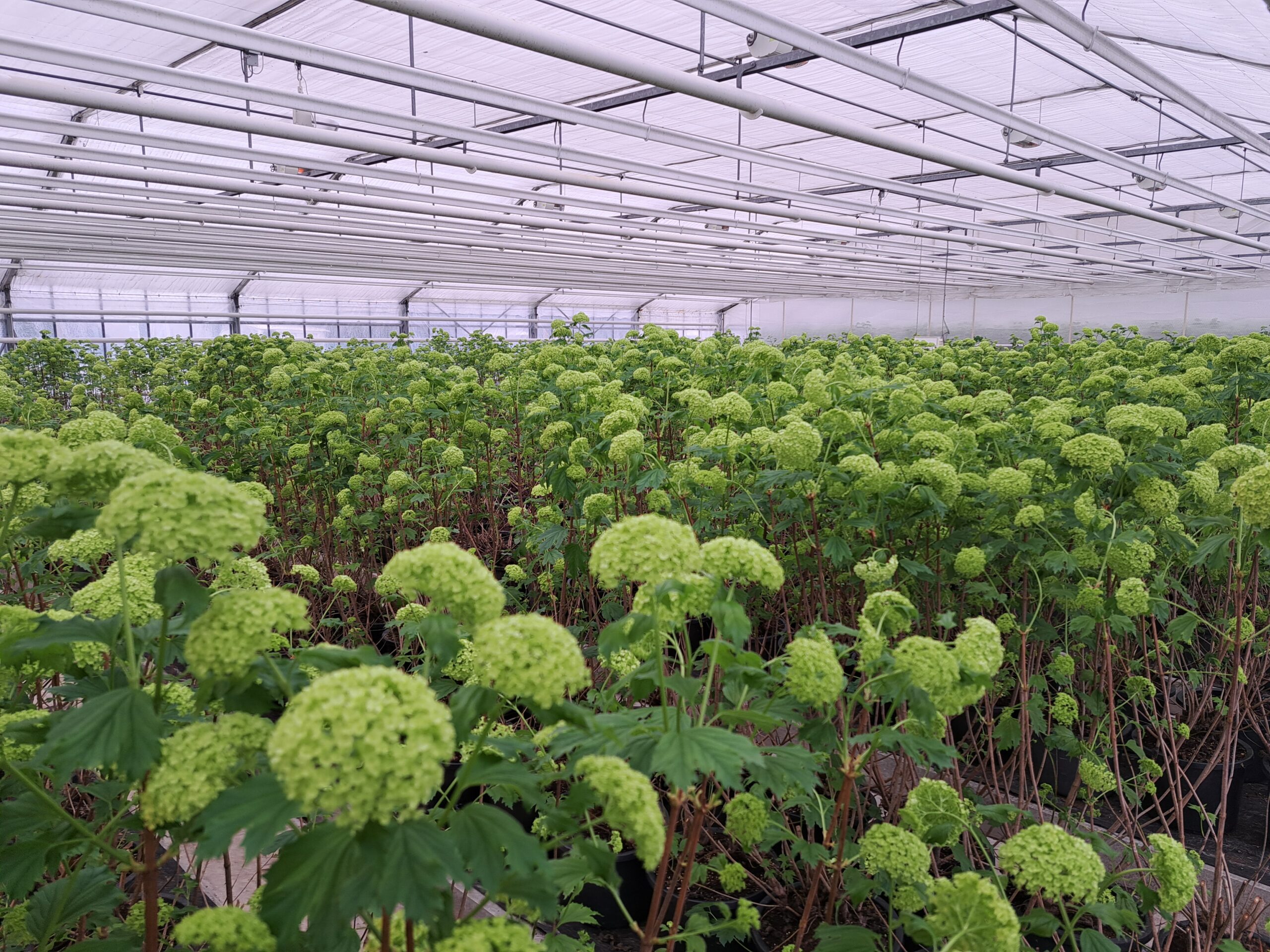
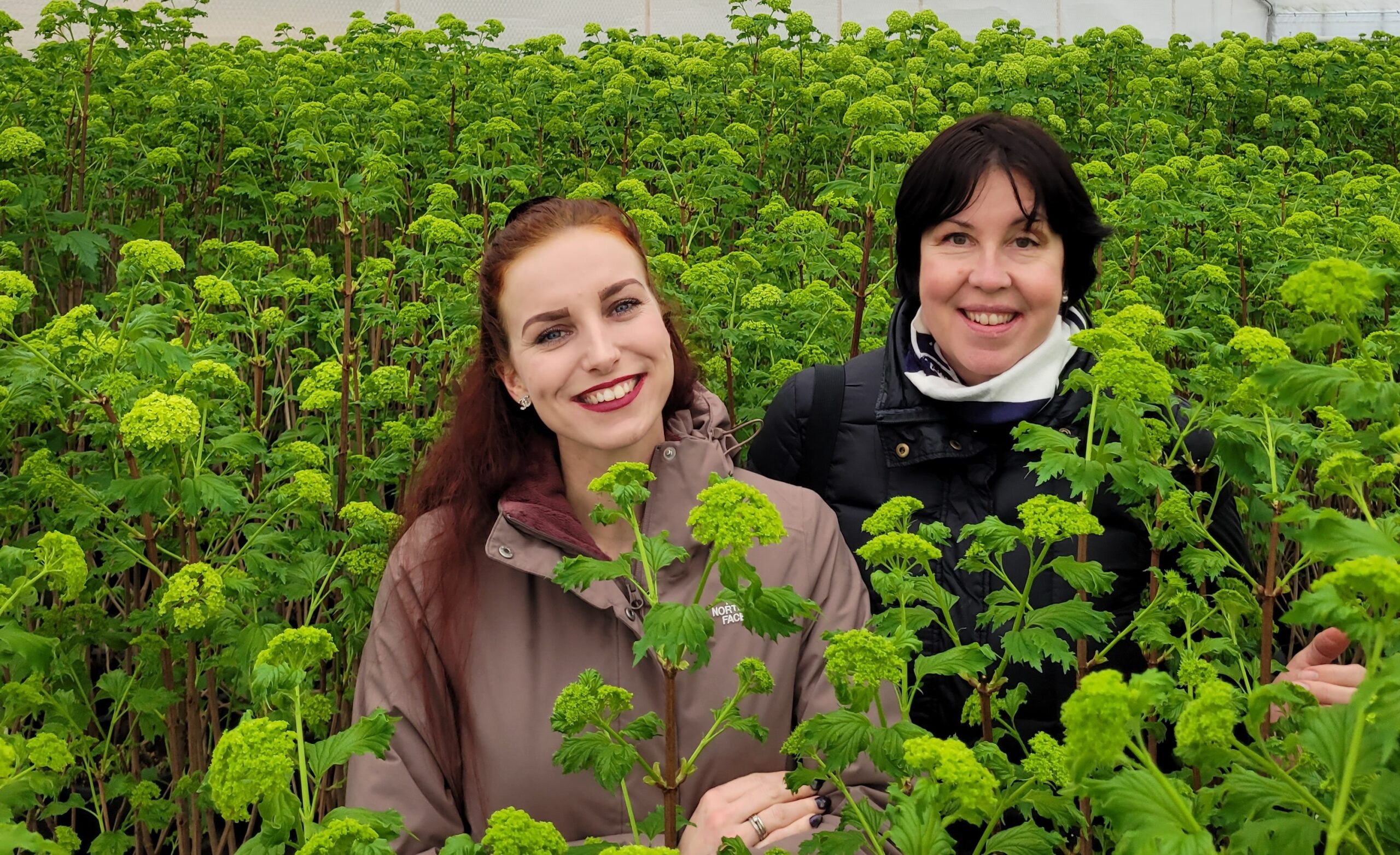
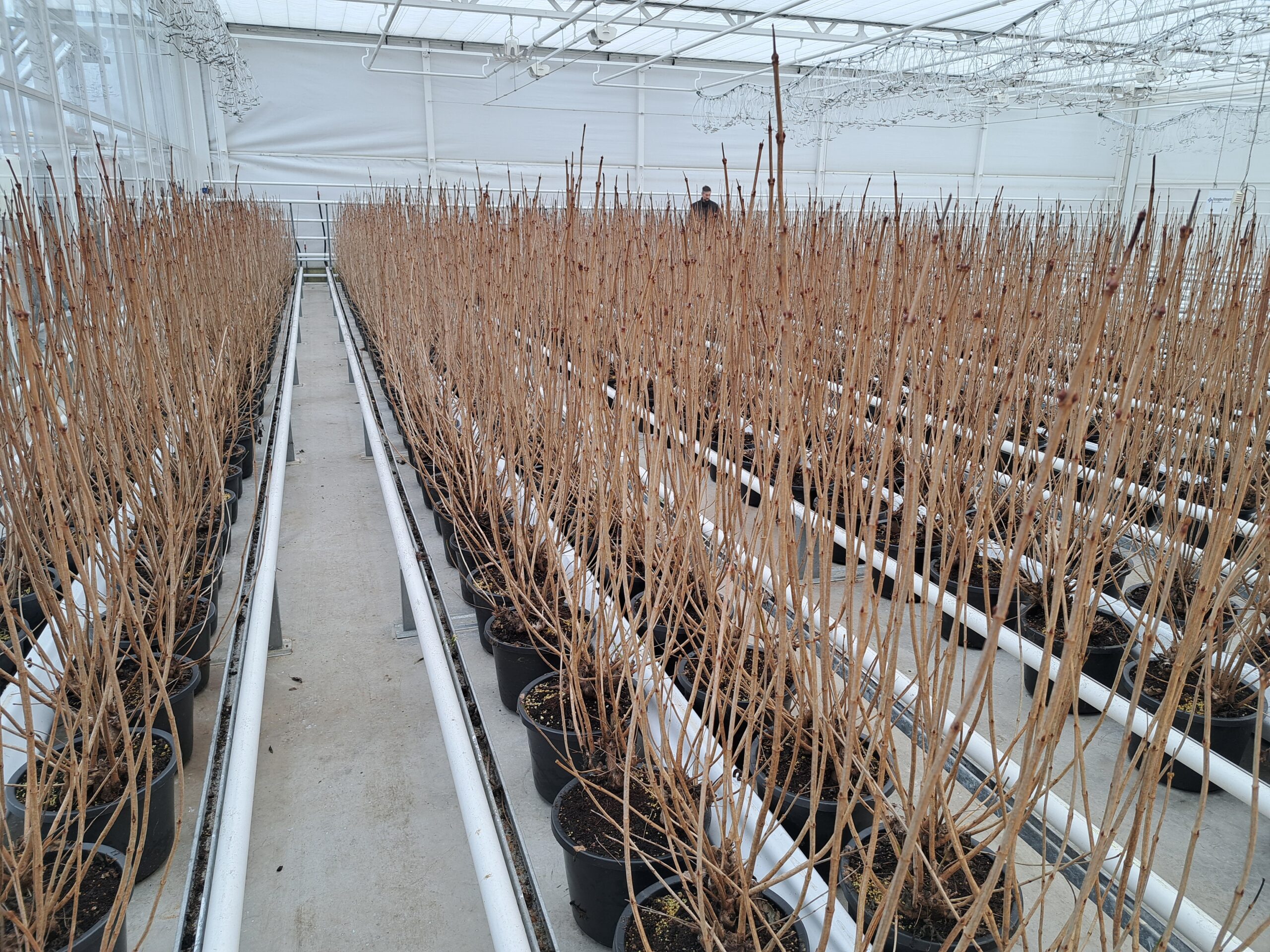
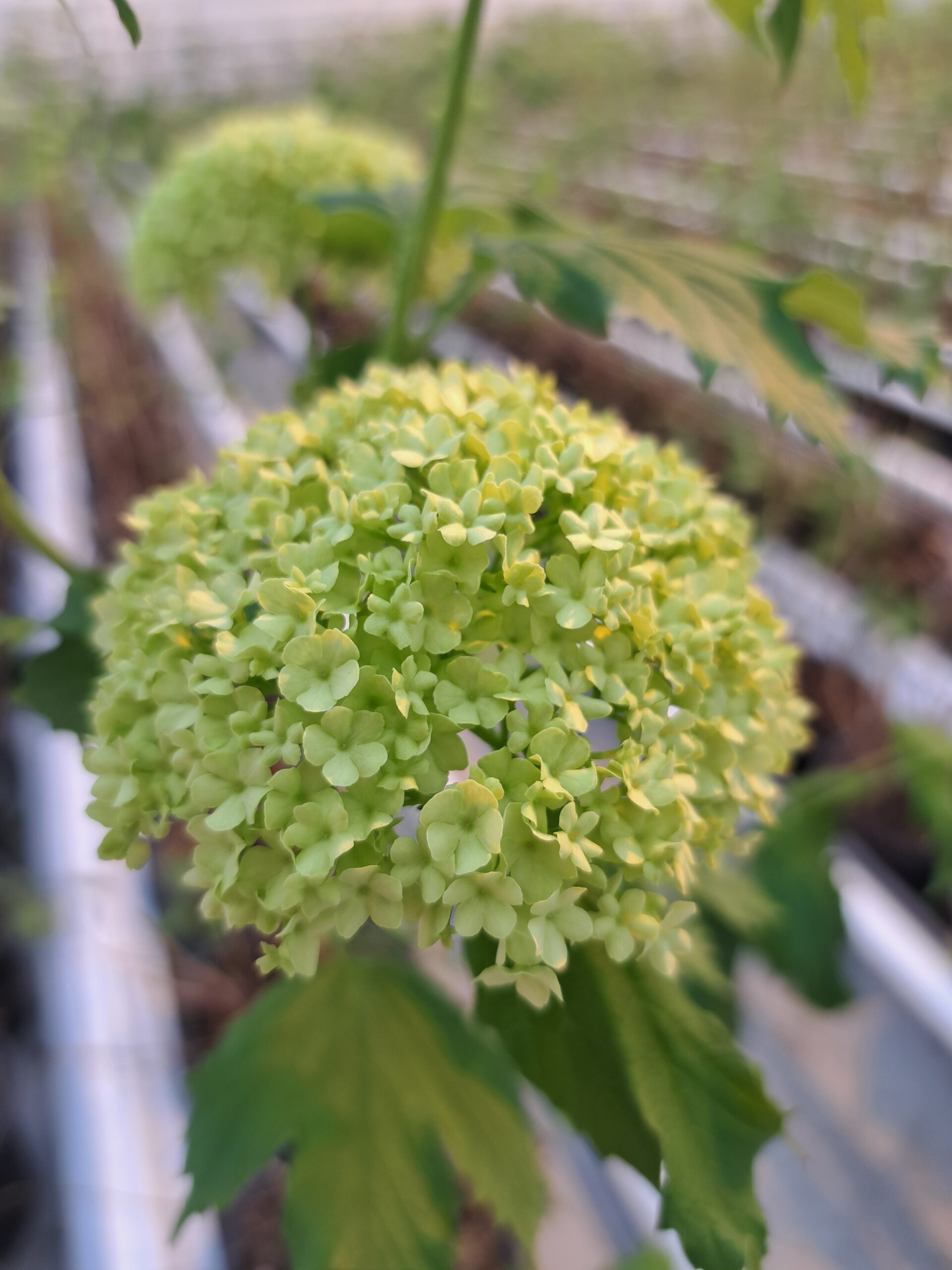
“Mediaverdi wants to be very reliable in selling their flowers, so 4+ really has to be 4+. You really get what you order.”
We know Mediaverdi because of the wonderful carnations they grow every year between August and November. But did you know they also grow Viburnum Roseum? From January until April, the Mediaverdi greenhouse colours a refreshing green!
Mediaverdi has a whopping 30.000 Viburnum shrubs that they keep in pots on the grounds surrounding their greenhouse. They are outside the whole year, and are only given water. During the month May the plants are given fertilizer to ensure they grow and develop their stems well.
During the winter months, after the carnations have been cleared from the greenhouse, the greenhouse is divided into eight sections, and the viburnum shrubs are brought in one section at a time. This way, the sections bloom one by one, and not all at once. By the time the shrubs are brought into the greenhouse, they have developed their stems and are ready to develop their flowers inside. This process takes approximately six to eight weeks.
During this time the plants are only given water, and are kept at a temperature between 20-25°C. They are only given natural daylight. Careful research has shown that Virburnum don’t thrive under assimilation- or led lights as they would under natural light. As such, Viburnum flowers have relatively little impact on the environment as they are only inside the greenhouse for six to eight weeks and need no extra light. Mediaverdi has solar panels installed, bringing their electricity use to a minimum.
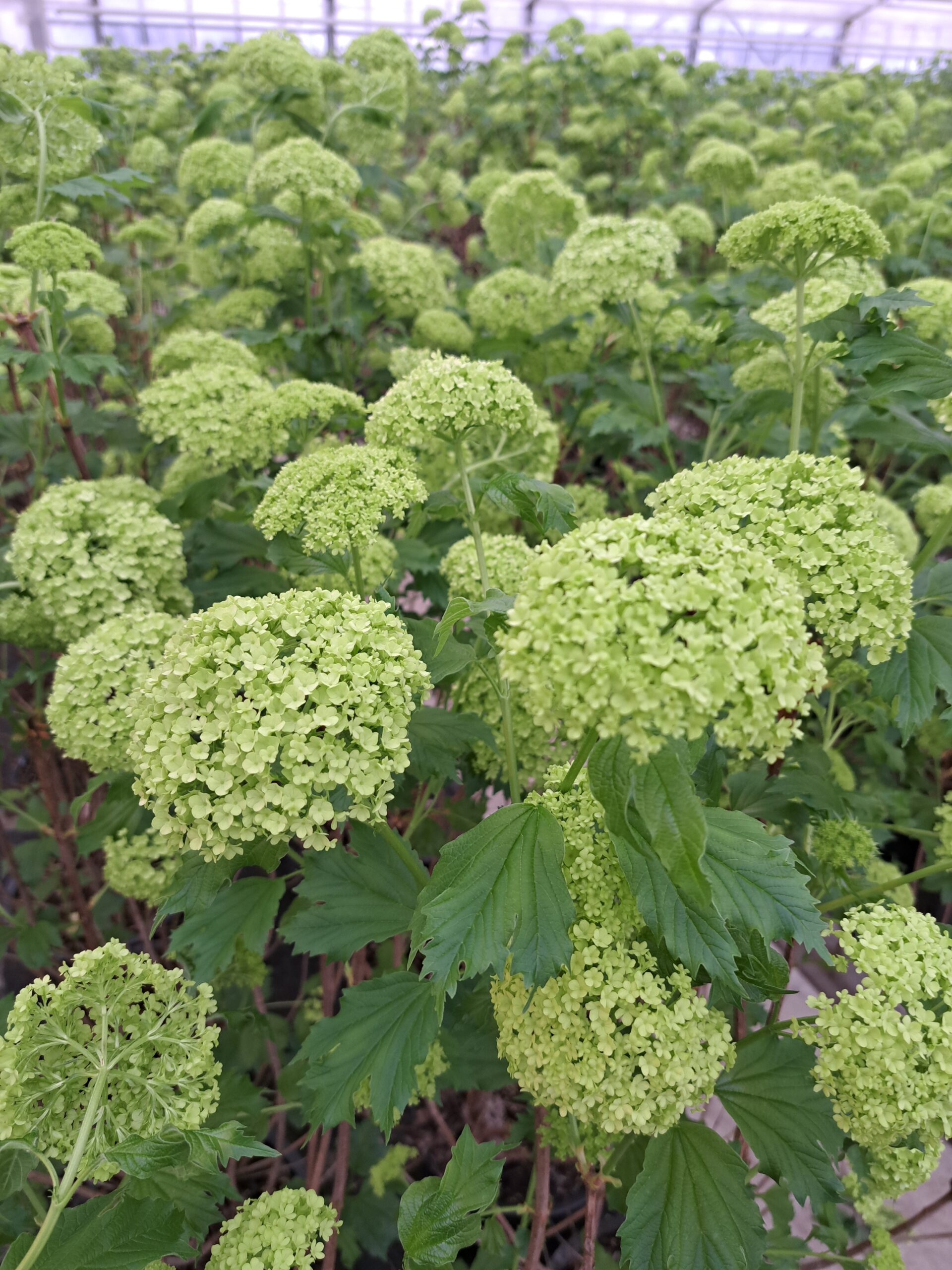
Once the flowers are fully grown and blooming, they are harvested. Mediaverdi is very strict in sorting their flowers. Only stems with four equally developed heads are sold as 4+, and so on. All the flowers that haven’t developed equally are sold in a ‘rest’ sorting. This doesn’t mean the flowers aren’t good quality. In fact, the quality is as good as the 4+ stems. The difference simply lies in how the stems look and they are still fantastic to use in bouquets and arrangements! Mediaverdi wants to be very reliable in selling their flowers, so 4+ really has to be 4+. You really get what you order.
Care tips
Viburnum don’t need much flower food on the vase. Regular Chrysal for cut flowers is more than fine for them. The flowers must be kept away from bright sunlight, as this might impact the vase life.
Uitgelichte blog items
Blog
Madiba Flower Power!
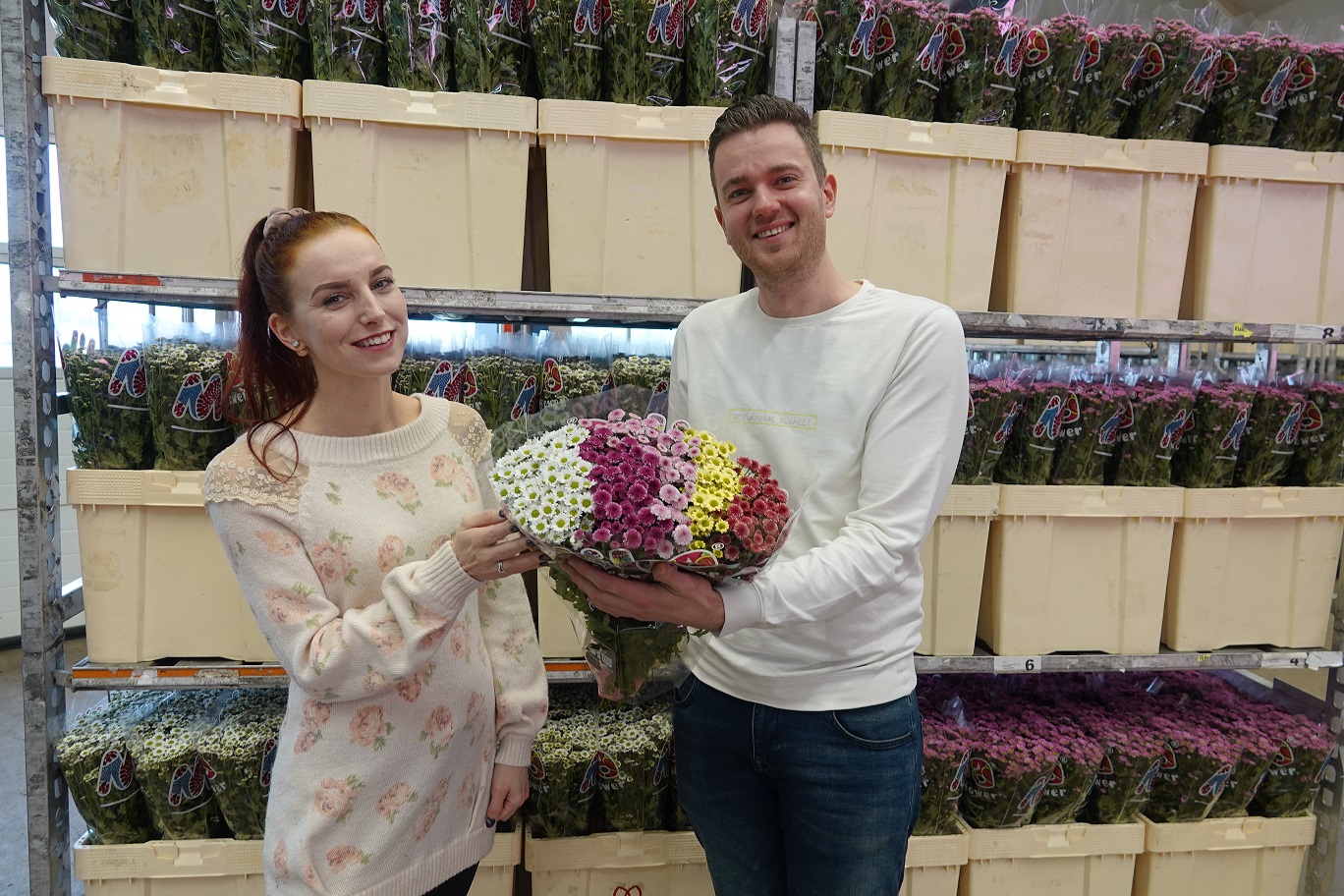
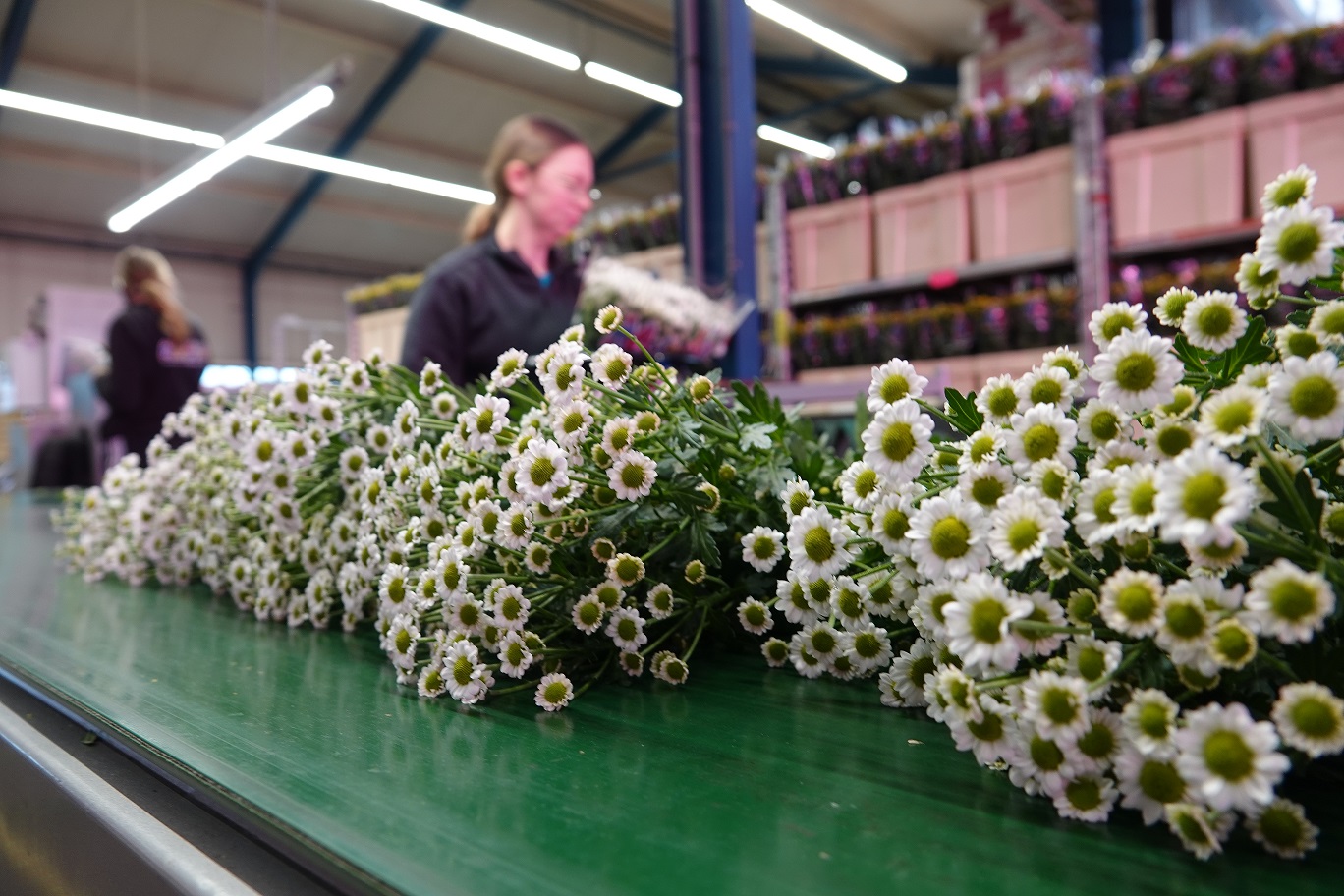
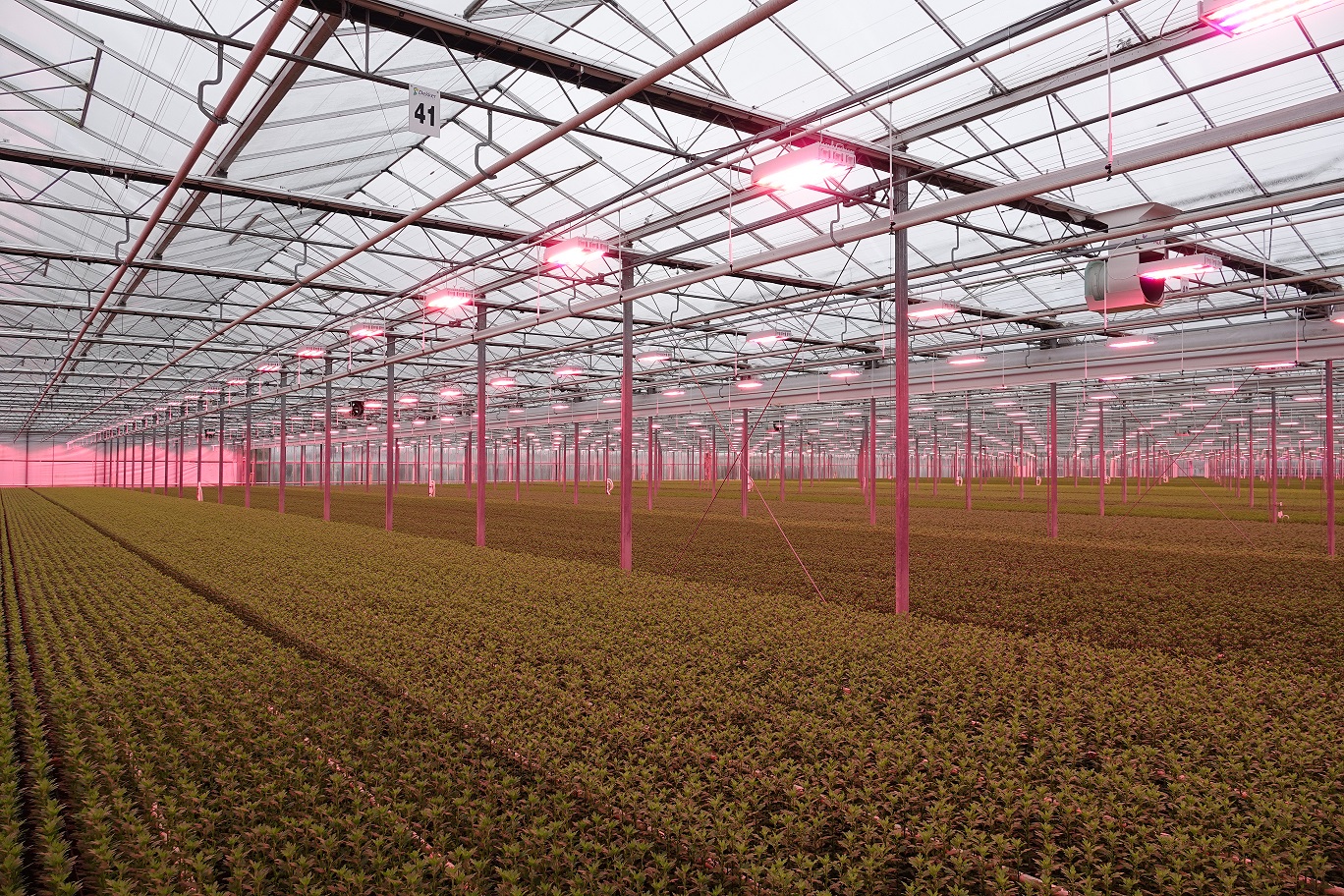
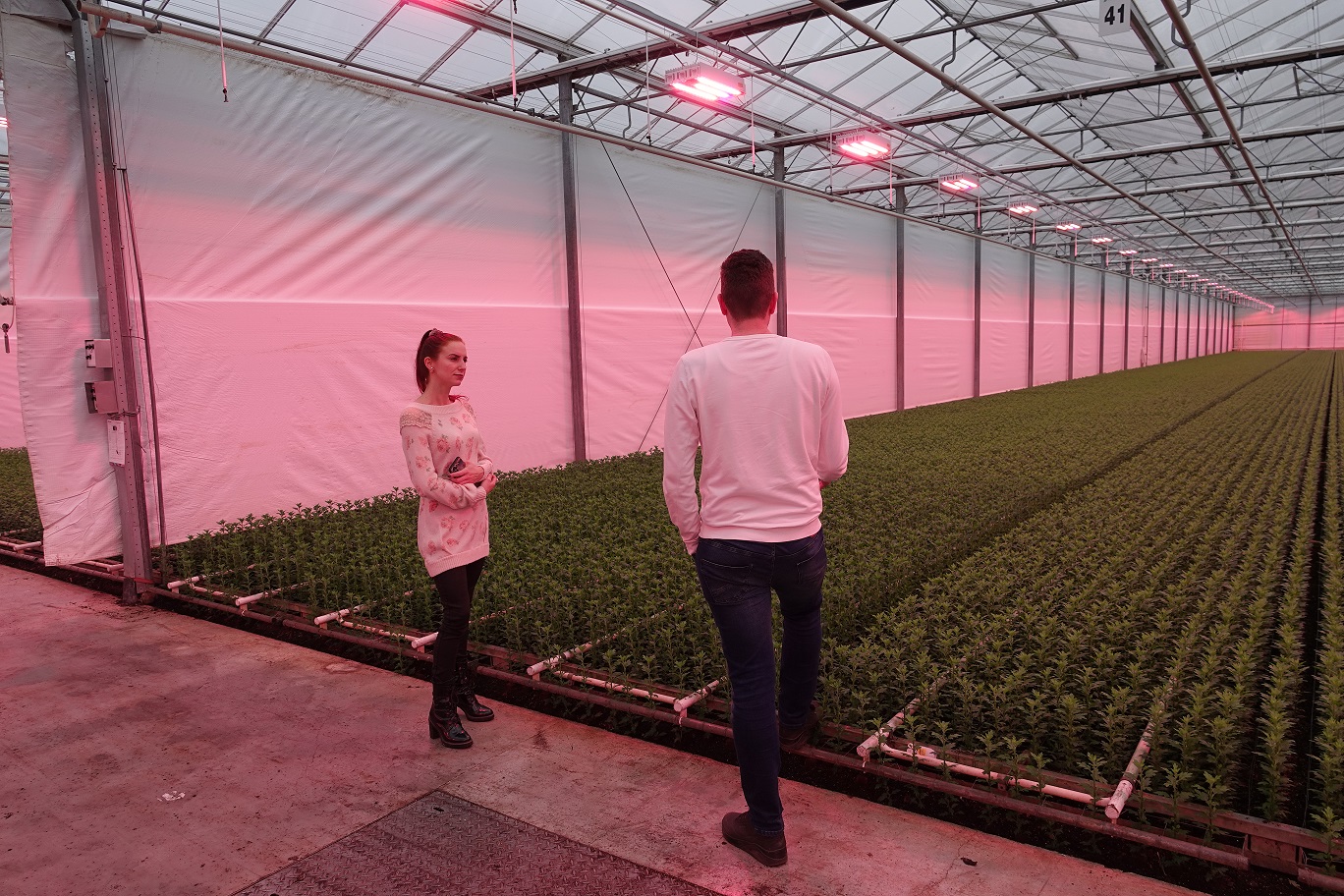
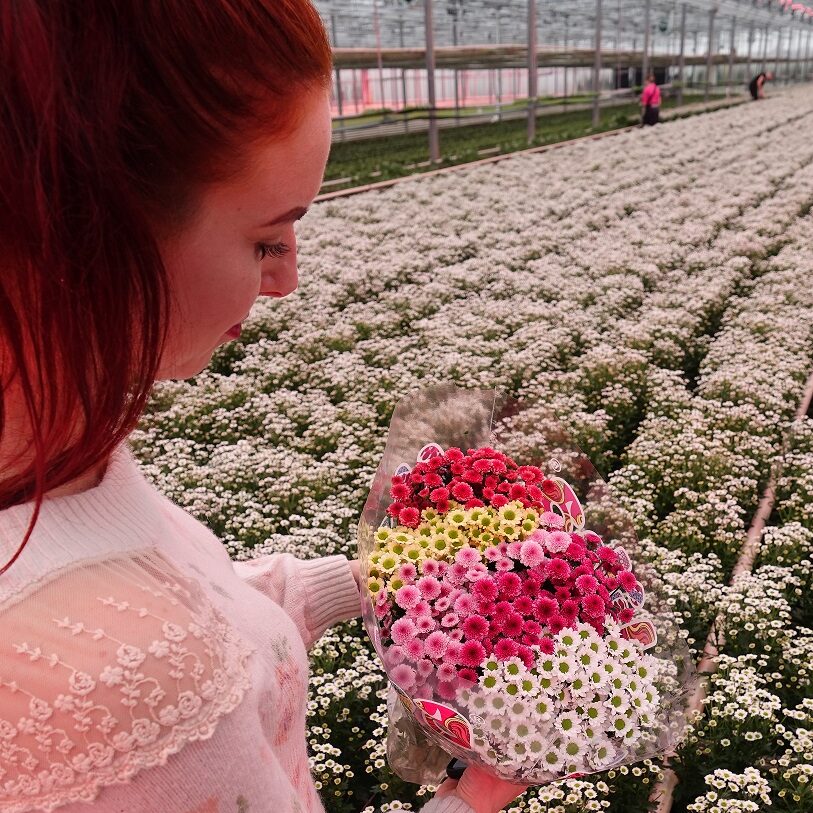
“Small, and many (up to thirty!) colourful flowers with a long vaselife, and excellent quality are a few of the most important aspects of these Santini.”
Madiba is one of the Santini brands from breeder Dekker Chrysanten. Small, and many (up to thirty!) colourful flowers with a long vaselife, and excellent quality are a few of the most important aspects of these Santini. The amount of stems that can be grown grow per square meter make them very interesting for growers to take on. But did you know they also have a special story?
All the cuttings that lie at the base of the Madiba Santinis come from Tanzania. The mother plants are grown at the foot of the Kilimanjaro by 900 Dekker Chrysanten employees. The cuttings are transported to the Netherlands, where several Dutch growers grow them into the high quality Santini that we buy at Hukra.
Madiba is a brand that strongly connects to its African roots. The name of the brand was the nickname for Nelson Mandela and all varieties are named after African cities. But that’s not all. Madiba supports various social projects in Tanzania. One of those is the Sengerema Foundation, which aims to support underprivileged youths in finishing their education and helps them start their own businesses.
The Madiba Santini are available in every kind of flower shape, ranging from deco to daisy and pompon shaped flowers. Dekker makes conscious choices when it comes to the assortment. Only the best varieties are introduced to the market.
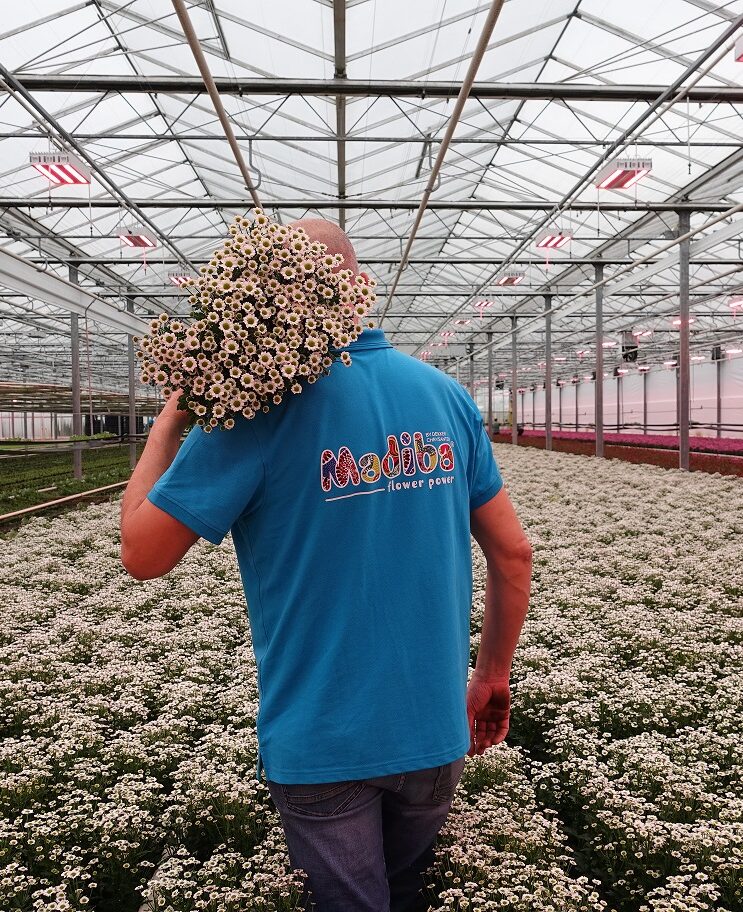
The three Dutch growers that grow Madiba are Westeringh Flowers, Kees de Jongh, and Kwekerij Monnikenwaard. These three growers work closely together to bring the best flowers onto the market, together with Dekker Chrysanten. All of them have been growing Madiba Santini for a good amount of years. All growers hold the MPS A+ certificate among others and are FSI compliant, which means they work according to the standards of the Floriculture Sustainability Initiative.
For the occasion of learning all about Madiba, we visited Kees de Jongh. Kees has been growing Madiba Santini since 2010. He has invested a lot into sustainability. His modern nursery is fully equipped with Led lighting, solar panels have been installed on the rooftop, and organic pest control is used. Kees is very passionate about the flowers he grows and involved in every step of the process. From growing to checking the trolleys that leave the nursery, he does it all to ensure the Madiba santini’s are the best quality.
Uitgelichte blog items
Blog
Montana Lisianthus

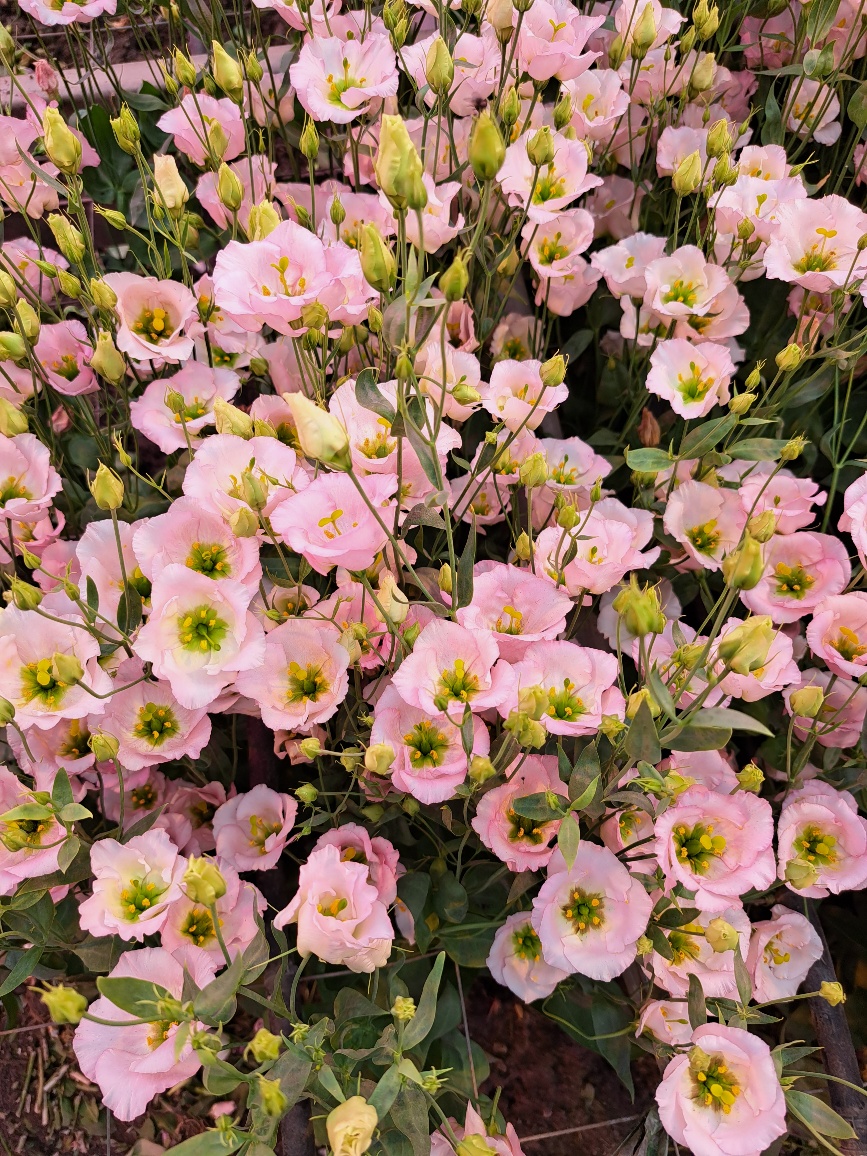
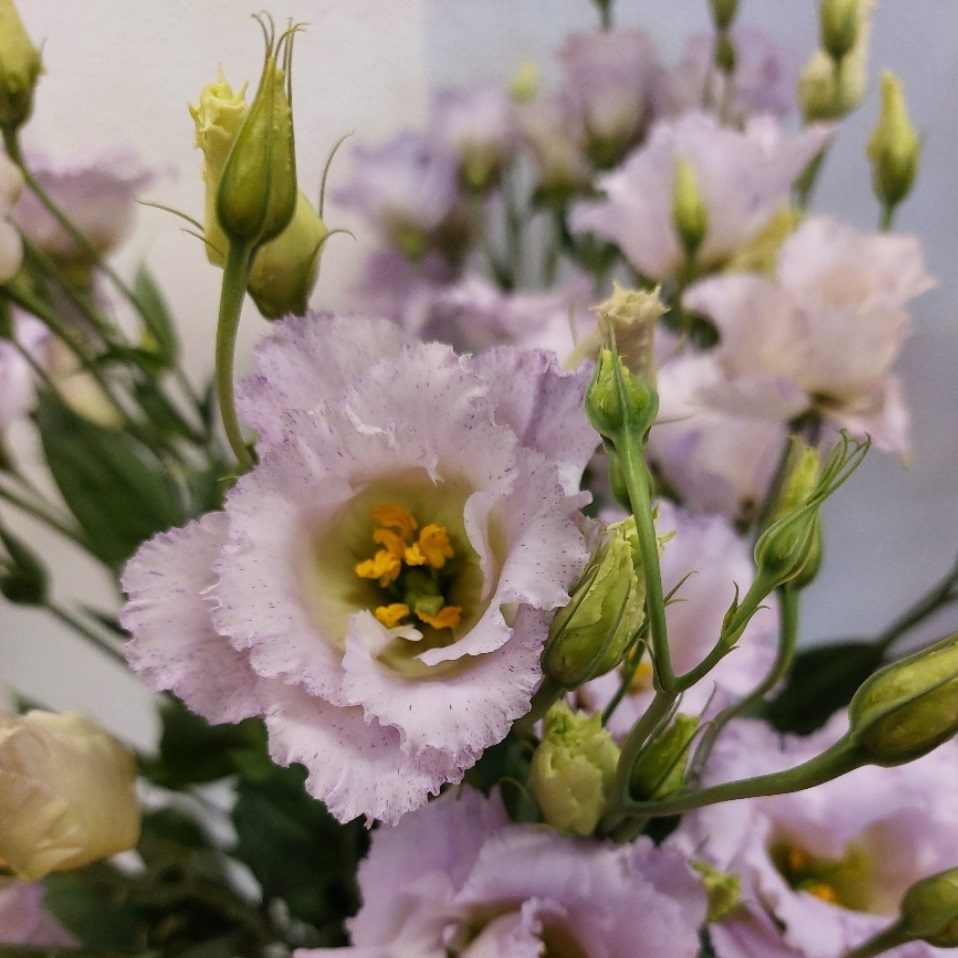
“Their innovative assortment is full of beautiful and exclusive varieties.”
In the village of Poeldijk, the Netherlands, you can find Montana Lisianthus. This company has been growing amazing cut flower Lisianthus for over thirty years. Their innovative assortment is full of beautiful and exclusive varieties.
Varieties are selected with care, making sure that whatever the nursery brings to the market is exclusive and of the highest quality. Owners Frank and Corinne both have grown up in the horticultural sector, and as such have a lot of knowledge and are not afraid to try something new.
The assortment spans about 30 varieties, that are grown spread out over the seasons. Darker, warmer colours in Autumn and Winter, and brighter, lighter colours in Spring and Summer. The company looks to introduce new varieties on the market each year, and do this in close collaborations with their breeders. Newer additions to the assortment are the colour changing Blue Chateau, and the lovely freckled variety Stracciatella Lavender.
Other nice varieties that are different from the norm is the Botanic line in various colours and the much loved Bohemian Choco.

Montana Lisianthus grows their Lisianthus with commitment to the environment. Their greenhouse is full of energy reducing led lights and they are Global G.A.P. certified. Organic pesticides and natural enemies are used to keep out disease and pests.
The flowers that we see in the vase, arrive at the nursery as small plants. They are planted in steamed soil. In a span of approximately eight weeks – depending on the variety – the plants grow and develop the beautiful flowers that we know. The flowers are grown with extreme care, planted wider apart than is usual to allow them to develop heavy quality stems. After harvesting, the flowers are immediately placed in water with extra flower food. After harvesting, the soil is cleaned and steamed again, so that it’s ready for the next batch of flowers.
Not afraid to try something new? Alongside their regular assortment, Montana Lisianthus also has a dyed collection, spanning 16 colours, created with organic pigments!
Montana Lisianthus’ assortment can be found in our web shop.
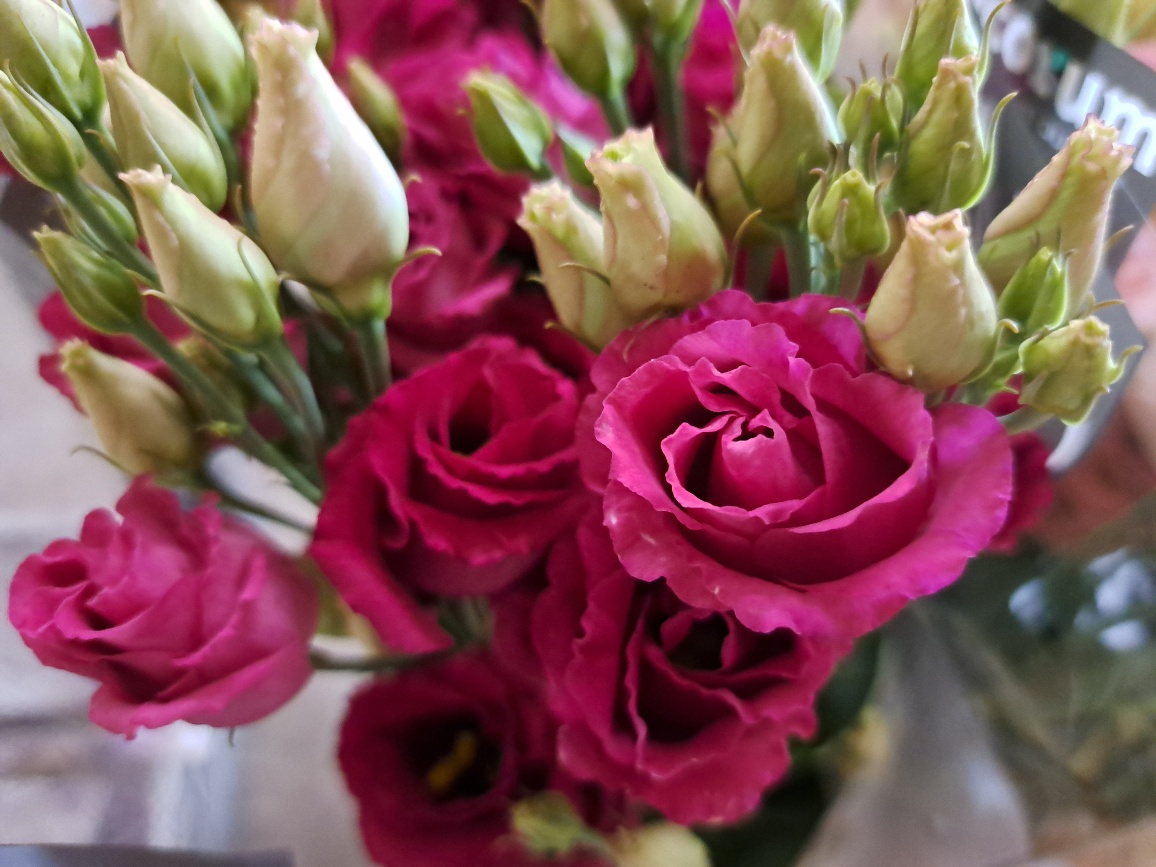
Care tips
- Cut the ends of the stem, and place the flowers in clean water. Make sure that the vase/bucket is really clean and make sure that the leaves don’t touch the water.
- Flower food is a must for Lisianthus! It ensures for a long vase life. When refreshing the water, add new flower food.
- Keep the flowers away from direct sunlight or draft.
Uitgelichte blog items
Blog
It’s Skimmia time!
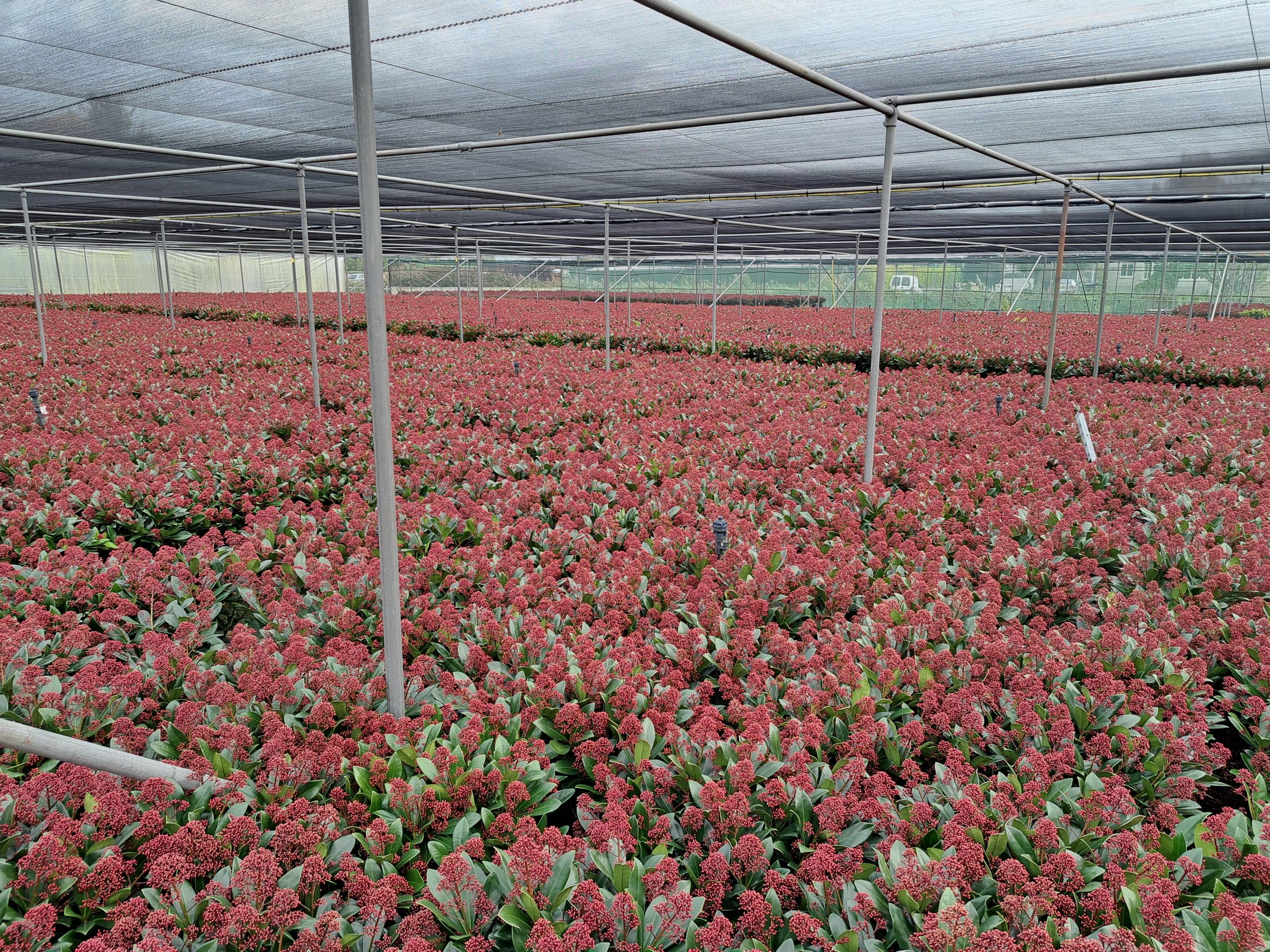
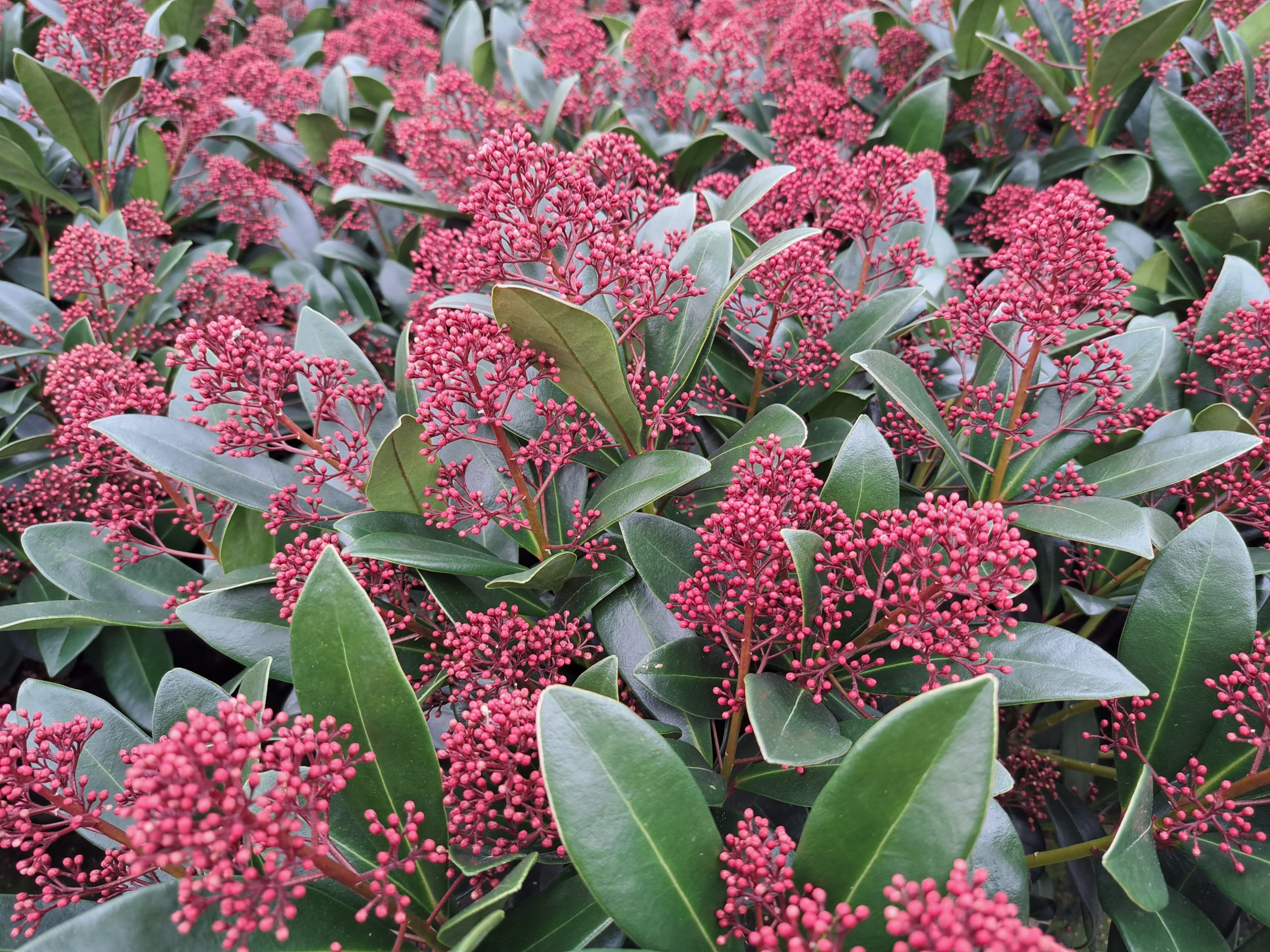
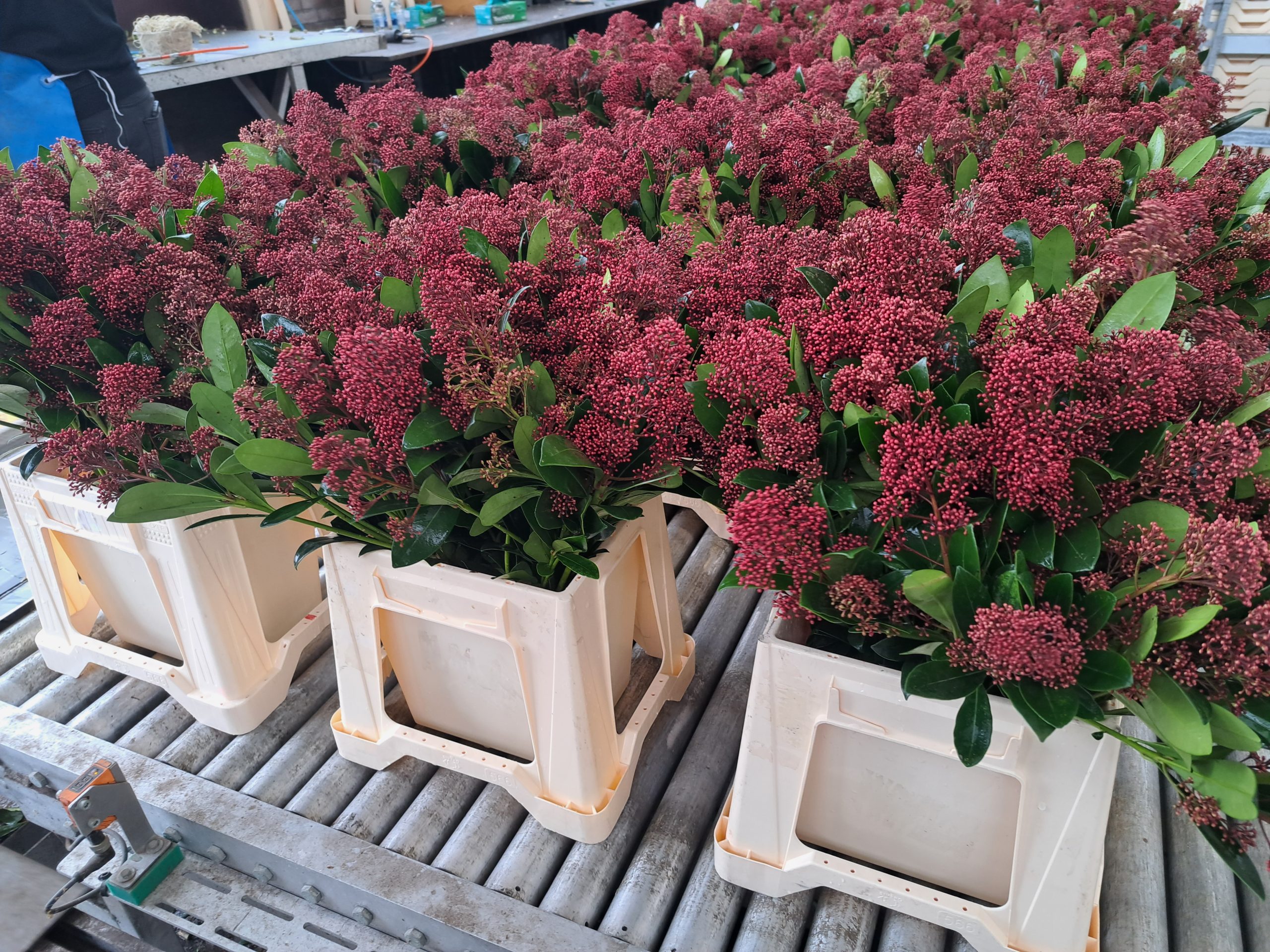
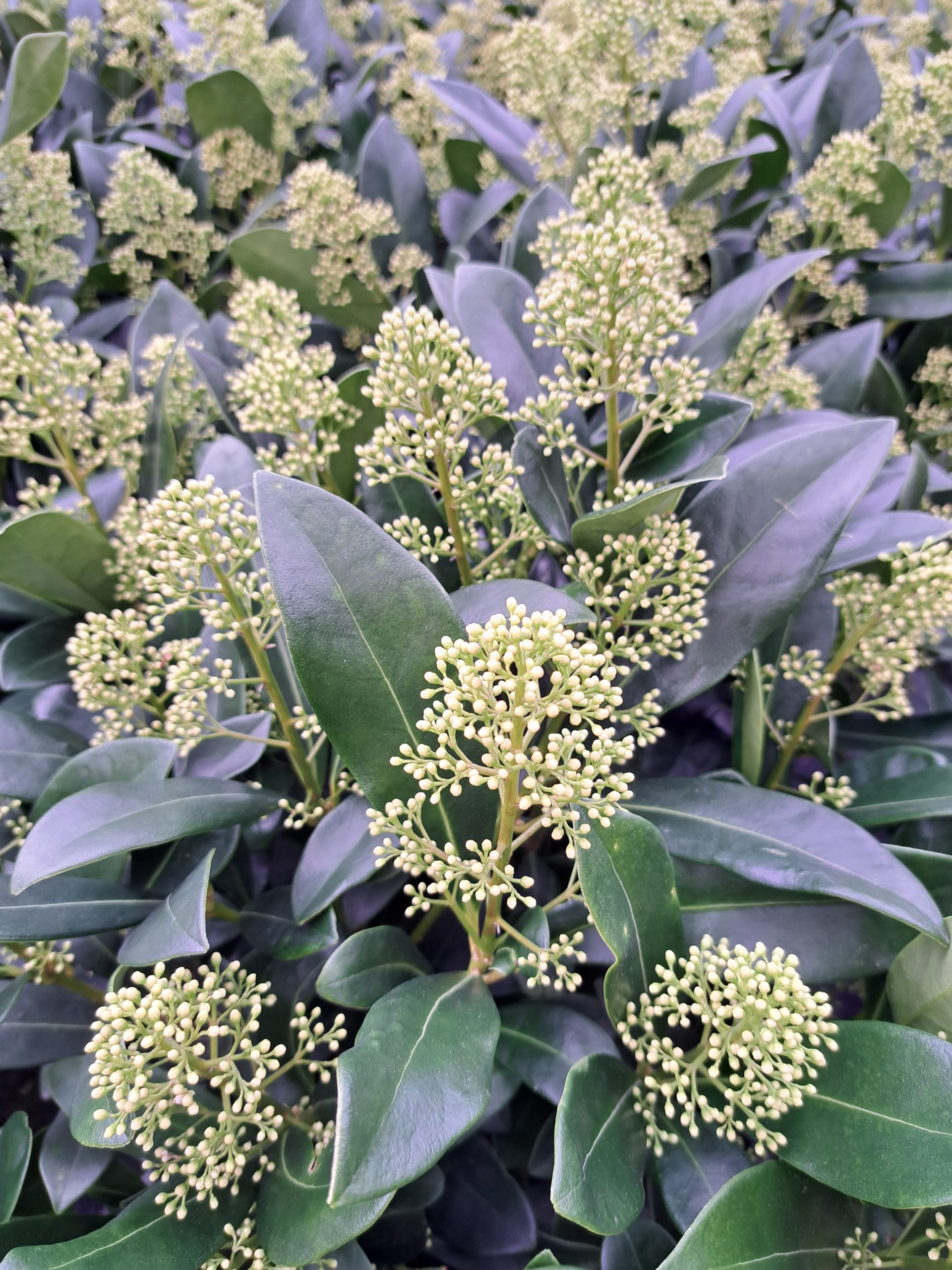
It turns out, Skimmia is a fully circular product!
Skimmia… What do you think of when you hear the name? The red or greenish flower buds? A hardy autumn and winter shrub that graces us with colour in the darker days of the year? Or… is it the perfect filler for your bouquet or floral arrangements?
Skimmia is mostly grown as a garden shrub, but a couple of growers in the Netherlands also grow it as a cut flower! F. Kuipers has been growing Skimmia for decades, first as a garden plant, but nowadays brothers Ron and Sietse grow it as a cut flower. They specialize in growing high quality flowers in their nursery in Boskoop. Almost all of the Skimmia that we buy at Hukra comes from this nursery.
About one third of the entire production is sold as regular flowers, and two thirds are sold around Christmas time in a variety of painted colours.
Growing Skimmia flowers takes two years. Depending on the variety, the plants are placed into soils plugs, or directly into the pot. Rubella is a variety of which the cuttings are placed directly into the pot, as it is able to develop and grow its roots very fast. Other varieties are placed into the soil plugs, where they are able to develop their roots much better than when being placed directly into the pot. After a couple of weeks, the soil plugs with cuttings are placed into the pot and the plant is allowed to grow fully. The pots are filled for about 90% with soil, and topped off with a layer of fine chopped wood chips. These wood chips are a very dry material that stop moss and weeds from growing on the soil. The first year the plants stay in the greenhouse.

In the first year, the Skimmia grows and develops its first flowers. These flowers are removed, and from those points new stems develop. Removing those first flowers is a very important and necessary step, otherwise the Skimmia doesn’t grow to the correct length needed for cut flowers!
After a year in the greenhouse, the plants are moved outside, where they stay another year. Placing the plants outside causes them to harden, giving them their sturdy stems and leaves that Skimmia are known for. The plants are placed in such a way that there is enough space between the plants, so the light can reach all the stems. This way, enough flowers can develop on the plant.
After two years, when Autumn comes rolling around and the flowers are fully grown, it’s time to start harvesting them from the plant! The stems are cut and collected, sorted, and bundled in such a way so that each bunch contains ten Skimmia flowers. The flowers are packed and transported to the auction, or directly to the customer.
But what happens with the cut off plants? It turns out, Skimmia is a fully circular product! The pots are emptied and send back to their producer to be recycled. And the left over soil and Skimmia roots are processed and turned into compost.
But that’s not all! Because of its hardiness, Skimmia is not very susceptible to diseases. It’s only plagues that it need protection from and F. Kuipers does this through the use of natural enemies. No pesticides are needed! In fact, the company has perfected the use of this form of organic pest control through careful studies and even cooperation with students of the University of Maastricht! F. Kuipers holds and MPS A certificate.
Want to buy these amazing Skimmia? You can find them in our webshop!
Uitgelichte blog items
Blog
Emiel de Jong – Ilex Magic!
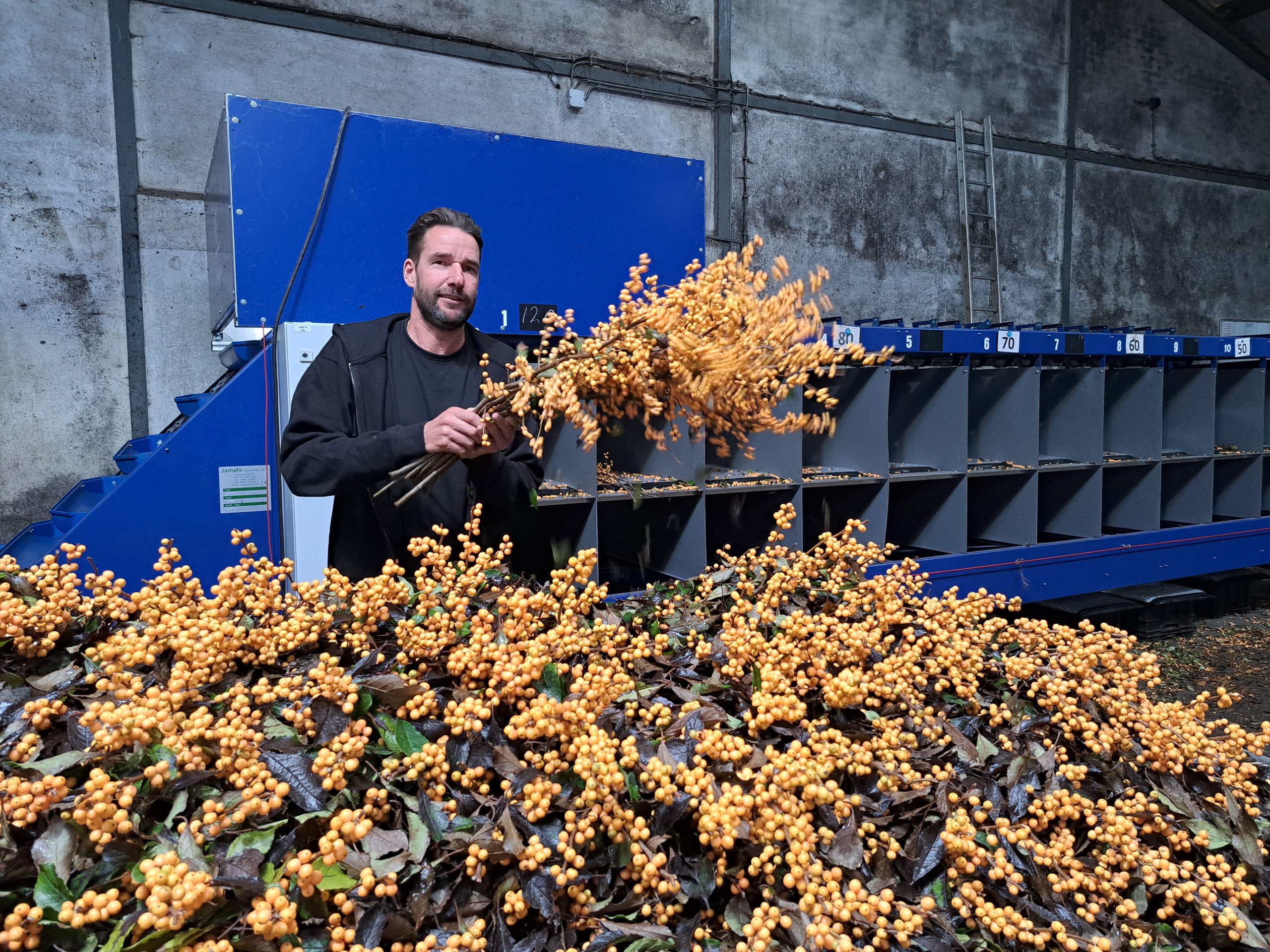
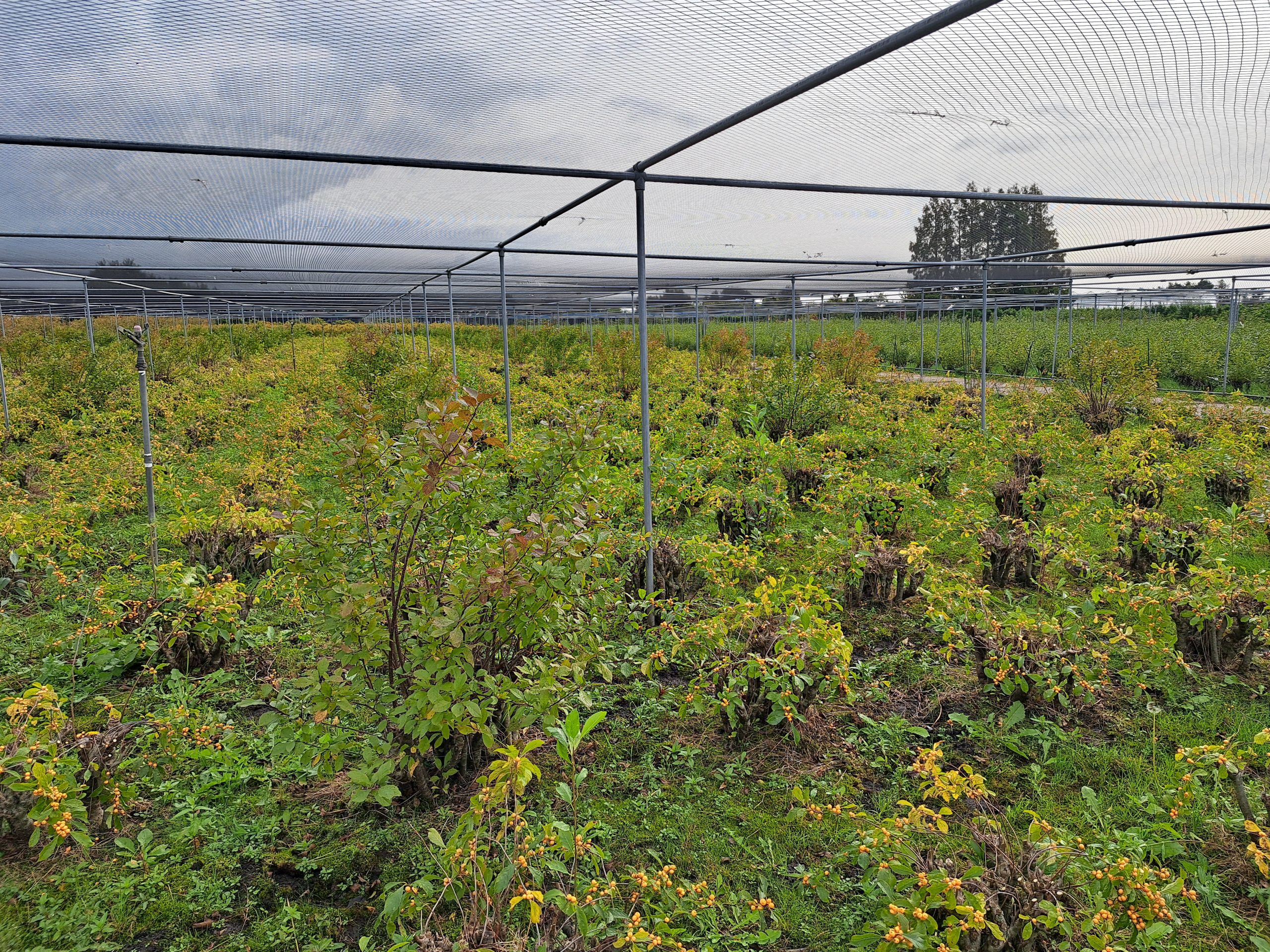
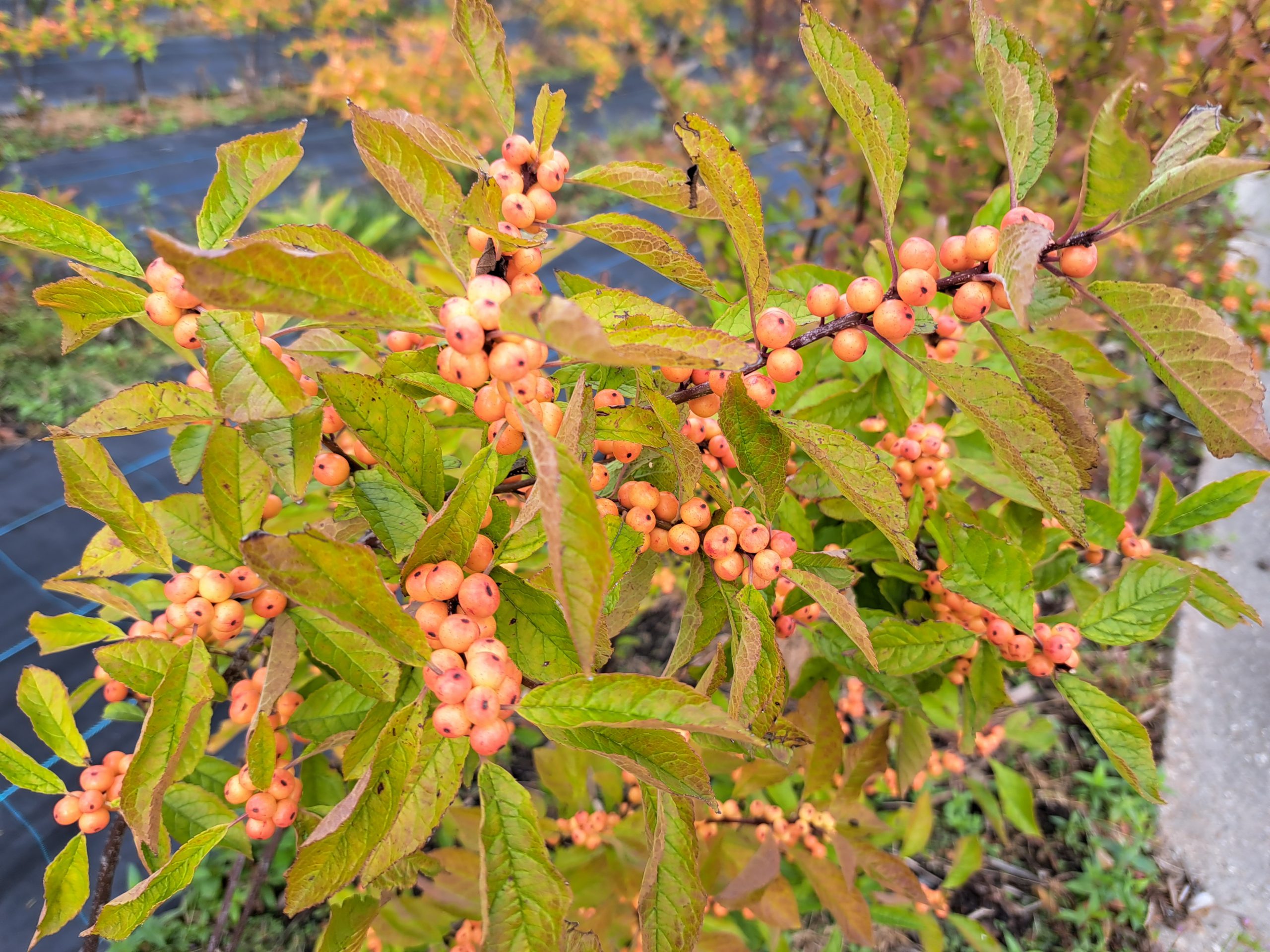
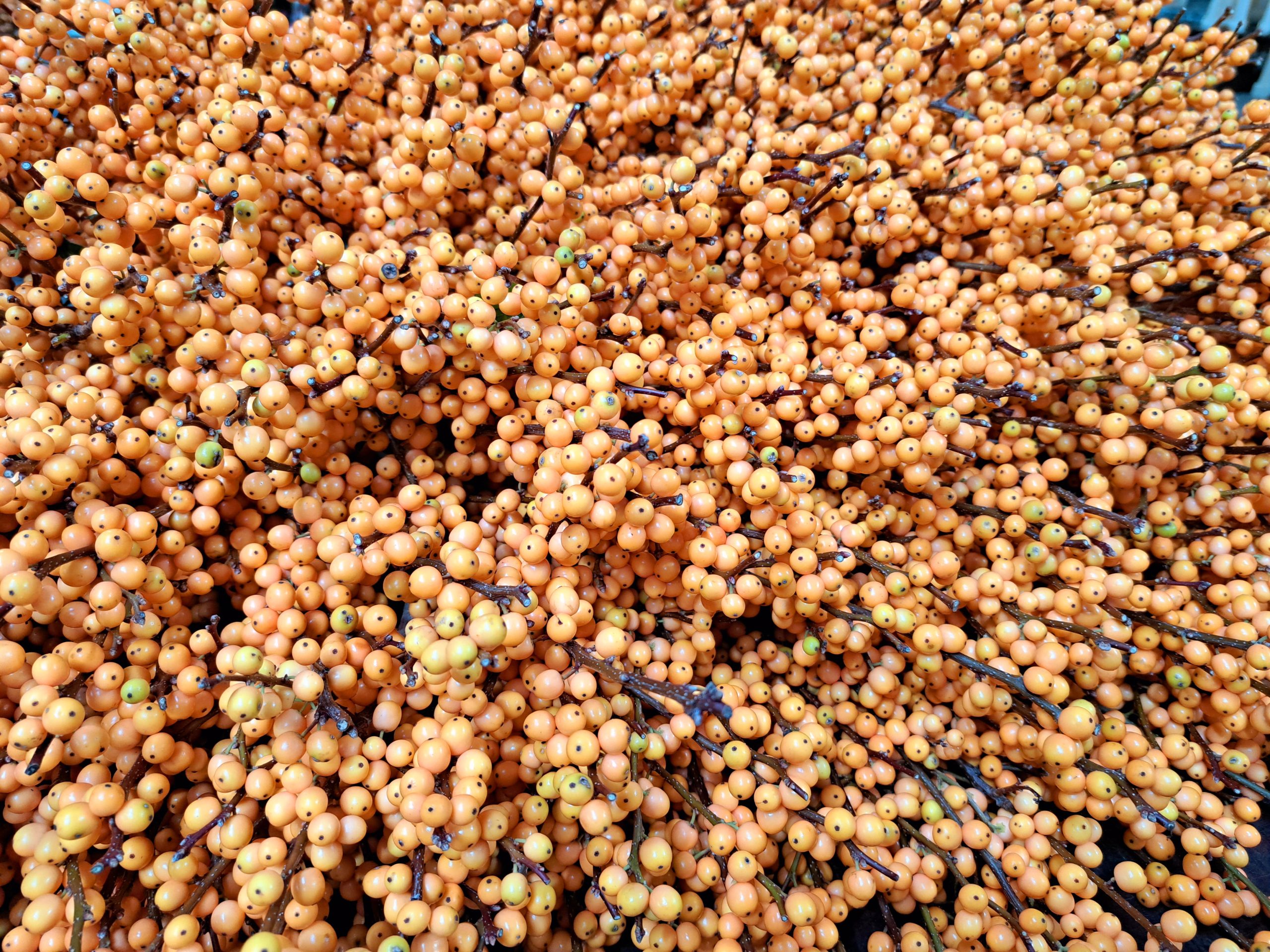
“Some of the Ilex plants in Emiel’s nursery are between 50 and 60 years old! Isn’t that amazing?”
Emiel de Jong is an Ilex grower located in Boskoop, and is known for growing amazing quality Ilex in a variety of colours. On the nursery of 10 hectares, Emiel grows seven different varieties of Ilex Verticillata. Everybody knows Ilex for their colourful berries, but before you get these amazing branches in your hands, they have had quite the unusual journey!
Ilex are a shrub that grow outside in the field. Only the female plants produce berries and they need their male counterparts in their vicinity to do that. So there are typically always a few male plants planted in between the females. Every year during springtime, a local beekeeper installs hives on the grounds of the nursery, so that the bees will aid with the pollination. When the plants develop their berries, nets are installed, to make sure birds can’t get to them.
The Ilex branches that we work with are already two years old! When they grow on the plant, the stem only develops leaves in the first year. It’s during the second year that it starts developing side branches. In the summer, the plant flowers and from those flowers it develops its berries. These start developing around August and from September on, the branches are cut.
The traditional red Ilex is usually only available around Christmas, and before that there are yellow and orange varieties available, like Golden Verboom, Oudijk’s Orange, Ilexia Julia, and Ilexia Victoria, which look amazing in Autumn bouquets and arrangements!
After cutting, the branches are hosed down with water and packed in plastic, and left for at least one to two weeks, depending on the variety. During this time the leaves will turn black and fall off. Then the branches are sorted and packed, and made ready for transport to the auction.
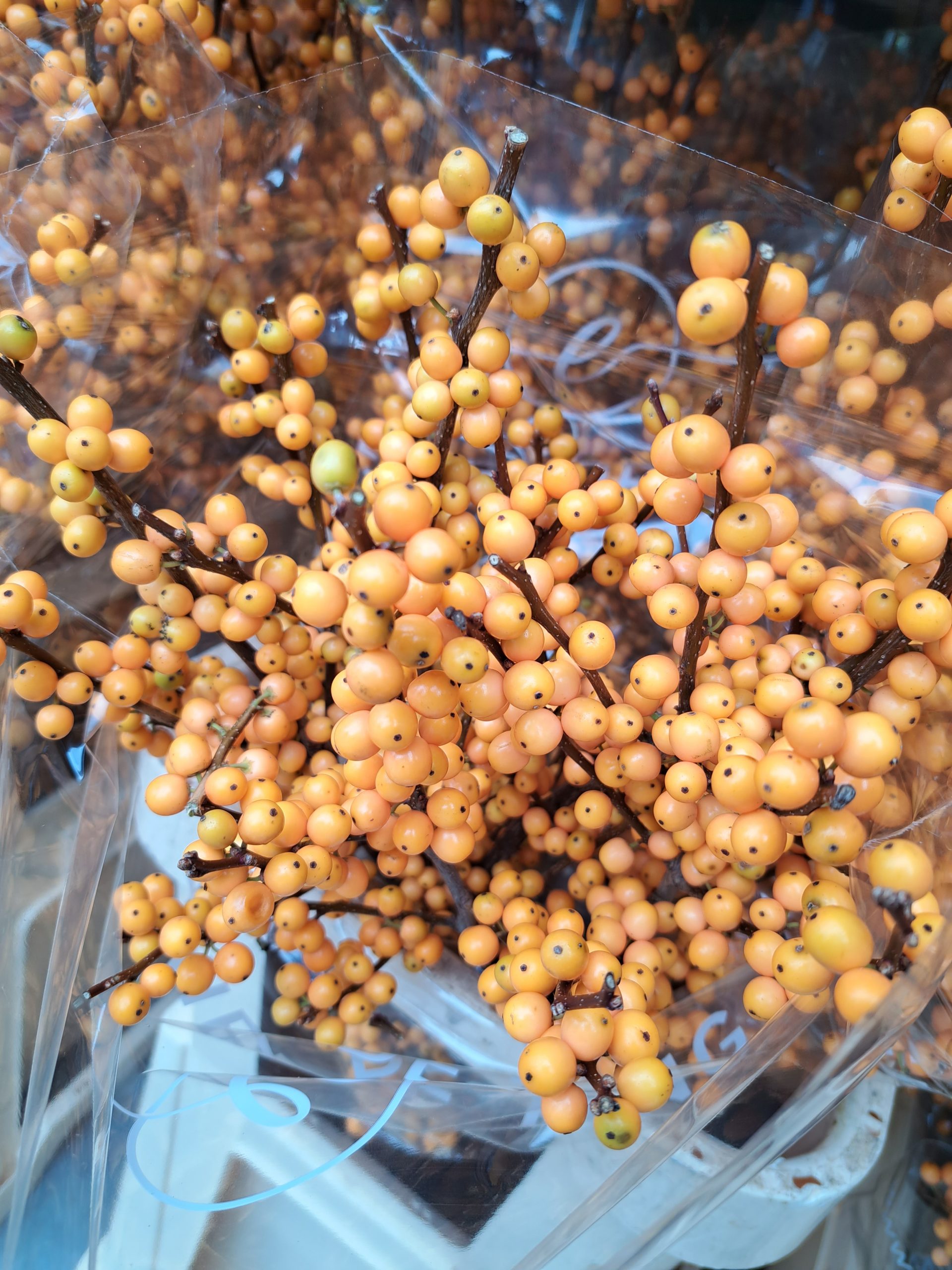
New Ilex varieties are not easy to come by. Unlike with other flowers and plants, they are not cross bred. Sometimes an existing shrub gives branches with berries in new colours, and from these cuttings the new variety is grown. This is a process that can take up to 15 years before there are enough plants and stems developed for a variety to be introduced to the market!
Ilex are perennials that can last a very long time! Some of the Ilex plants in Emiel’s nursery are between 50 and 60 years old! Isn’t that amazing? The plants also don’t really need any form of fertilizer. They just need water! It’s not necessary to move them or refresh the soil. To counter plagues and disease organic pest control is used. In short, Ilex is a product that is rather environmentally friendly!
You can find these gorgeous Ilex varieties in our web shop!
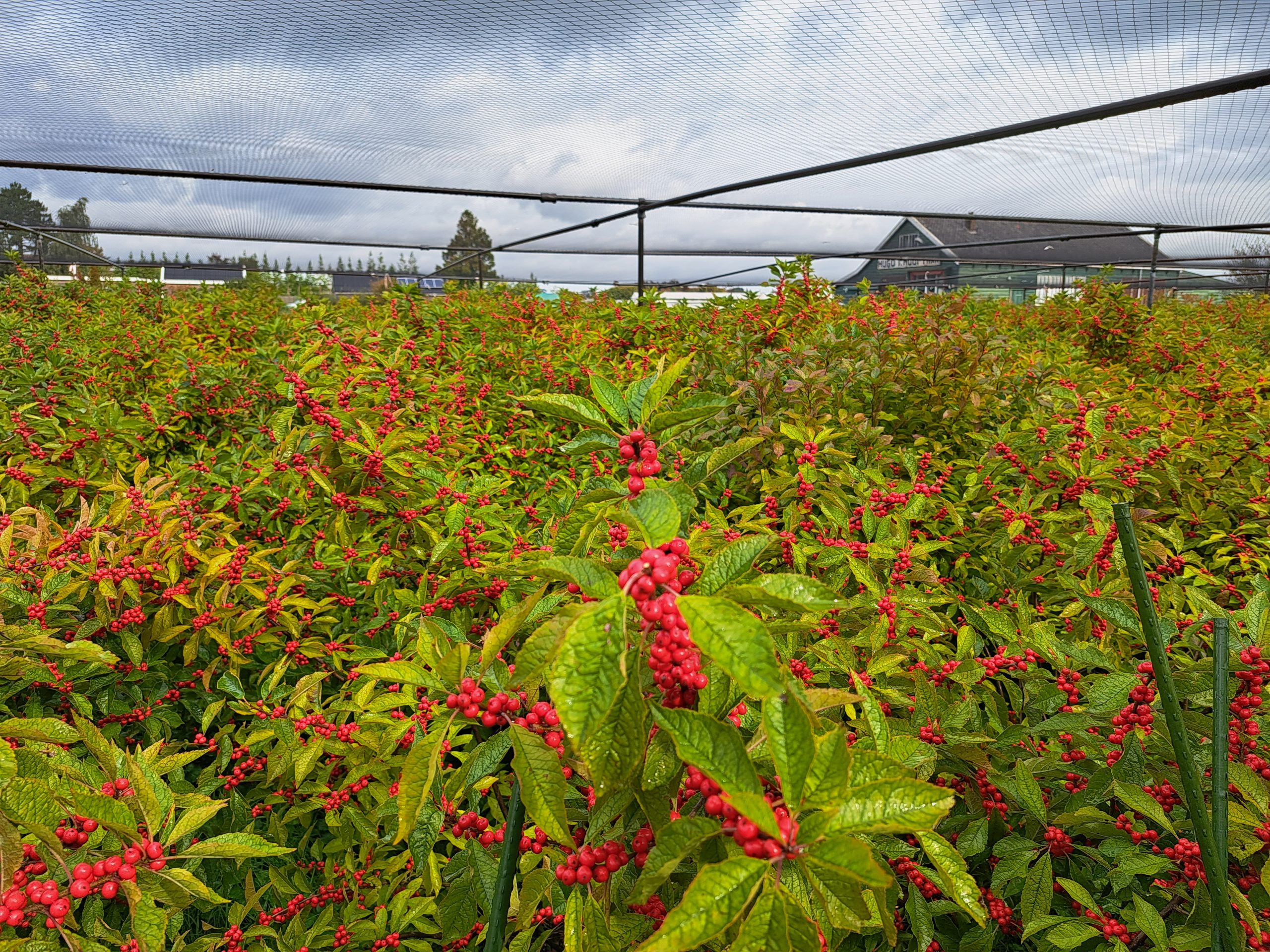
Care tips:
- Use a clean and sharp knife or cutters to cut the stems at an angle.
- Remove any excess leaves or berries, so they don’t touch the water.
- Ilex don’t need flower food. Just tab water and a clean vase! Of course, if you work them into an arrangement with other flowers, it’s okay to use flower food.
- Be aware of berries that have fallen off, they can leave stains.
- Ilex have a vase life between 7-21 days.
Uitgelichte blog items
Blog
Euphorbia by Luiten Flowers
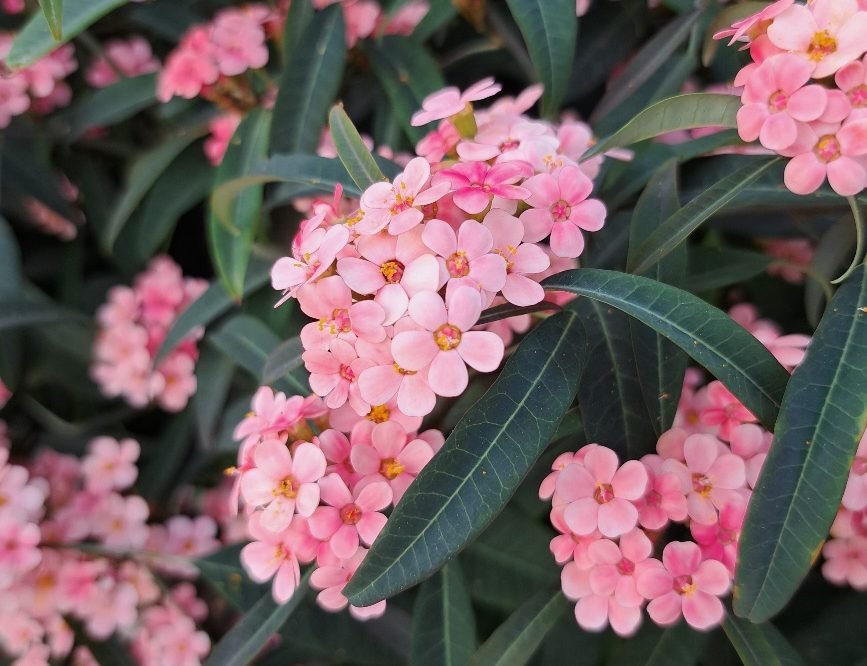
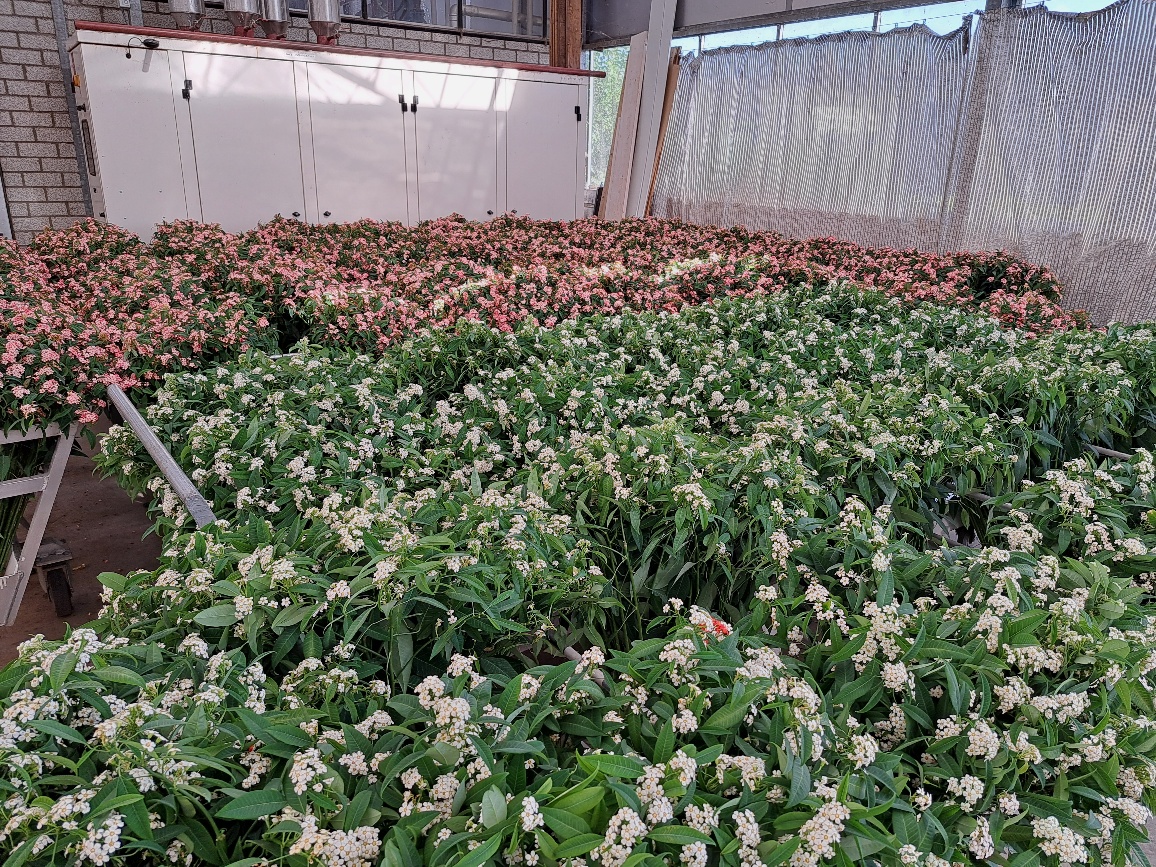
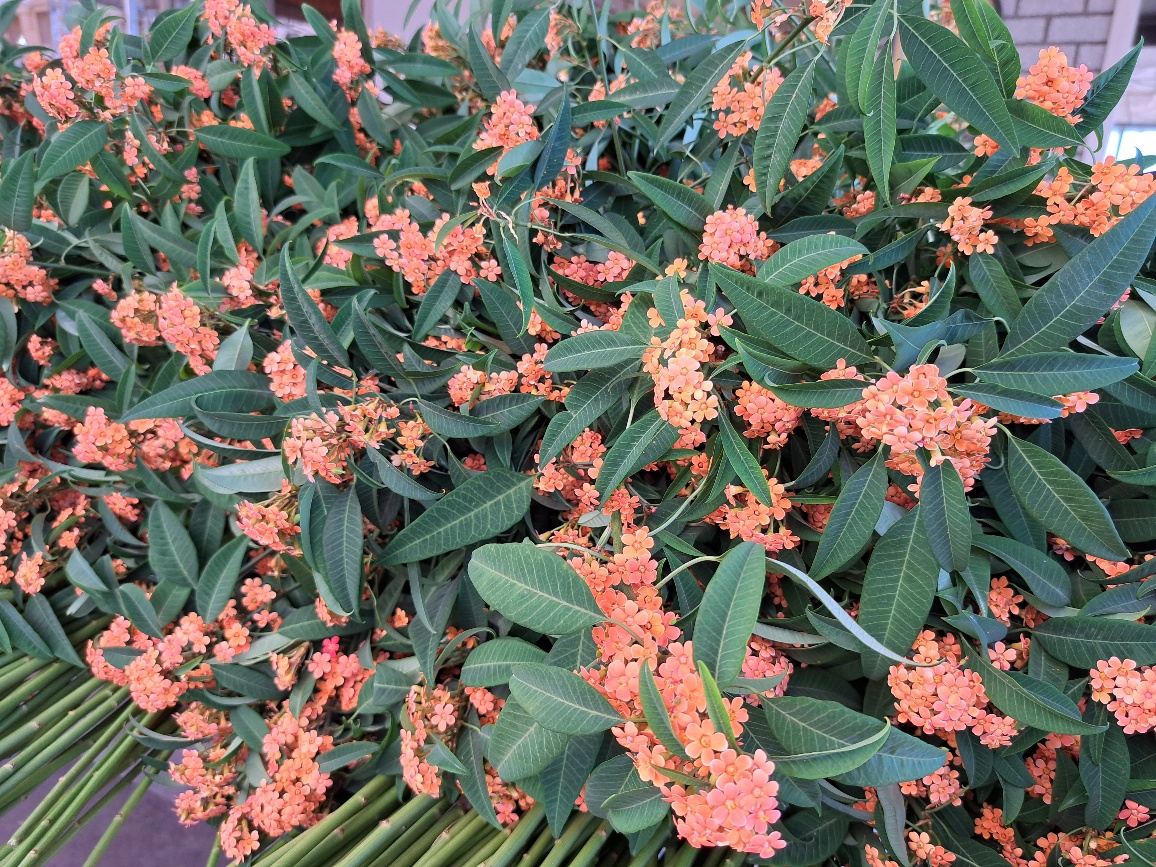
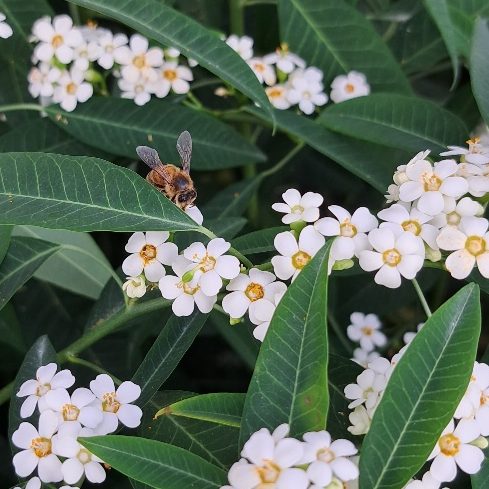
“One very charming aspect of visiting Luiten flowers is the bees in the greenhouse. You can hear them buzzing about!”
When Autumn comes rolling around, it’s time for Euphorbia! Strictly seasonal and a challenge to grow, Euphorbia Fulgens is a bit of a niche flower. But we love niche products here at Hukra, and we love learning all about them! Euphorbia is grown by only a handful of growers, who have mastered the art of growing it over the years. Luiten Flowers is one of those growers, and they have been growing Euphorbia for twenty years!
The journey of an Euphorbia flower starts as a cutting. Luiten Flowers has their own mother plants, from which they take cuttings for about 50% of the flowers they produce. The other 50% of the cuttings are bought, but from next year on, the company will stop buying cuttings and produce all of their own. But that’s not all! As Euphorbia is such a niche product, the growers work together as a tightknit community. Luiten Flowers will produce cuttings for all of the growers from next year on as well.
The cuttings are placed in soil and then transported to a rooting space. This is the most important stage of growing this flower! If the roots don’t develop in the right way, the plant won’t grow to produce the wished quality. But, when the roots develop and grow well, the plant is well manageable and will surely grow to produce the right quality. It takes about six months for a cutting to grow to a flowering stem.
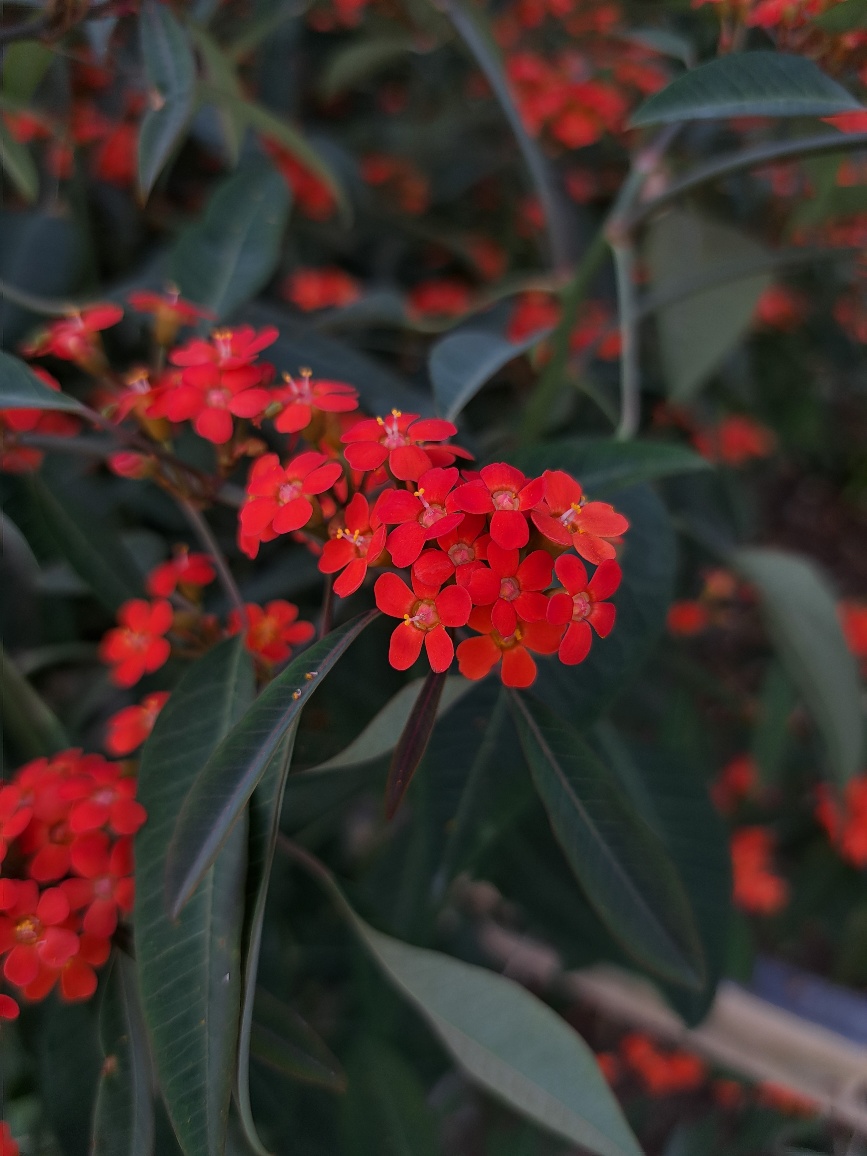
When we say that Euphorbia is a well manageable flower, it means that the grower can steer the growth of it, the condition being that the roots of the cutting have developed well. Water management is the most important aspect in this. More water means more growth, less water means the growth will slow down. Of course temperature and sunlight play a big role as well.
Euphorbia is sensitive to sunlight, so therefore it’s grown to produce its flowers during Autumn, which is the ideal time for the flowers to bloom.
One very charming aspect of visiting Luiten flowers is the bees in the greenhouse. You can hear them buzzing about! They come flying into the greenhouse from a local beekeeper, and are drawn to the Euphorbias pollen, which they clean off the flowers. Bees in the greenhouse also mean less pests. Luiten Flowers uses organic pest control, and the bees are a nice (albeit unintentional) extra in keeping unwanted insects out of the greenhouse.
When the Euphorbia stems are fully grown, they are cut by hand and placed onto large carts to be taken to the production line. The flowers are put in bunches, and then placed in boiling water. Euphorbia stems, when cut, produce a latex like liquid that closes off the stem, preventing it from absorbing water. By placing the stems in boiling water for about eighteen seconds, this effect is countered and the stem are able to absorb water. The stems are then placed in carts with a pre-treatment agent, where they have to stay for a minimum of four hours. The pre-treatment agent improves the vase life of the Euphorbia. Afterwards the flowers are packed and send to the flower auction.
One common misconception about Euphorbia is that the florist has to put the stems in boiling water a second time, but this is not necessary at all! The grower has taken all the required steps to ensure you receive a flower that you can work with perfectly!
Euphorbia is a flower that ‘lives’ on the vase. The stems are harvested with open flowers, and this means some flowers will wilt on the vase, but new flowers open up as well! The flowers can last up to ten days on the vase, and it’s not necessary to add any flower food to the water. Euporbia has to be place outside of the cooling unit, ideally at a temperature above 12°C.
Want to work with this gorgeous Autumn flower? You can find all the available colours in our web shop!
Uitgelichte blog items
Blog
Bredefleur Lilies
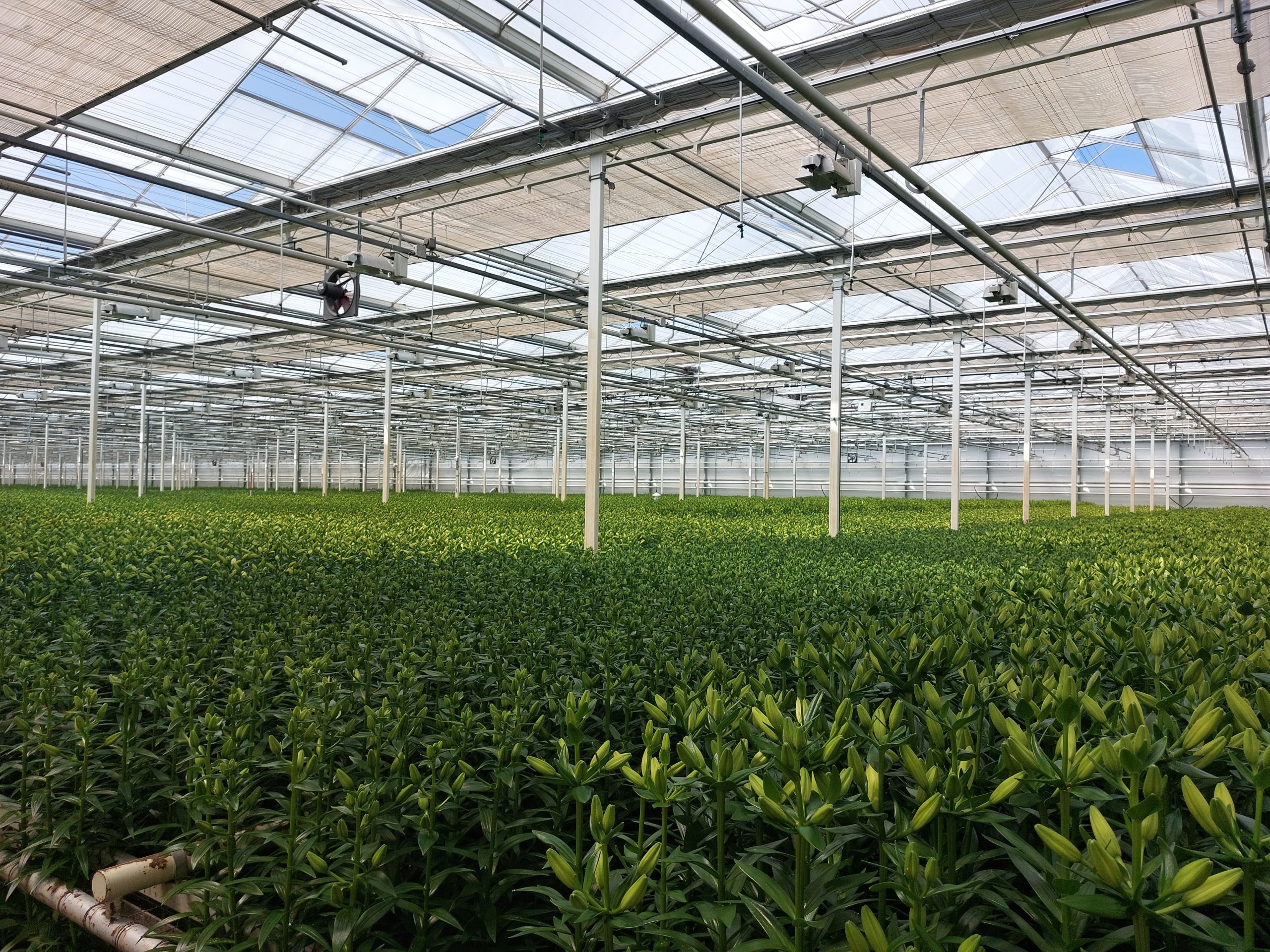
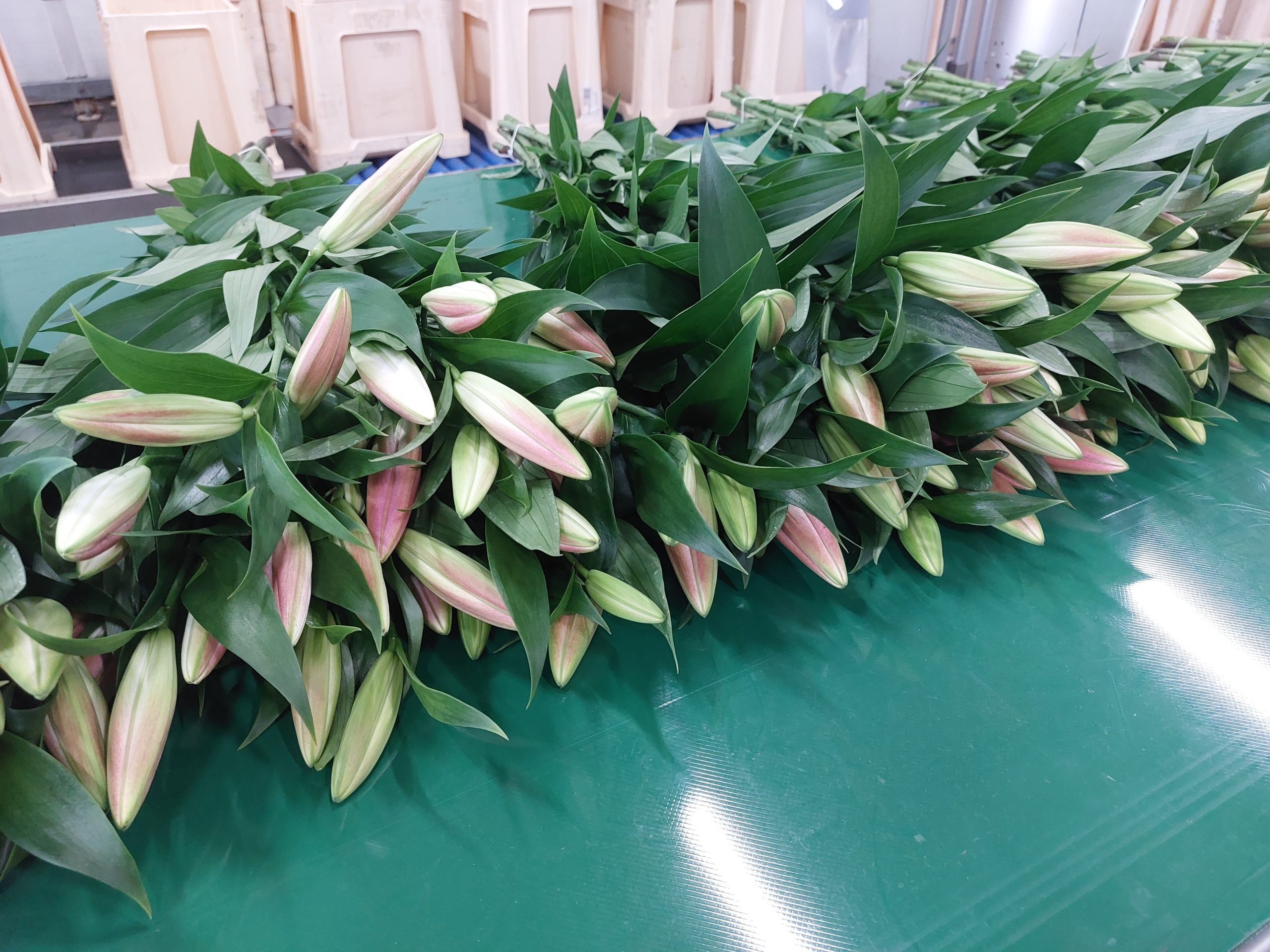
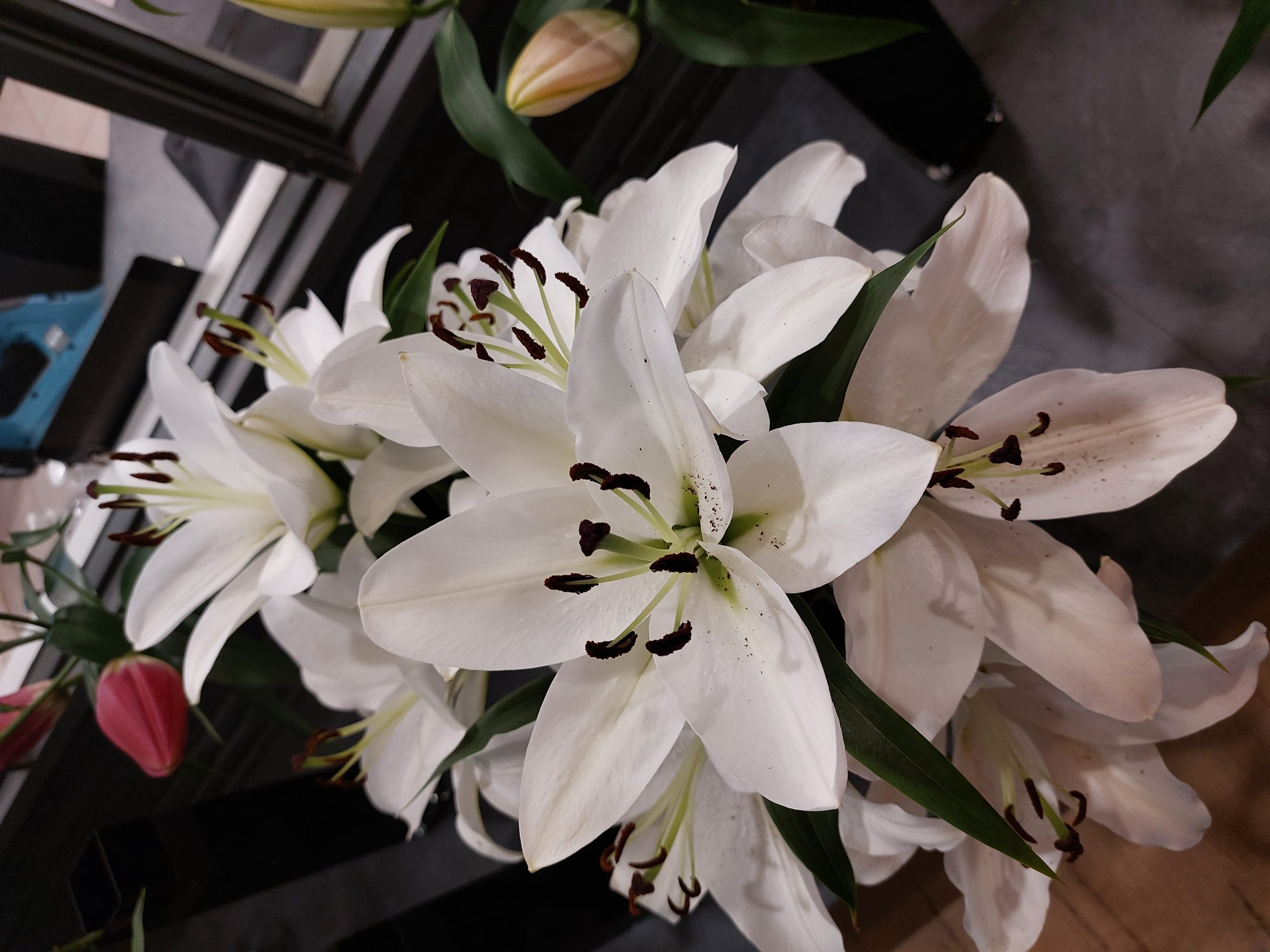
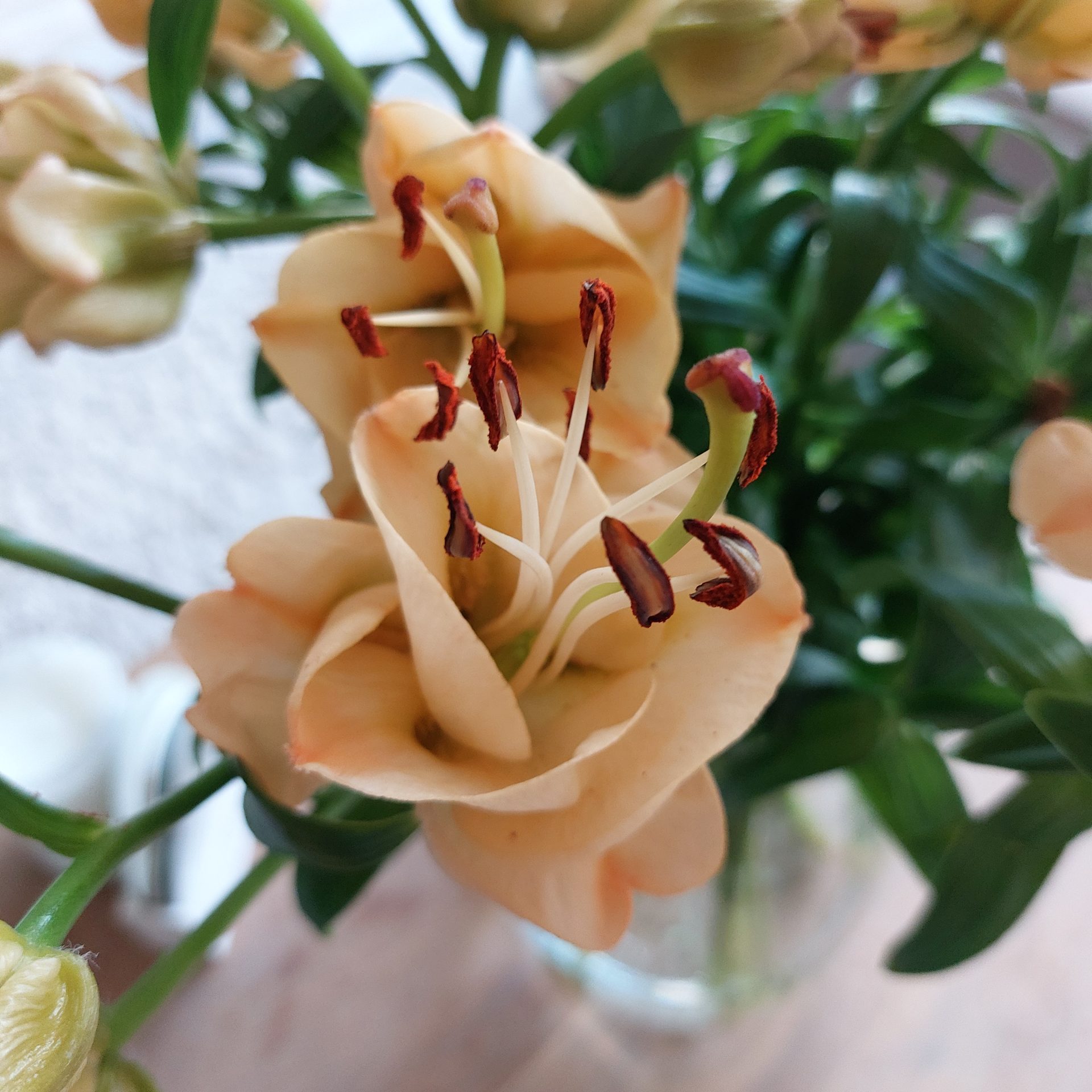
Innovation, Connection, and Inspiration
At Hukra, we handle and sell 525.000 stems of Lilies a year on average. Lilies are in our flower top 5, and therefore we need reliable partners who supply us with the cream of the crop. One of our top Lily suppliers is Bredefleur, who supply us with about 40% of the Lilies that we sell. Known for their outstanding quality, this grower produces a whopping 20 million stems a year.
With two locations in the Netherlands, this family company grows about 35 varieties of Lily in their greenhouses in Moerkapelle and Luttelgeest. The company is led by the brothers Peter, Levi, and Thomas. Each brother has their own responsibilities within the company, creating a broad and good base to work from.
Originally, Bredefleur’s assortment consisted of only single flowered Lilies, but they recently acquired a new greenhouse in Moerkapelle, which allows them to experiment with the growing of double flowered Lilies as well. Double varieties require different conditions for optimal growth, and are often more suitable for growing in crates than from the ground. As this new greenhouse was originally designed for pot plants and has a container system, this allows for double varieties to be grown in crates, enabling Bredefleur to expand their assortment.
Lilies are a bulbous crop, and the bulbs get delivered to Bredefleur in crates. The bulbs are placed in a cooling unit at freezing temperatures for several days. This triggers the growth of the flower in the bulb. The bulb is then allowed to thaw, before being brought to the greenhouse for planting. The planting of the bulbs happens with the use of a machine, operated by one single person. The machine plants the bulbs in neat rows, so that every bulb has enough space to develop their flower.
Within 8-10 weeks on average a full grown Lily stem can be harvested. Bredefleur harvests their Lilies in a riper stage. This increases the vase life of the flowers. But it also makes sure that the Lilies can be enjoyed almost right away in the arrangements they are put in, as the flowers open a bit quicker.
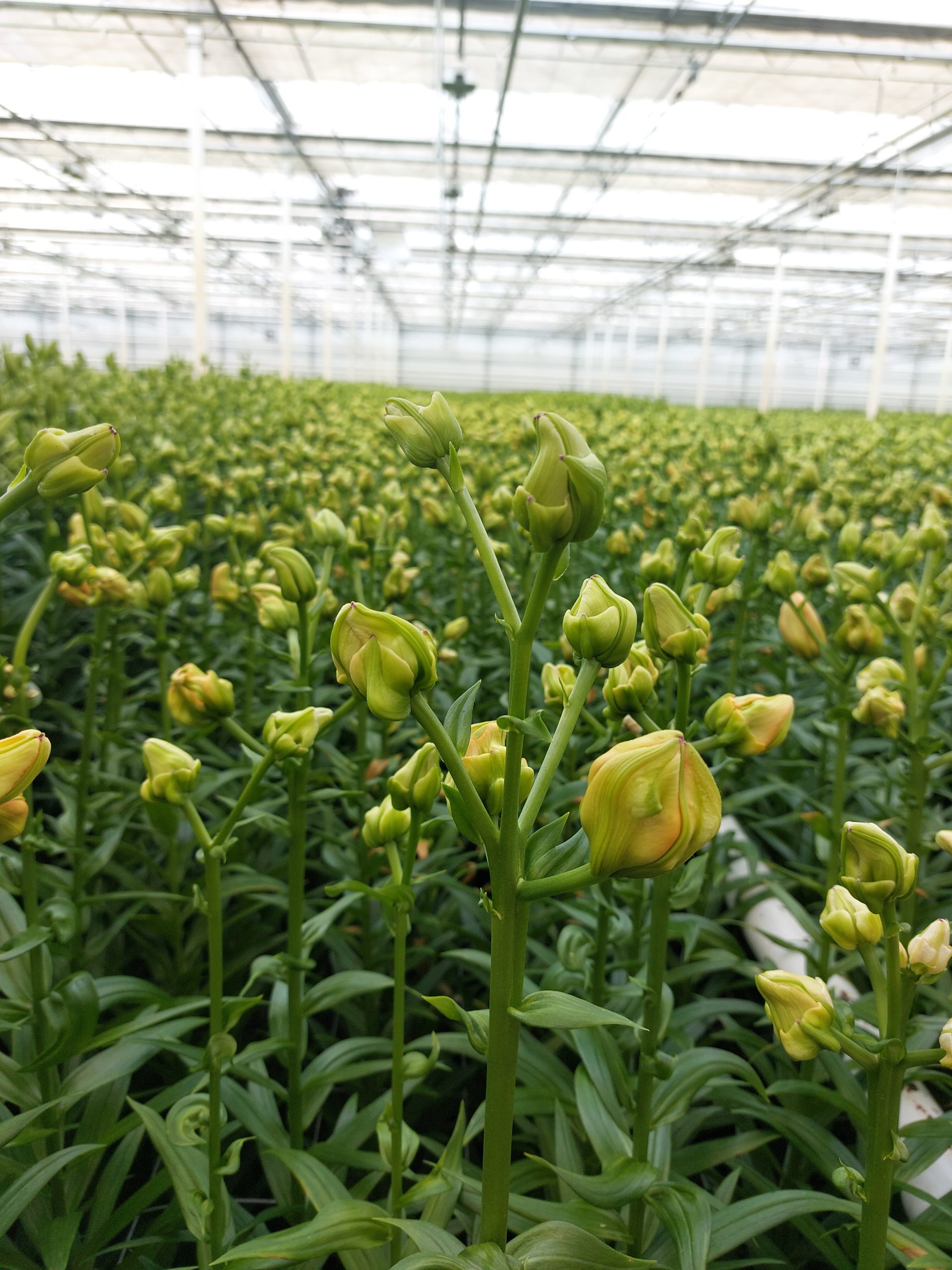
Assortment
One of the top varieties that Bredefleur grows is Bach. But they also grow other well-known varieties like Brindisi, and Albufeira. For those wanting something special, we recommend Apricot Fudge! This variety stands out because of its amazing flower shape and colour. There are also varieties that Bredefleur grows exclusively: for instance Zelmira and Viva la Vida. One of the newest varieties to be introduced is Bowl of Beauty, and the first double variety that the company has in their assortment. With its white colour and stunning flowers, it’s a real eye catcher for the wedding season.
Sustainability
Bredefleur grows their Lilies with the utmost respect for the environment. Over the years they have invested in multiple projects to ensure their impact is reduced as much as possible. At both nurseries solar panels have been installed on the rooftops. What the panels generate in excess is supplied back to hundreds of Dutch households. In the nurseries, a kind of insulating cloth is used on the ground to keep the cold out of the greenhouses. The greenhouses remain in the right temperature much easier, which saves 25% in heating costs. The company is currently experimenting with heating their greenhouses with geothermal heat. All water is reused. The company only uses rain water, so no water is extracted from the soil. The rain water circulates in a closed water system and is not discharged. This way the soil is not depleted and no waste streams are created. Like many other growers, Bredefleur is switching to LED lighting in their greenhouses. This will lower their energy consumption up to 40%.
Bredefleur prefers to let nature take its course. Their Lilies are biologically protected and grow with the help of wild insects. These are spread through the greenhouse in very fine sawdust. So whenever you find any of this on your flowers, you know that insects were used to keep pests from entering the greenhouse, and not chemical pesticides! Bredefleur carries the MPS A and GLOBAL-GAP certificates.
Did you know?
It is a well-known fact that Lilies produce pollen that leaves stains on your clothing. But did you know that UV-Light makes the stains disappear? Wash your clothes and hang them out to dry outside in the sunlight and voila! Stain-free clothes!
Uitgelichte blog items
Blog
Wans Roses
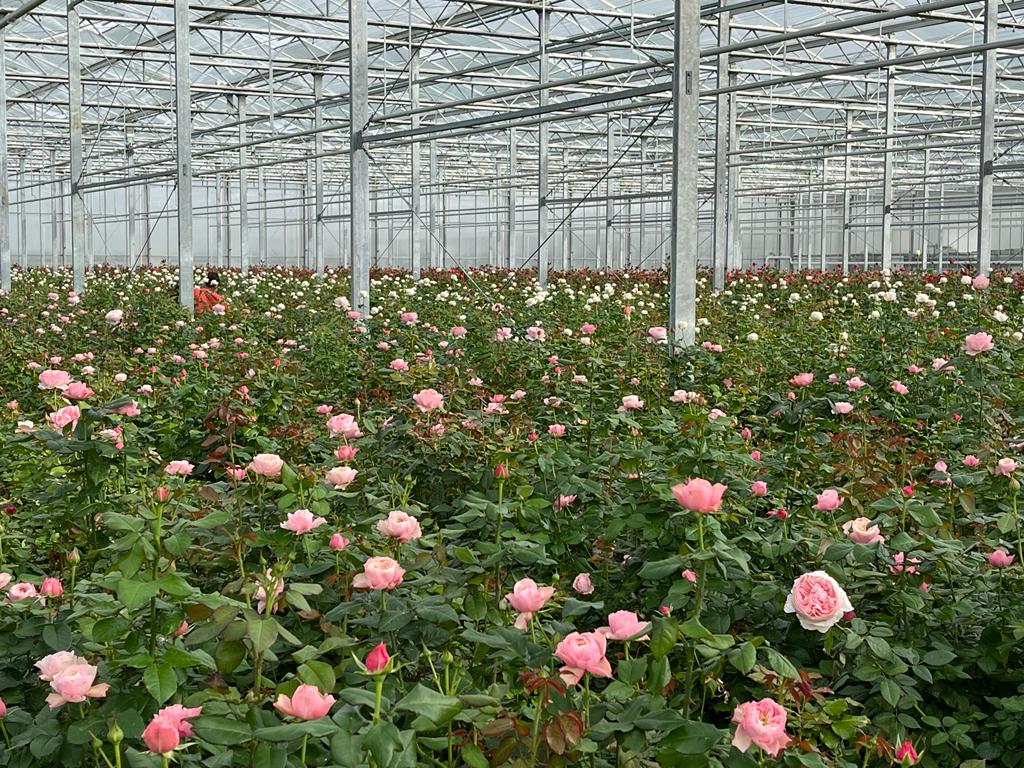
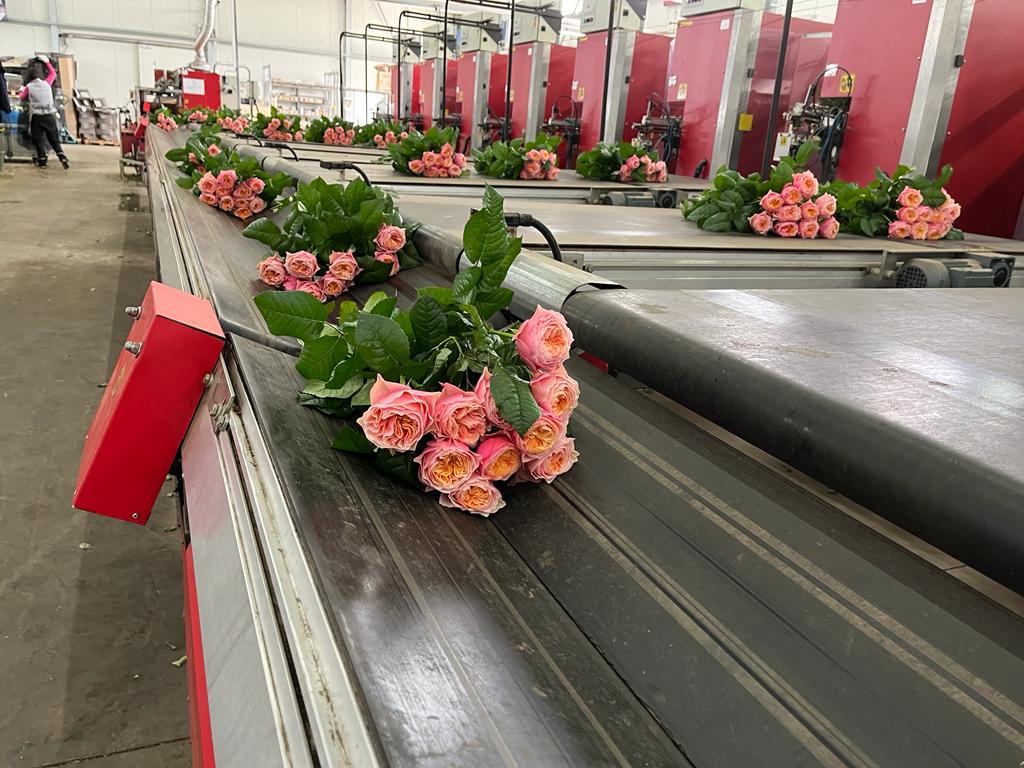
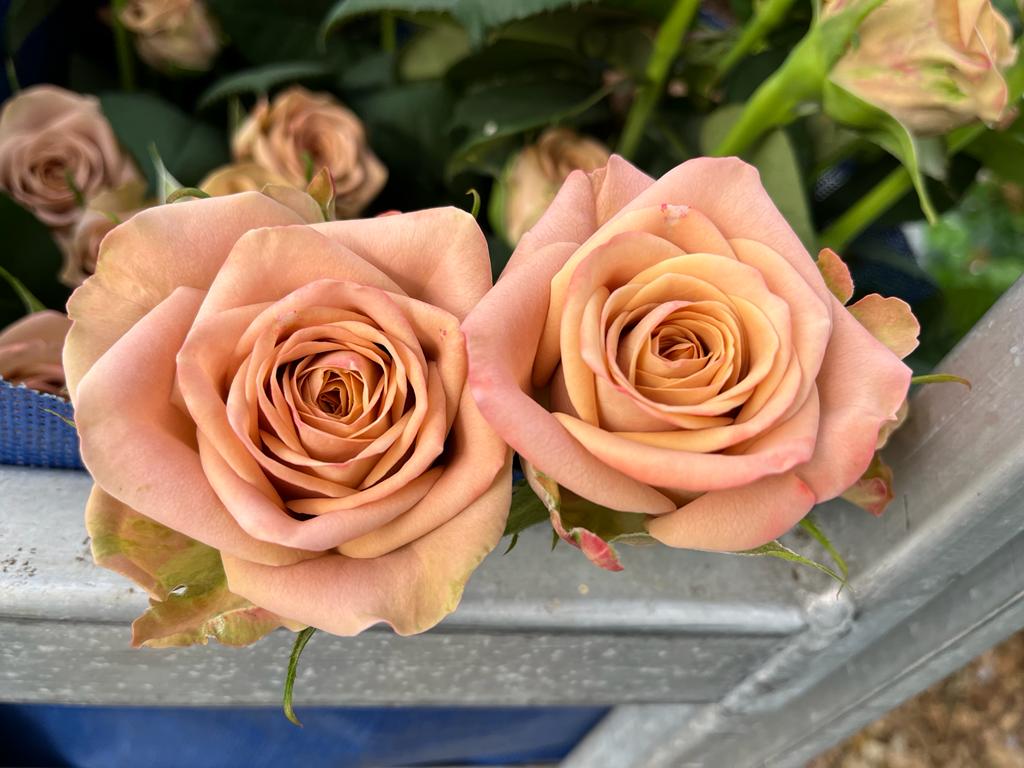
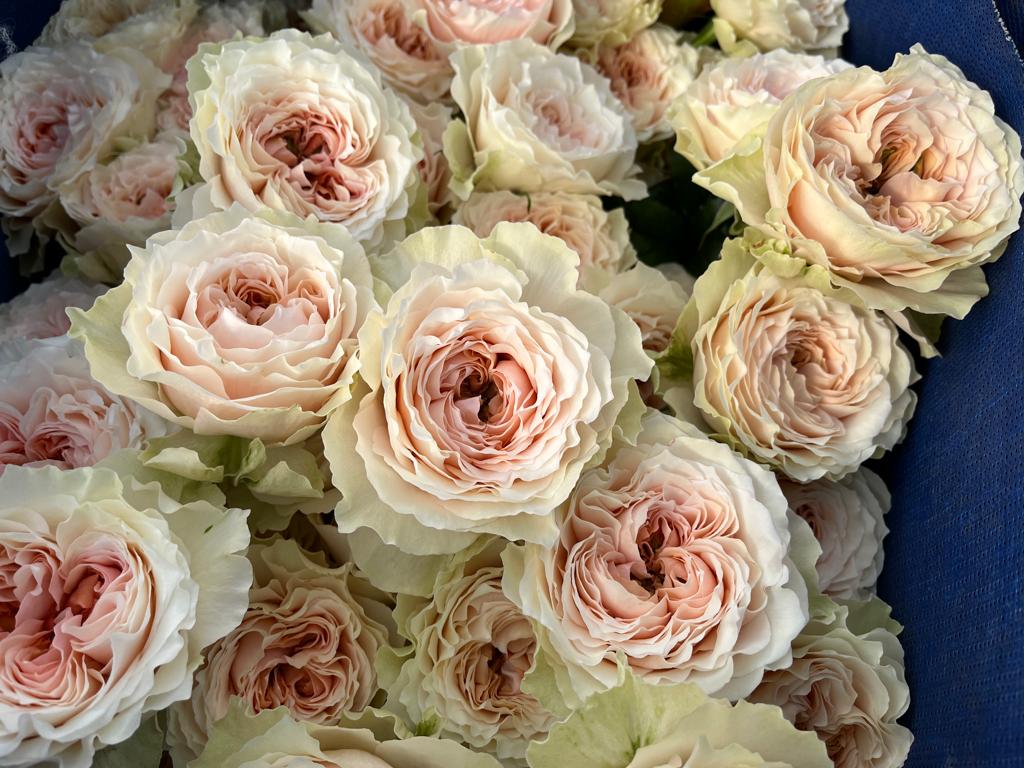
Royal Beauties
Who hasn’t heard of Wans Roses? This family company, located in Straelen, Germany has been growing cut-roses since 1975. Since 2011 they specialize in English type garden roses, scented wedding roses, and roses with exceptional colours. Strictly seasonal, the roses are available from early March until the end of October. Wans’ assortment contains thirty two varieties, which produce around 5.6 million stems a year, and are grown in a modern greenhouse, spanning 42,500 m² .
Last year, we had the opportunity to visit this fantastic grower and learned a lot about the process of how these beauties are grown. Wans Roses grows their roses in a sustainable and CO2-Neutral way. During the cultivation period of approximately five years, the rose plants grow in special coconut substrate on culture channels, which facilitates harvesting work. The greenhouses are heated with sustainable waste heat from three modern combined heat and power plants, which are operated exclusively with renewable energy resources. As of 2022 they also use a new wood chip boiler, whenever there are higher heart requirements. This way the company reduced their C02-emissions by 3,120 tons per year.
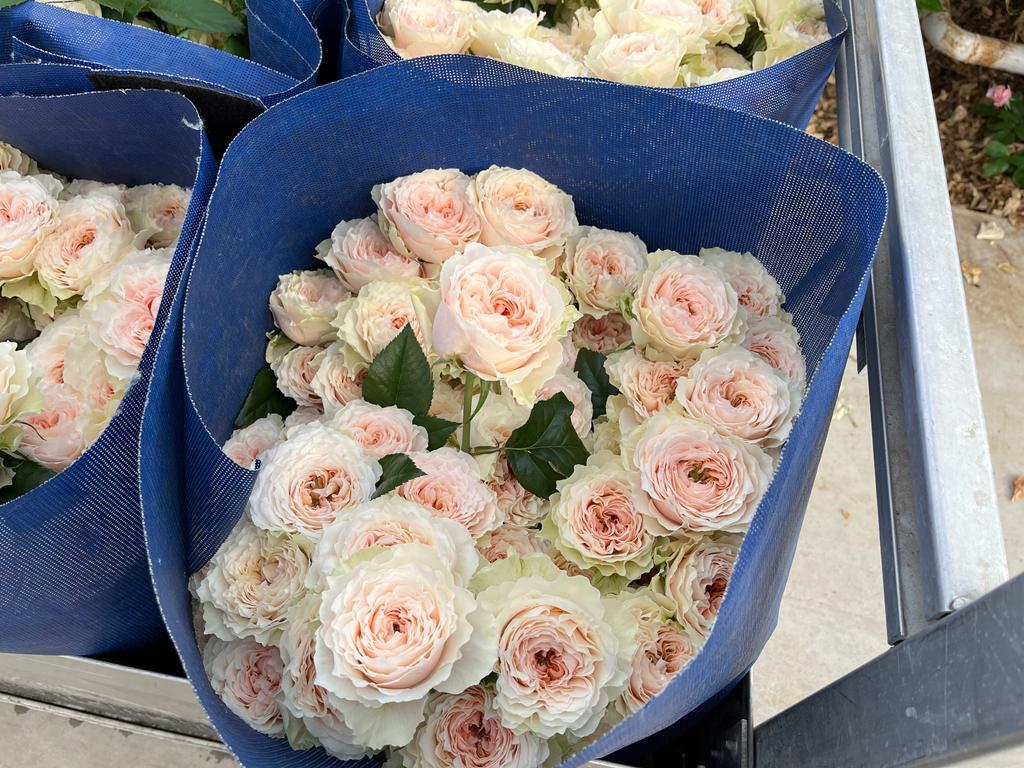
Waste water is reused completely through a system that uses UV radiation to clean the water, before it’s stored in large bassins, and the company’s own photovoltaic system powers the machines. The machines are only operated during the time the solar panels produce energy, so that no extra electricity is needed. There is no extra light used in the green house. This means the roses have a natural growing process and are grown with as less impact on the environment as possible, and with a better C02 footprint that roses imported from other countries!
To protect their roses from pests biological plant protection is used. This is mostly beneficial organisms, such as the predator mite and the creeping weevil, which act as natural enemies. Also, in terms of packaging, the company thinks ahead: all their roses are packed in paper sleeves that carry FSC certification. No plastic whatsoever, and the paper sleeves protect the flowers just as well!
You can find Wans Roses’ daily offer in our webshop under the VMP button!
Uitgelichte blog items
Blog
Groot&Groot Peonies


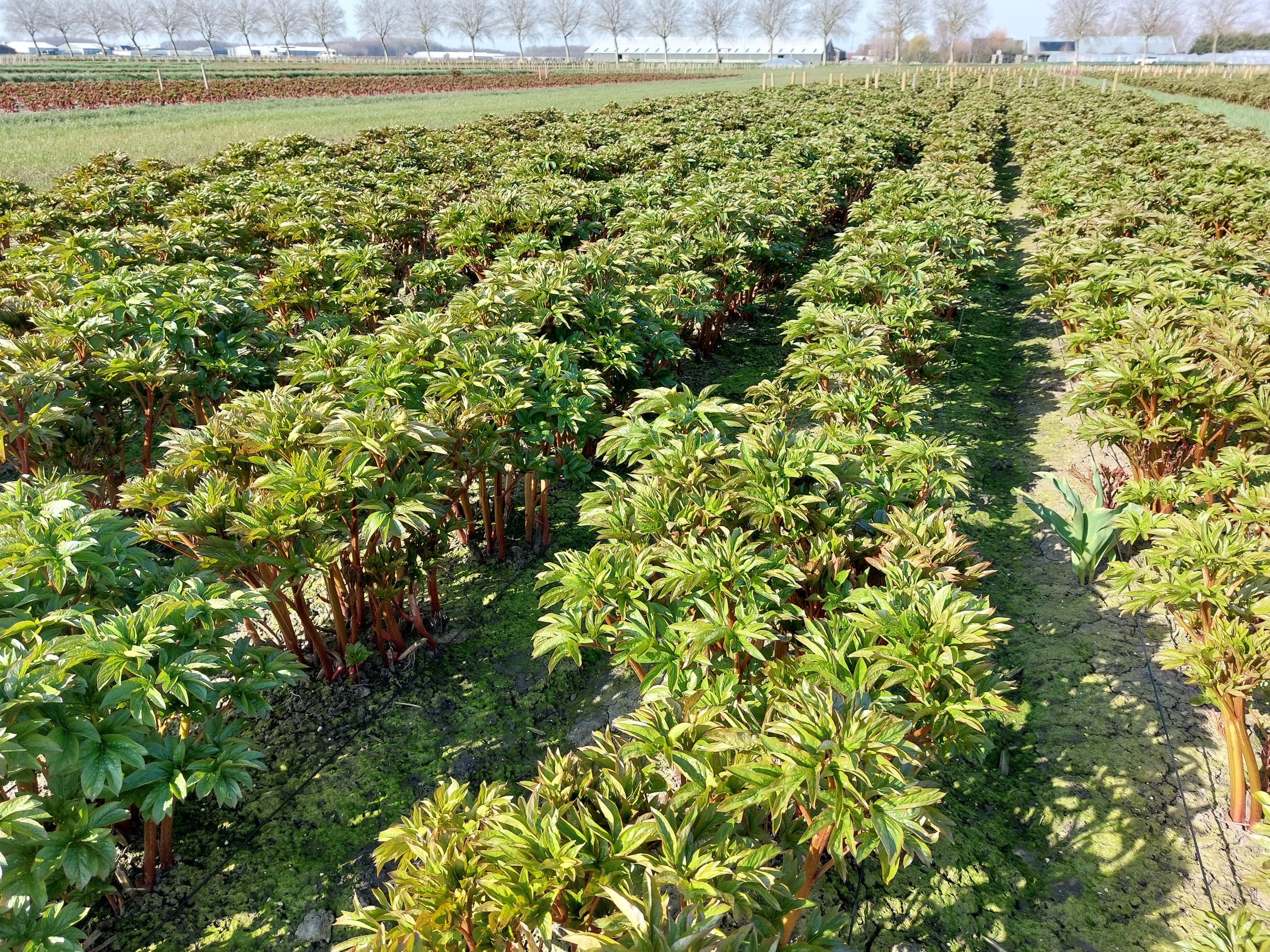
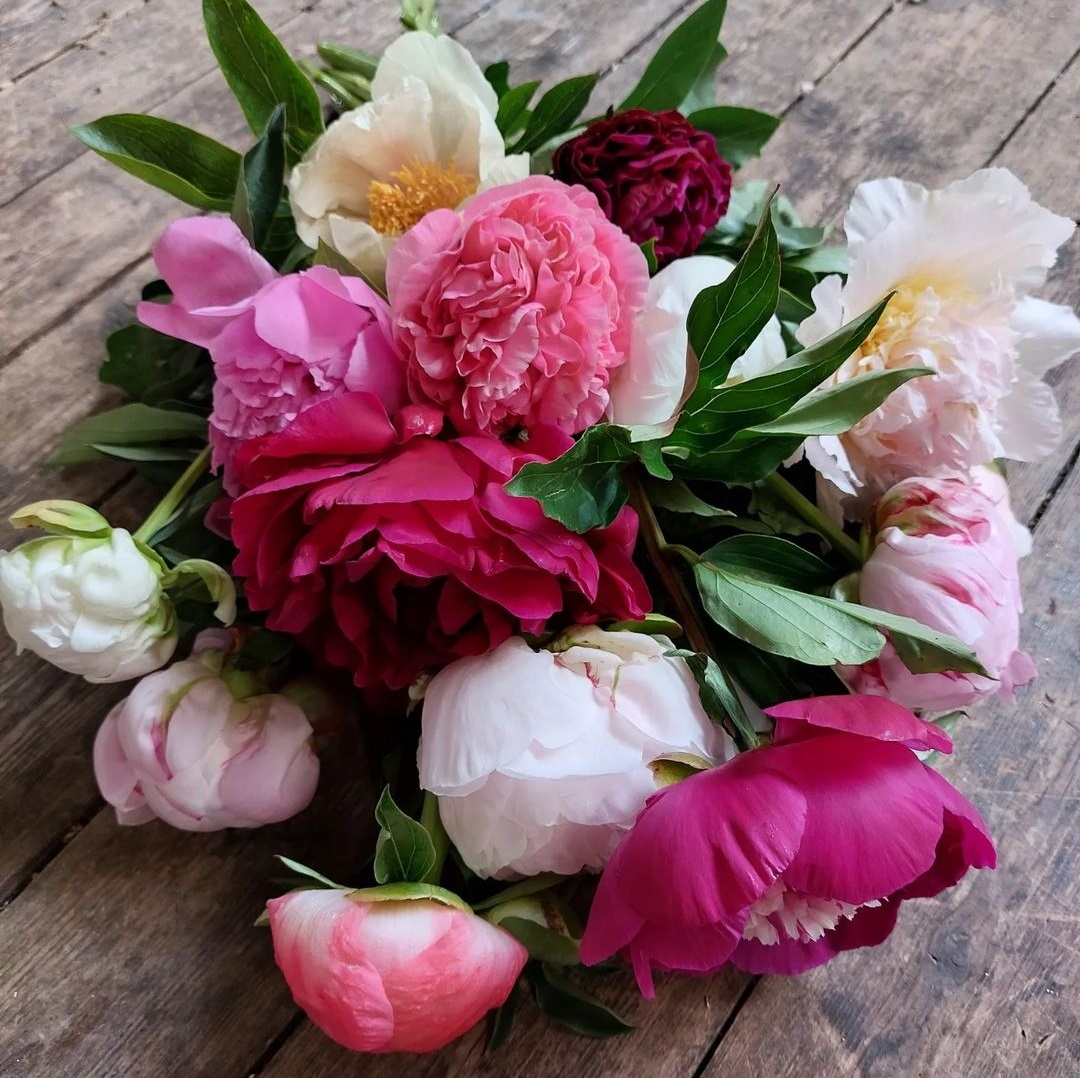
A look at one of our favourite Peony growers!
Groot&Groot Peonies is a grower of high quality Peony cutflowers and roots. With production locations and partners in the Netherlands, France, Italy, and South-Africa they are able to provide fresh Peonies year-round.
Their flower assortment spans 39 different varieties and their unique methods during cultivation, harvesting, and processing ensures the highest possible quality. Groot&Groot’s strenght lies within their strict selection process of their harvested flowers. This ensures that every trolley leaving their company has a uniform look and that all flowers in each bucket are the same size. This is exactly why we – at Hukra – are such fans of this company! Groot&Groot is innovative and continuously reviews their assortment. This way, they strive to offer the newest and best varieties available!
The flower
Peonies are a classic garden plant and it’s classified as a perennial. This means that it will flower more than once during its lifespan. The plants can grow up to 100 cm tall and they can last more than ten years.
When grown outside, peonies have a flowering span of about two weeks. The period in which they flower depends on the climate in which they are grown, but this is usually during spring time. A peony plant can produce between 6 to 15 flowers, depending on the variety and the circumstances under which they are grown.
The flowers are cut by hand, so that only the flowers of the best quality and in the right stage are cut at the right time. Groot&Groot does not apply large scale harvesting mechanisms, as this might damage the flower.
Multiple locations
Groot&Groot has multiple partners and production locations in other countries. All locations use the same cultivation standards and harvesting process so that the flowers are of equal quality and standards.
The peonies from Italy are the earliest in the year and are available during March and April, followed by France (flowers available in May and June), the Netherlands (flowers available in July and August), and (this year for the first time) South Africa, from which the flowers will be available from October to January.

Assortment
Groot&Groot’s wide cutflower assortment spans 39 varieties of single, semi-double, and double flowers, fragrant and non-fragrant. From the ever classic and beloved Sarah Bernhardt, to deep red as Old Faithful and Illini Warrior, bright shades like Coral Charm, and white varieties like Ivory Victory and Class Act. This diverse assortment allows for the workload to be spread during the harvest season, as each variety has its own characteristics and flowering period. The assortment is constantly reviewed and innovated, with new and exclusive varieties being added.
Sustainability
Sustainability is becoming more and more important throughout the entire sector. Groot&Groot is continuously innovating in this aspect. They try to grow their Peonies with as less impact on the environment as possible. They use sustainable and organic pest control, and hold an MPS certificate since 2020. But by carefully monitoring the soil, the company is able to optimize the production of a peony plant, but at the same time the use of pest control and fertilizers is reduced, as the plants receive only what is necessary.
This year, the company had a total of 340 high yield solar panels installed on the roof. The panels provide a large percentage of their energy needs during the spring and summer months, the high season in which the flowers are harvested and processed. By taking these steps Groot&Groot works towards a greener future.
Did you know?
Outside of the flowering season, Peonies can be kept for a long time in a cold storage! This does not impact the quality of the flowers at all if they are kept in the right conditions. Groot&Groot has perfected this way of dry storing the flowers, allowing them to have the flowers available year-round.
Rest assured, the flowers will open when they are put in a vase and they will bloom beautifully!
Uitgelichte blog items
Blog
Workshop at Hukra Stockholm – April
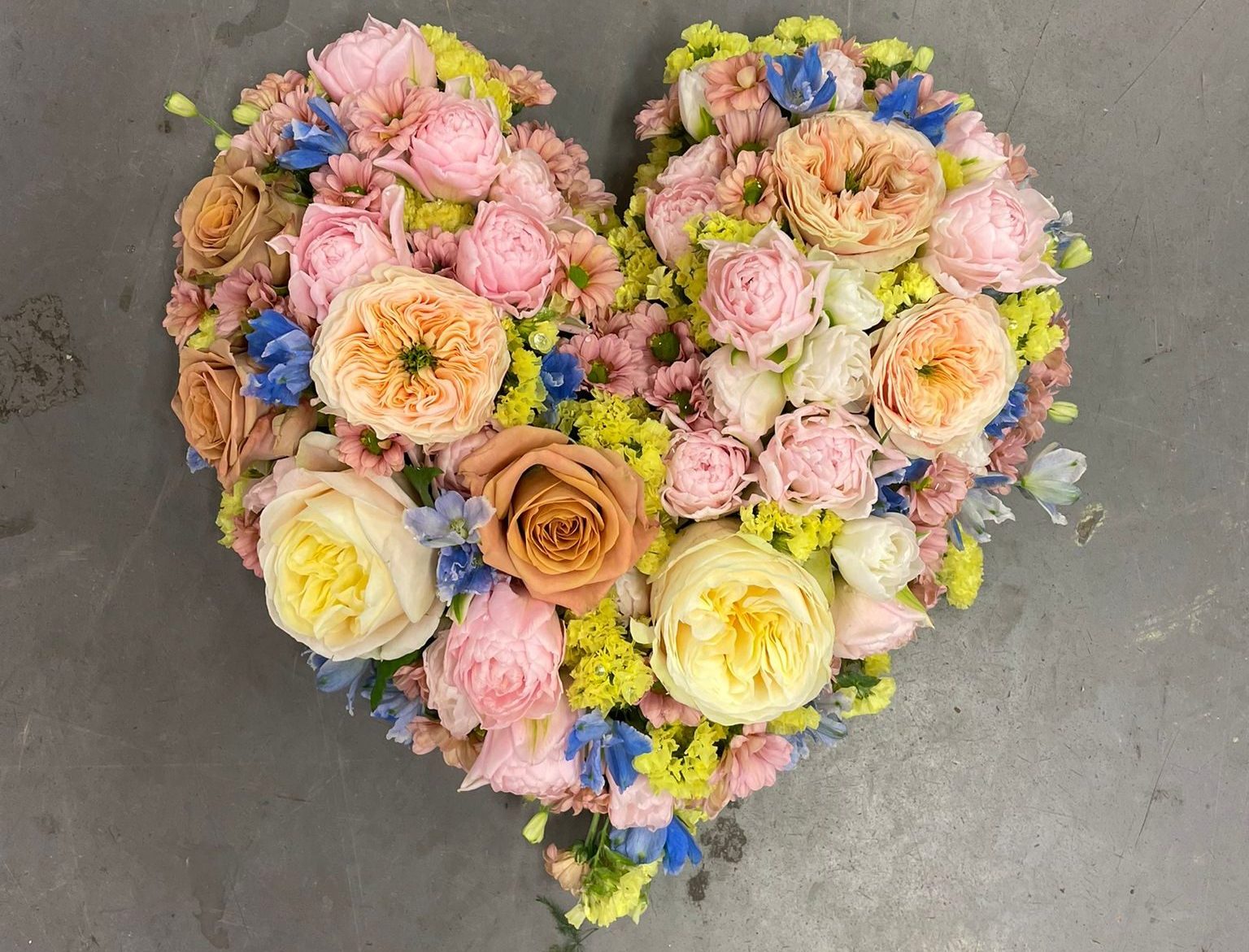
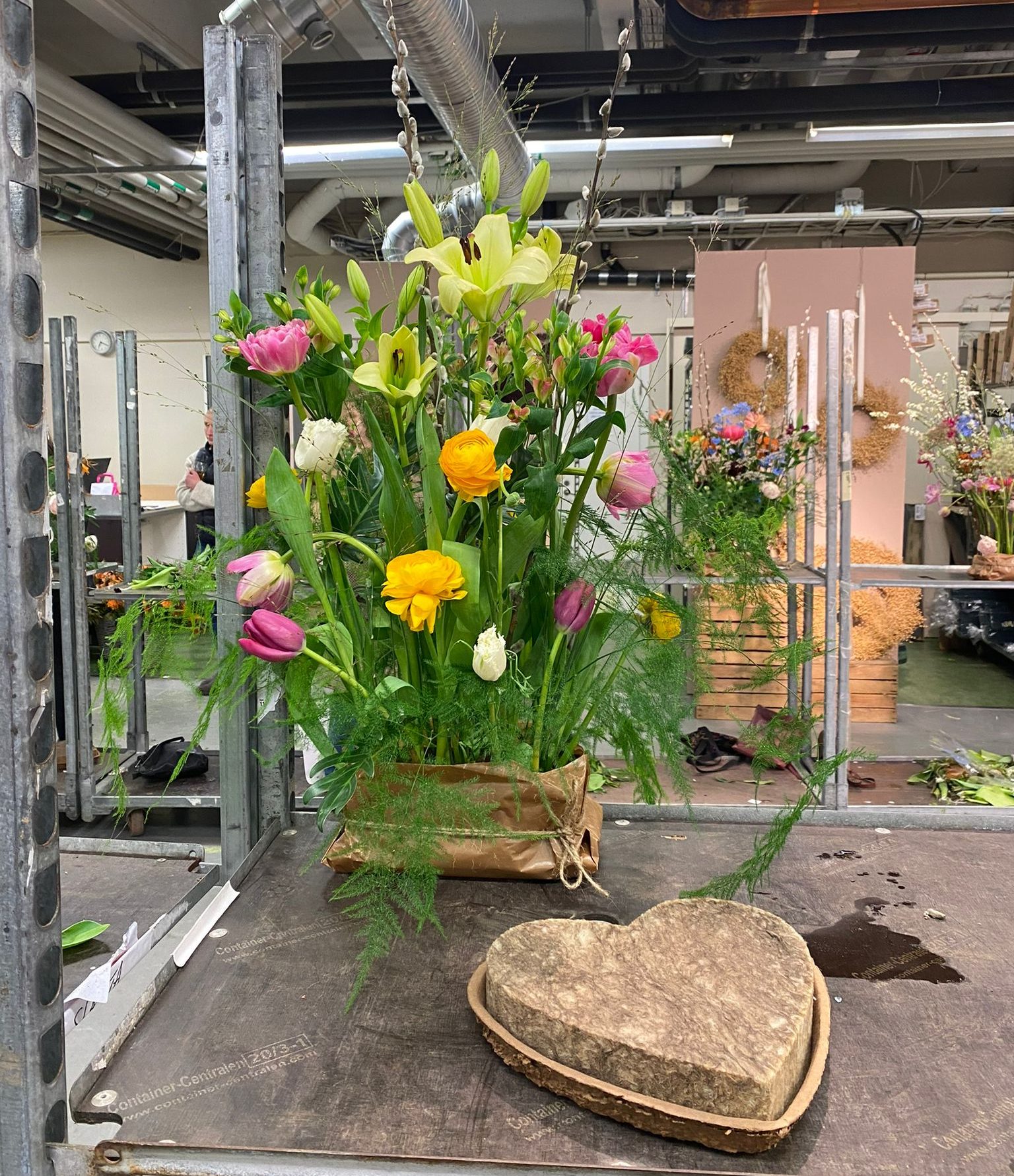
Once again, our customers could work with products from Oasis’s FirbreFloral line!
On Monday April 17th, Hukra Stockholm organized another workshop, together with Smithers-Oasis and florist Heidi Mikkonen! Once again, our customers could work with products from Oasis’s FirbreFloral line. This is one of Oasis’s newest products and made from natural ingredients. The product is derived from natural volcanic basalt rock and has excellent water holding capacity.
And of course, we had lovely seasonal and novelty flowers from our sponsors for our customers to work with! For this edition, the flowers were sponsored by Groot&Groot, Deliflor Chrysanten, Wans Roses, Monarch Flowers, Gia Flowers, and van der Valk Groenesier.
For an impression of the event, click on the photos in the gallery below!
Uitgelichte blog items
Blog
Narcissus Magic: WF Leenen

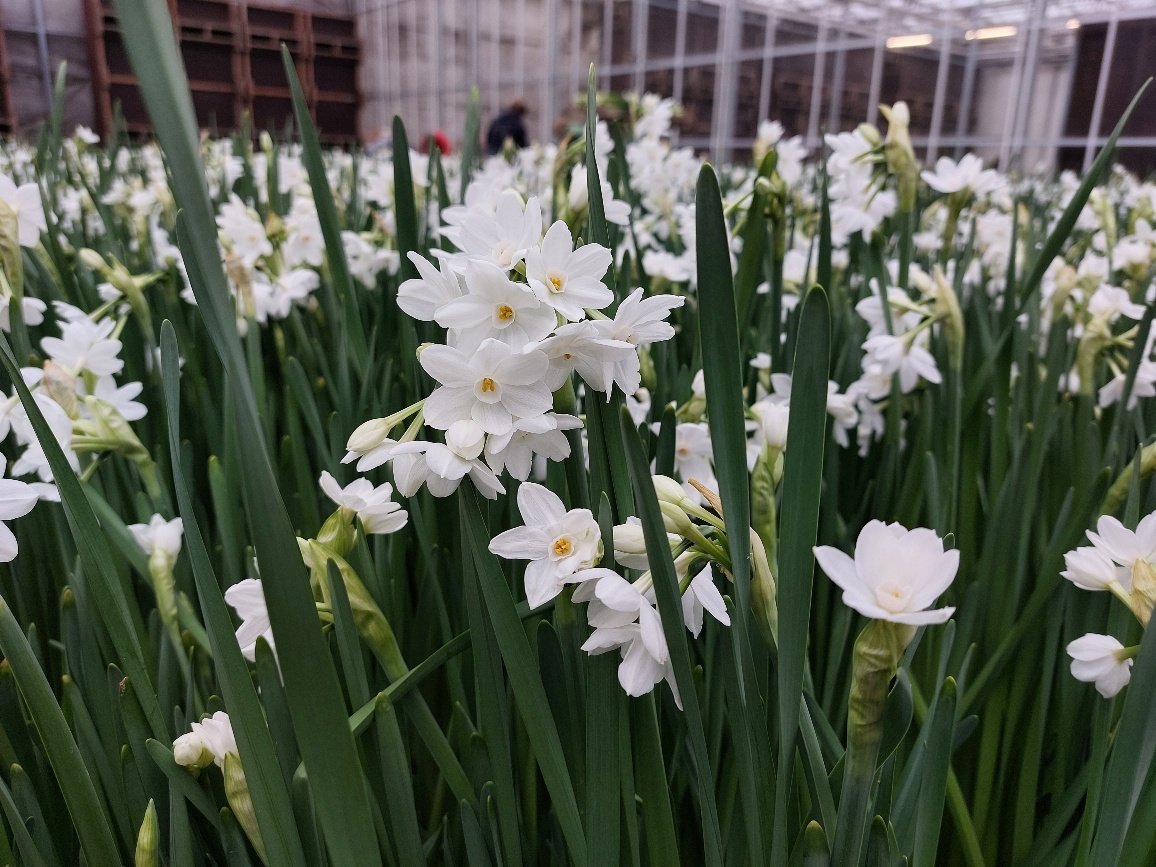
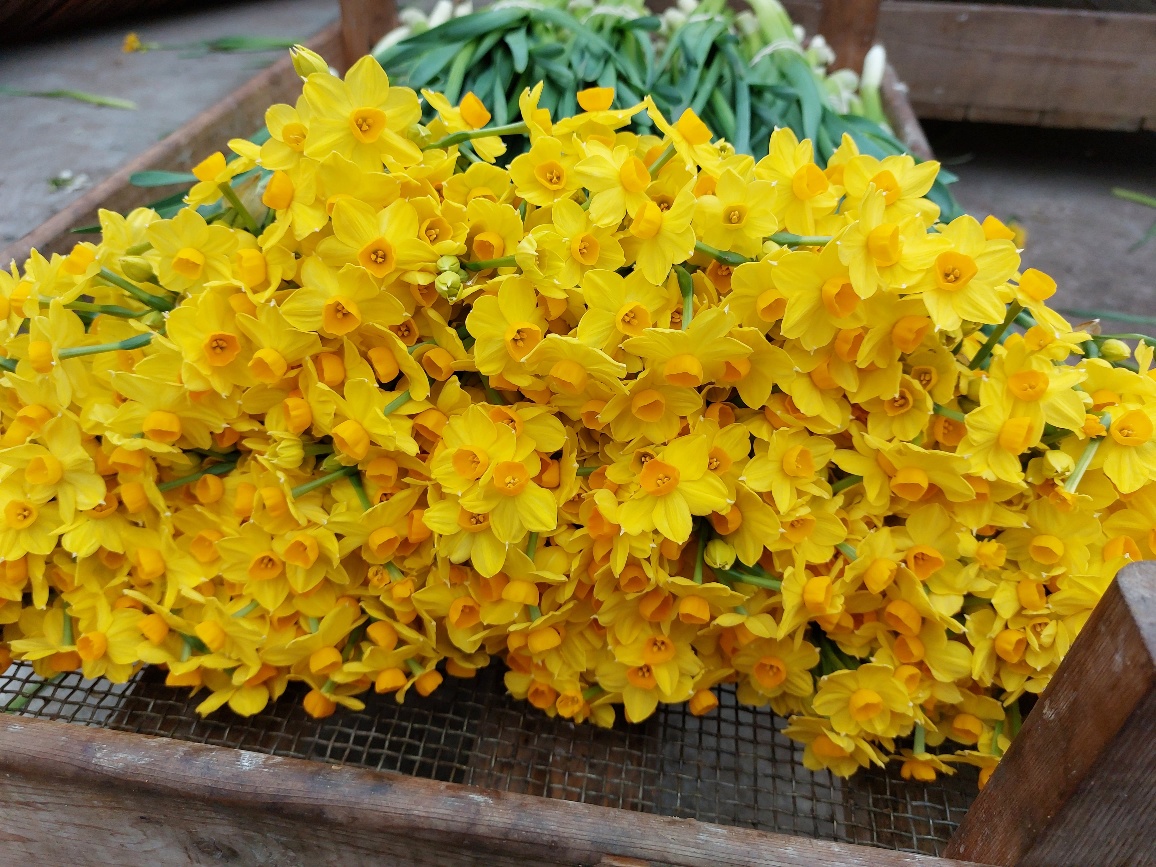
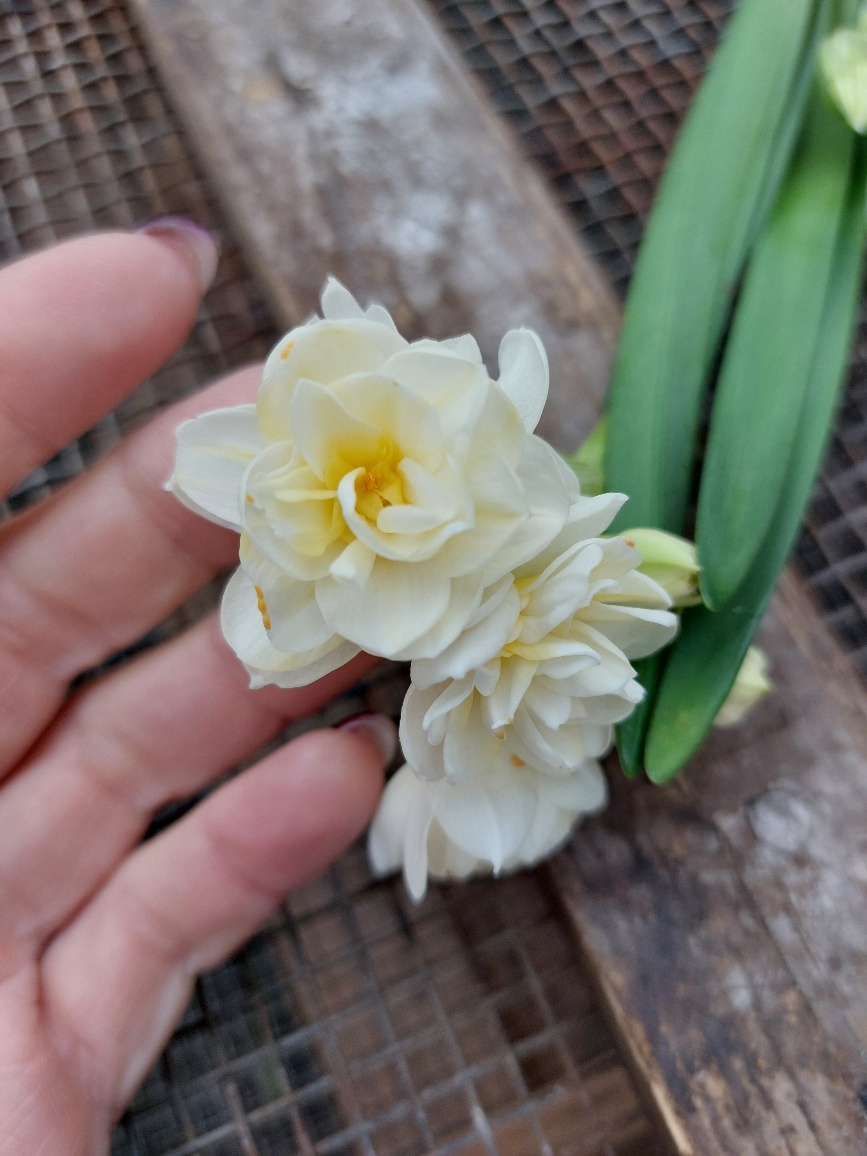
If you’re looking for exclusive Daffodils, look no further! Grower W.F. Leenen has some amazing varieties to offer!
W.F. Leenen is a family company which was established in 1954, and is located in Voorhout, the Netherlands. Brothers Jaco and Dirk are the third generation of growers to lead the company. They specialize in the growing, forcing, breeding, and export of Narcissus bulbs and cut flowers. Their assortment spans about twenty varieties, of which part is of their own invention. They produce about four million stems a year and their bulbs are exported all over the world!
Growing Process
Their bulbs are grown on seashells from the North Sea, so that they are completely free of soil when exported. It also ensures less production loss as the bulbs are less likely to be infected by diseases. The shells can be used up to three times, and as time progresses they fall apart and become of an almost sand like structure. W.F. Leenen has been growing their Daffodils this way for over twenty five years.
After the bulbs are forced, they are placed in cold storage for a period of four weeks. This will cause the flower bud, which already exists within the bulb, to start developing. After that the pallet boxes in which the bulbs are grown are placed in the greenhouse, where they will remain for another four weeks until harvest. During this time, the leaves and flower buds will fully develop.


Varieties
W.F. Leenen grows single, double, and spray (single and double) Narcissus. More common varieties are Dutch Master, Avalanche, and Paperwhite, but they also have a gorgeous, exclusive range of other varieties, like Amadeus Mozart, Abba, and Delta, and their own Paradise series of double varieties. The big varieties are harvested while the flower is still closed. With the spray varieties it is better to wait a little while, until they have some open flowers. If they have about four to five flowers open, the rest of the buds will also develop and bloom!
Some of the varieties change colour after they open. Snow Paradise, for instance, will be white with yellow on its first day, but with a day or two, it will become completely white.
Innovation
WF Leenen’s slogan is ‘Growing for generations’, which in their case is absolutely true. Did you know that developing a new Narcissus variety can take up to 30 years, from seedling until it’s market introduction? Their Paradise series, for instance, were first developed in the 1980s, by Jaco’s and Dirk’s grandfather.
So how does a new Narcissus variety come into existence? Two selected varieties are cross-bred in the old fashioned way. Within a few months, the flower will develop seed, which is sowed before the longest day of the year. It takes eight years, for the seed to develop into a full sized bulb. From there on out, the flowers that bloom from it will be observed and reviewed for a period of five years.
If the flower is deemed to be unique and good enough, the bulb is propagated naturally. This is a long and slow process! After fourteen years, about 250 bulbs have been developed, which then are propagated for another three to five years through tissue culture and/or separation.
After this long period of time, the variety is introduced to the market and available for us to enjoy!
W.F Leenen’s daily offer can be found in our web shop under the VMP/Direkt button!
Uitgelichte blog items
Blog
LS Santini : Nature Inclusive Growing
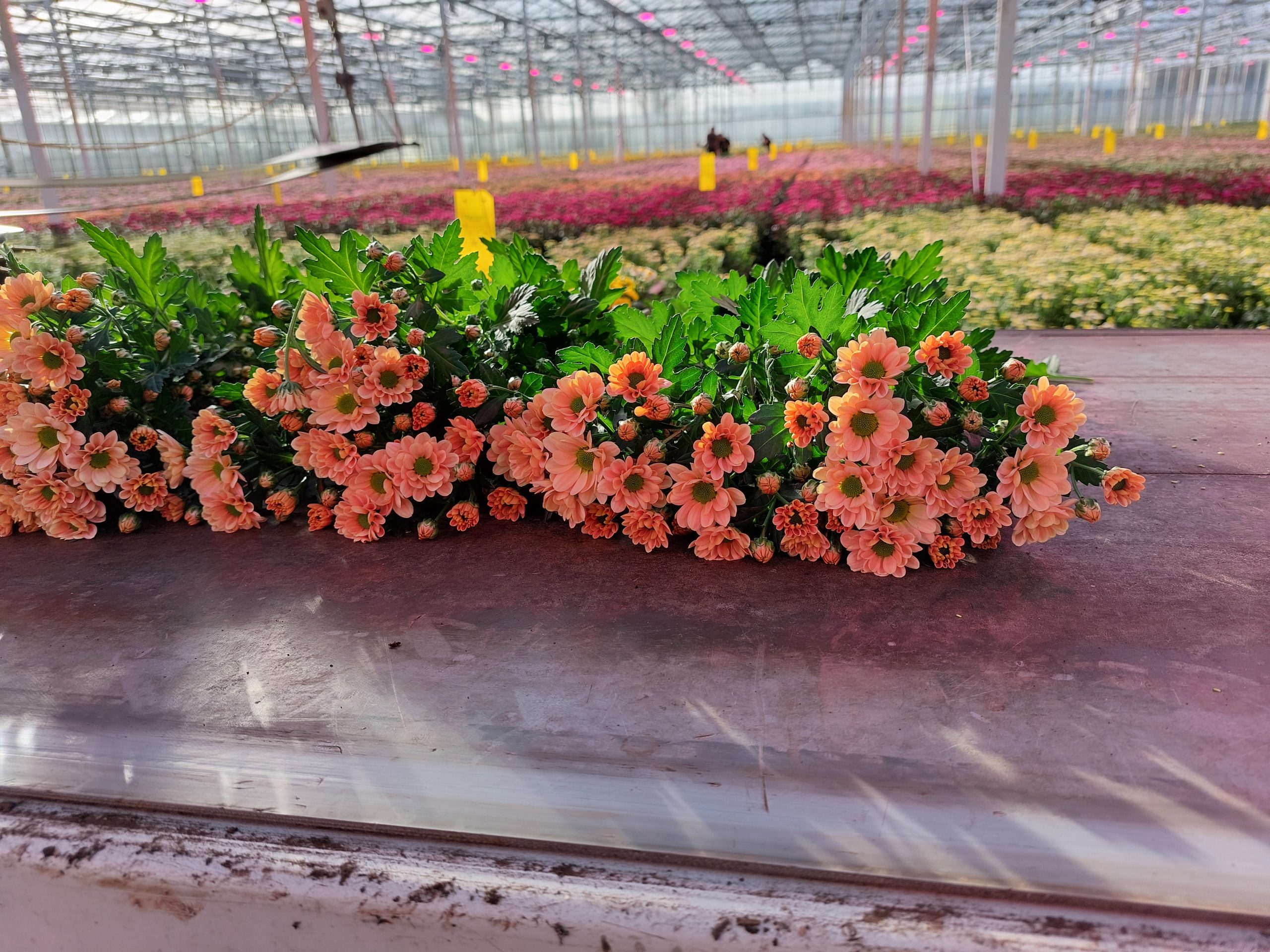
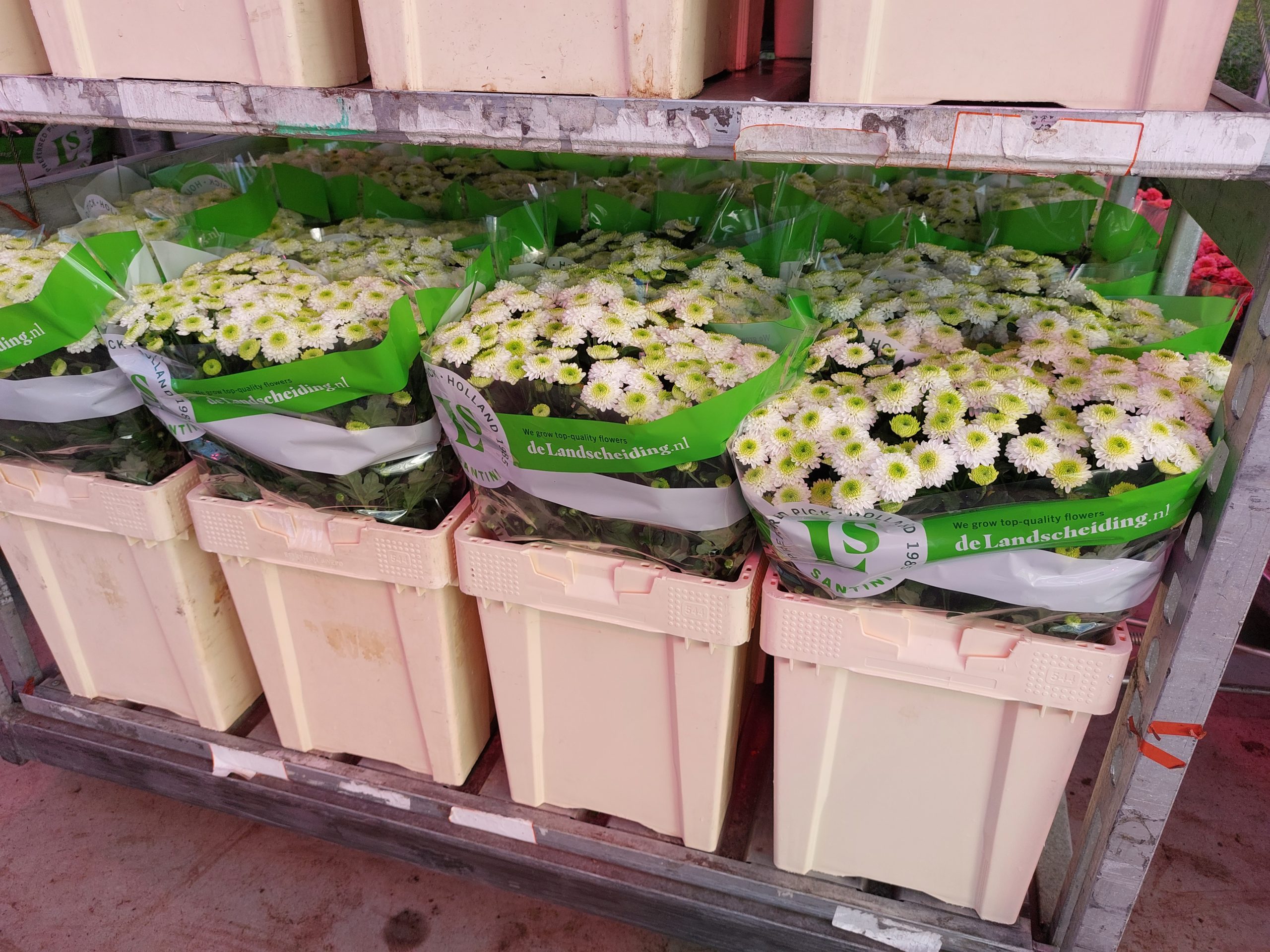
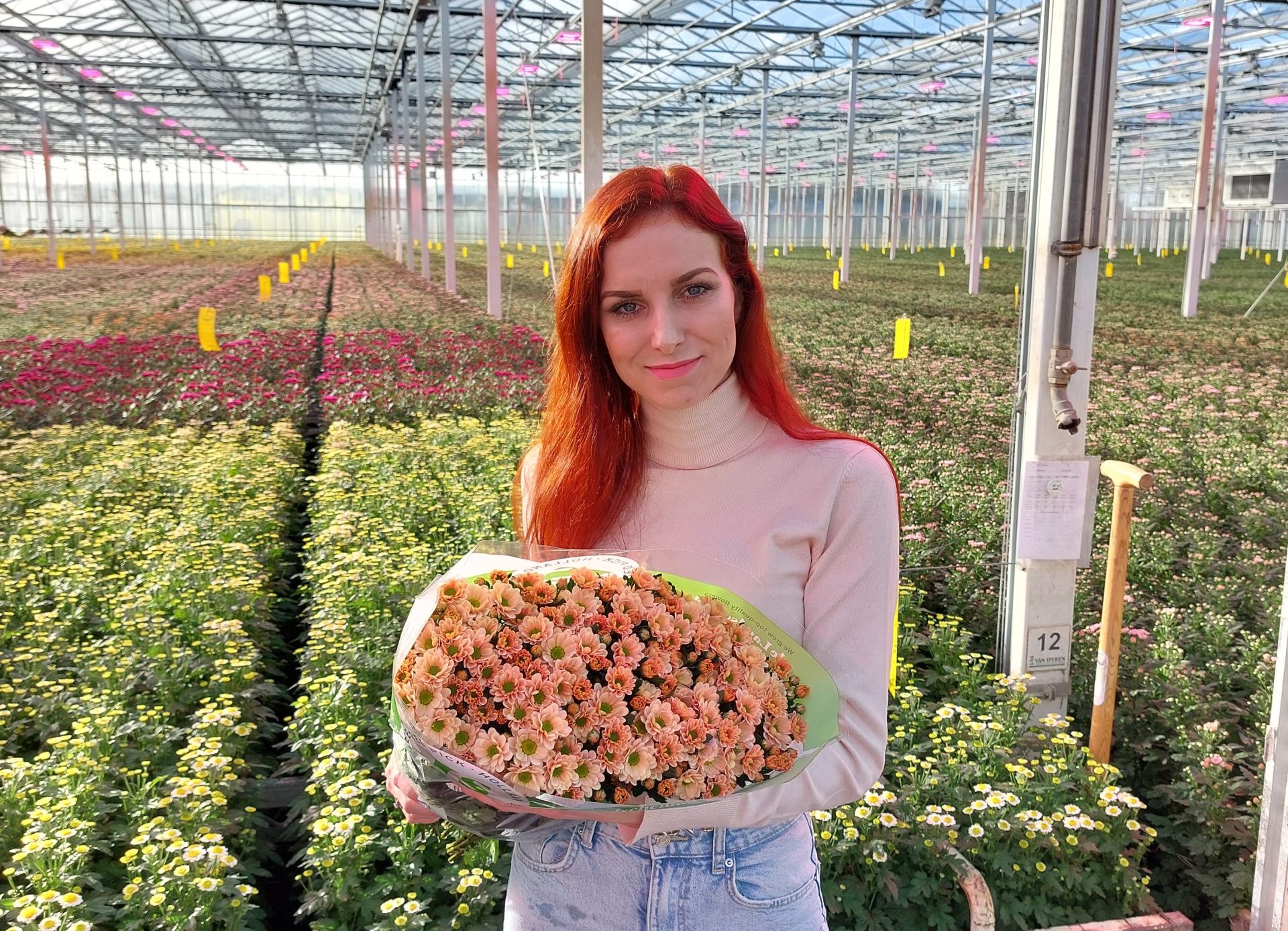
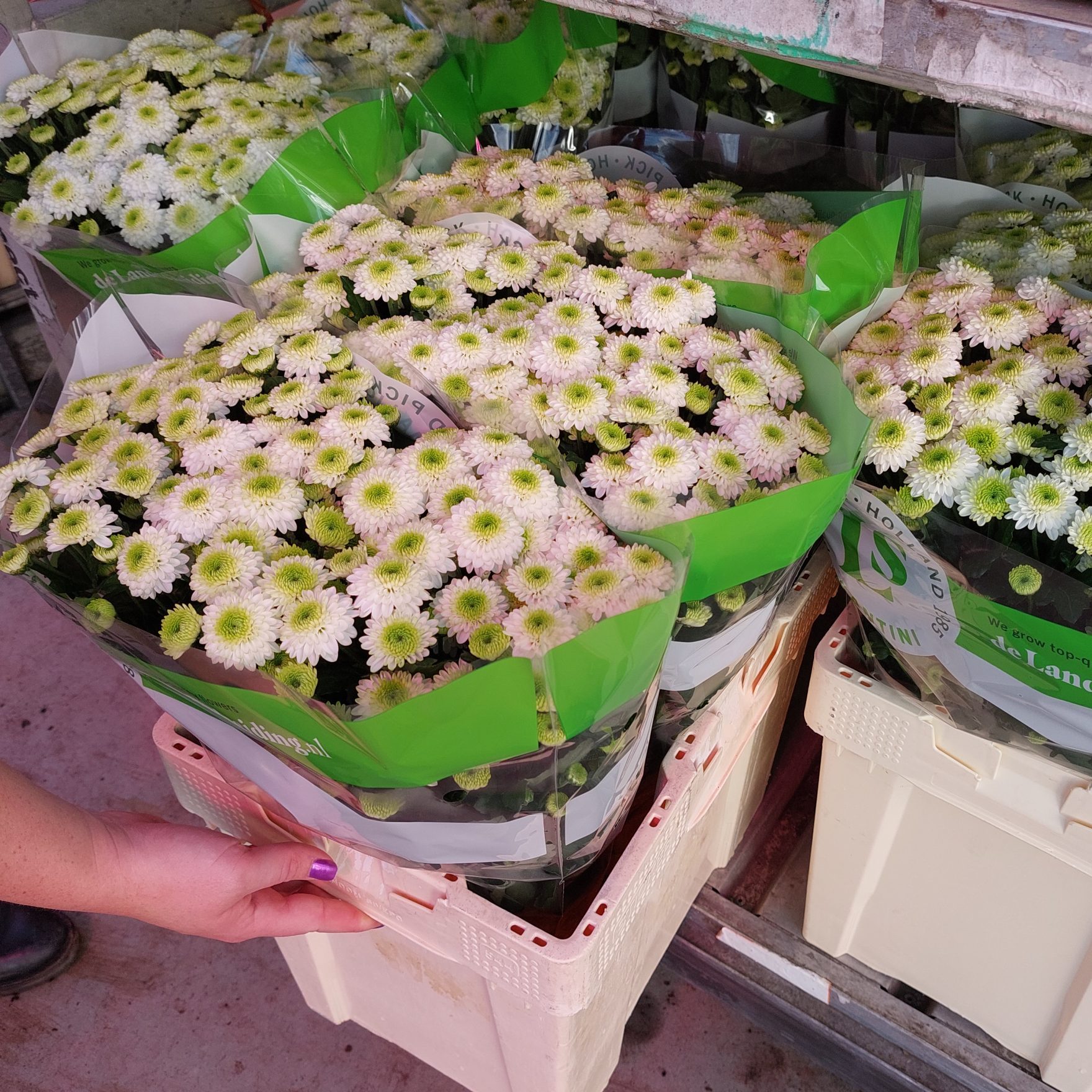
How LS Santini grows high quality Santini in a new way!
LS Santini is located in Bleiswijk, the Netherlands, and has existed for over thirty years. It’s a true family company, with three of the five children working in the nursery. Daughter Juliska, who is responsible for sales , is the one to lead us around in the greenhouse. LS Santini’s assortment consists of exclusive Santini varieties, like Rossi and Calimero.
The company is known for producing high quality Santini, which are harvested by hand every day. Fresh flowers? You got it! On first sight, the greenhouse looks quite different from what one might expect from a chrysanthemum grower. Instead of having one variety per section as is usual, LS Santini plants multiple varieties in smaller amounts in each section. The result is a colourful blanket of flowers, which are worked through on a daily basis. Only the stems in the right flowering stadium with uniform quality are harvested. The flowers are packed in the greenhouse itself, which also contributes to the high quality standard. After all, the line of communication between the person packing the flowers, and the people harvesting them is short, so it’s easy to adjust if necessary.
Like many other growers nowadays, LS Santini has LED-lights installed in their greenhouse, which reduces their use of electricity by 30-40%. Alongside that, eight dehumidifiers have been installed recently, which reduced the use of gas by 30%. But these are not the only environmentally conscious decisions the company has taken. Six years ago, owner Wilco decided to try a completely different approach to growing Santini. A careful study of plant physiological processes resulted in a new and natural way of growing top quality Santini.
So what is it that is so special about the company’s way of growing Santini that makes them stand out from the rest?
The answer lies in their soil.
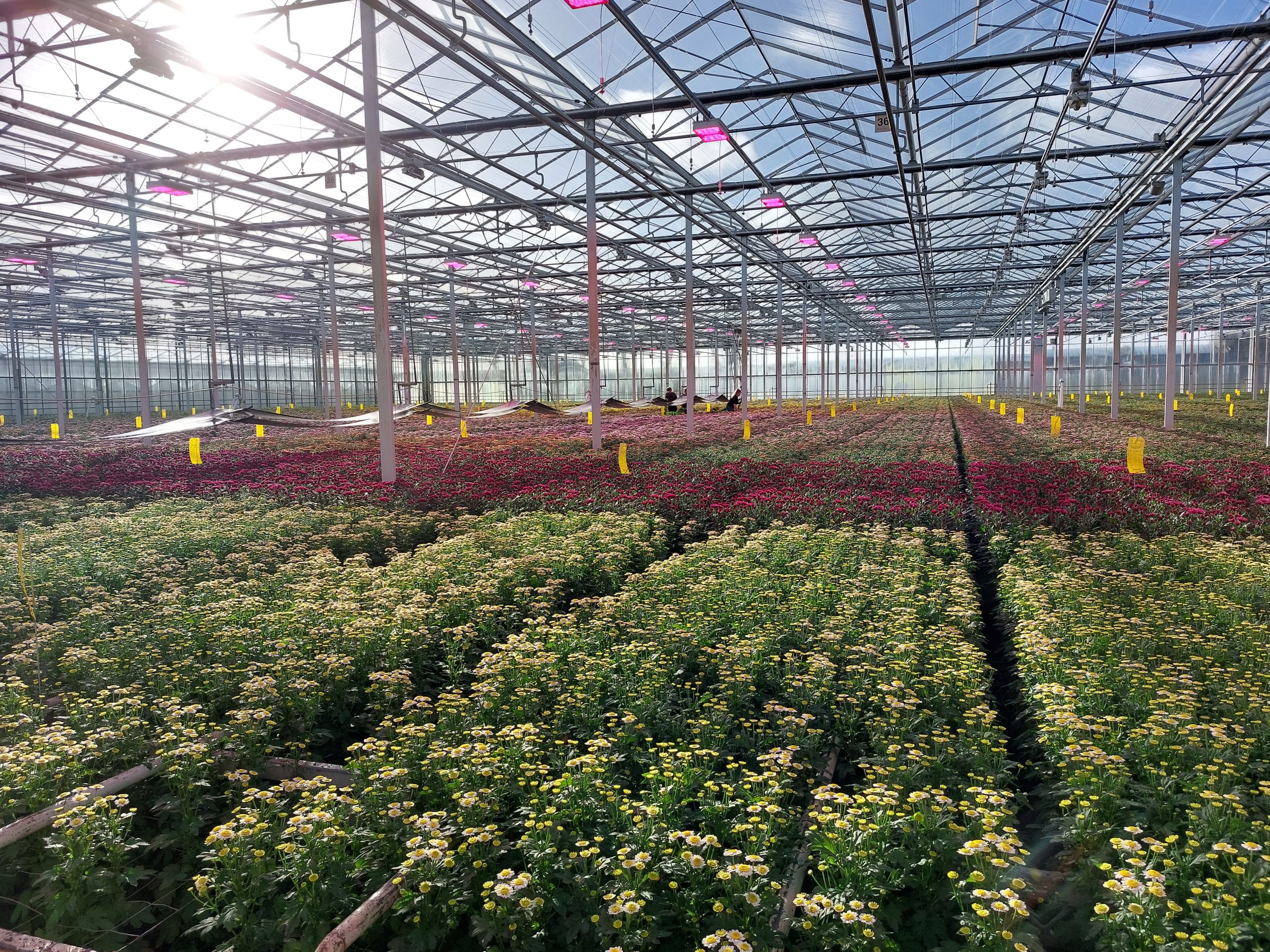
Eco-friendly grown feel good flowers!
In many nurseries, the soil is steamed once a year, and often milled completely before planting. Fertilizers are used to give the soil a boost, and plagues and diseases are countered with organic and natural pesticides. But this way of working – while not necessarily bad – is far from natural. The steaming and milling of soil destroys many natural organisms that can actually contribute to healthy flowers and plants.
LS Santini no longer steams and mills their soil. Instead, after harvesting a section of Santini’s, a thin layer of compost is added to the soil, which is then carefully equalized. The compost is derived from their own organic waste (circular growing), which is put in a compost silo next to their nursery. The compost is compressed, which causes its core to heat up to about 55°C. This kills any bad bacteria and weeds in the soil, and after three weeks the compost is usable in the greenhouse. In theory, this is a natural way of steaming. Before spreading it out over the soil, wood compost is added. The use of this mixture, contributes to a healthy soil life, which results in more healthy fungus, worms, and insects in the ground. For fertilizer, LS Santini only uses natural substances, and on the rare occasion they need to use a pesticide, only natural/organic ones are used.
All of this effort results in a stronger plant that is less susceptible disease and unattractive to plagues. LS Santini likes to call their way of working ‘nature inclusive growing’. By looking at nature and creating a healthy balance in their soil, they can grow their flowers in a way that is way less harming to the environment.
Eco-friendly grown, the Santini from LS Santini are true feel good flowers!
Uitgelichte blog items
Blog
Workshop at Hukra Stockholm
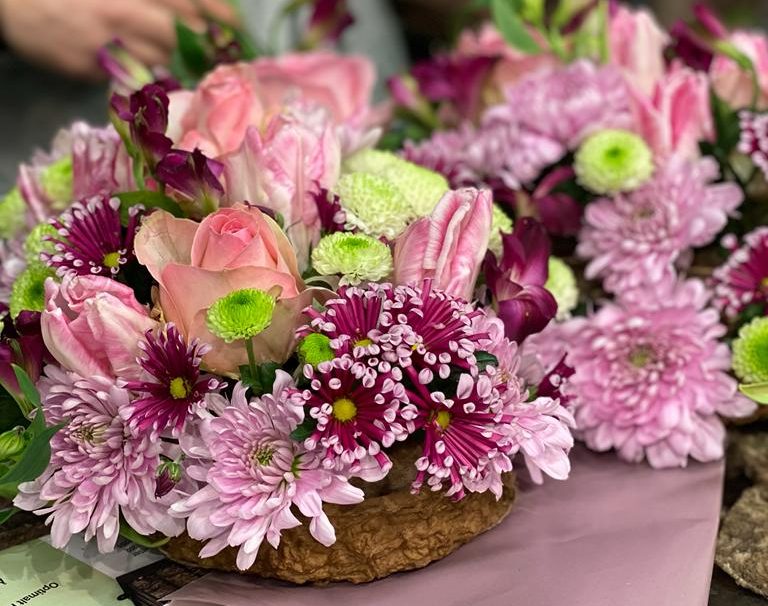
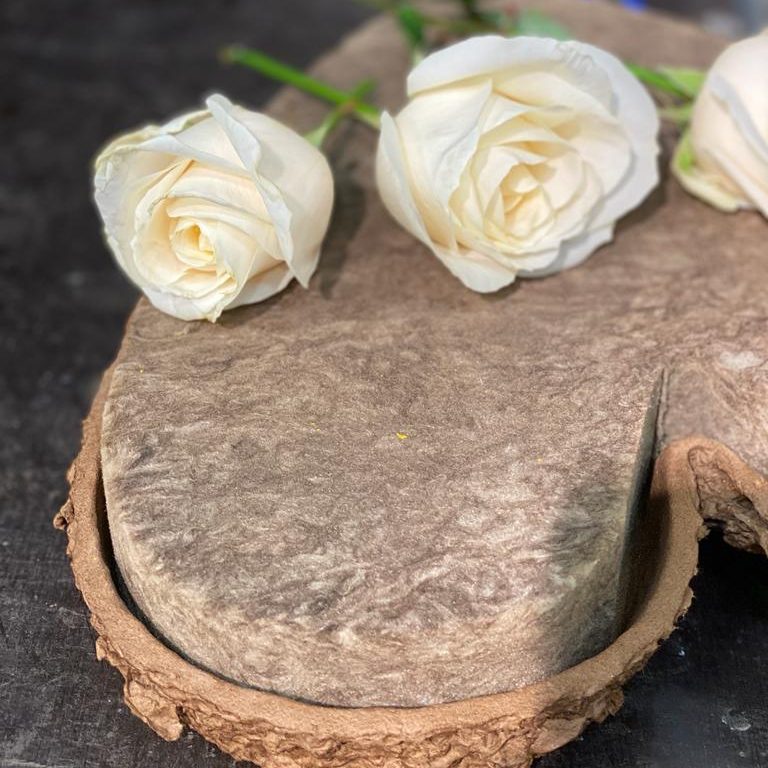
A wonderful workshop together with Smithers-Oasis and florist Heidi Mikkonen!
On Tuesday February 7th, Hukra Stockholm organized a workshop, together with Smithers-Oasis and florist Heidi Mikkonen, during which our customers could work with products from Oasis’s FirbreFloral line. This is one of Oasis’s newest products and made from natural ingredients. The product is derived from natural volcanic basalt rock and has excellent water holding capacity.
Each participant could make two different arrangements. It was wonderful to have so many people together, to share inspiration and enthusiasm. We had amazing flowers sponsored by Dekker Chrysanten, W.F. Leenen, Jac Oudijk Gerbera’s, XL Tulips, van der Valk Groenesier, Könst Alstroemeria, and Together2Grow.
For an impression of the event, click on the photos in the gallery below!
Uitgelichte blog items
Blog
Helleborus Aarendelle



Helleborus Aarendelle
You might have seen them in our webshop again! Helleborus Aarendelle through the direct link to the Helleborus assortment of Sonneveld Hydrangea. Sonneveld grows Hydrangeas during the Summer season, and during the winter season they have some amazing Helleborus varieties. All the varieties that Sonneveld grows are of the Aarendelle series. These are known for their sturdy stems, big flowers, and long vase life. Sonneveld grows three of the Aarendelle lines: Sara, Bella, and Nora, and the shades range from pink to purple and dark red.
Sonneveld Hydrangea is a true family company, run by the brothers Piet, Henk, and Steve. Their grandfather started the company in 1927, and over the years they have changed from a vegetable grower to a grower of quality cut flowers. A few years ago the brothers came in contact with a German breeder who was developing a new series of cut Helleborus. Thinking that this would be an interesting flower to grow in the winter season, they decided to give it a try.
They put some of the Helleborus varieties in a small part of their greenhouse, and were quick to discover the cultivation of this flower is very natural, but not easy! A few years down the line, Sonneveld has mastered the cultivation of Helleborus and has expanded the amount of crops in their greenhouse.
The thee lines of Helleborus Aarendelle that Sonneveld grows, each have their own distinct features. The Bella produces large flowers on a thick unbranched stem, while the Sara produces multiple blooms on branched stems. Nora is known for their extra-long stems.
Helleborus grow best in colder temperatures. Therefore their production is rather sustainable, as there is no need for gas to warm the greenhouse. The flowers are cut by hand with a special knife that releases a drop of milk onto the plant to close off the wound. This protects the plants against diseases. After harvesting the flowers are placed into water with a bactericidal pre-treatment agent. This ensures the flowers’ long vaselife. No flower food is needed!

Helleborus Tips
Sonneveld Hydrangea is the only grower in the Netherlands that grows Helleborus Aarendelle. Helleborus Aarendelle are specifically bred cut flower varieties. To ensure the quality the flowers are grown with the utmost care, and harvested in the right stadium. After harvest, the flowers are in water with a pre-treatment agent. It is important that this agent has a bactericidal effect.
With these tips, you can keep the Helleborus up to three weeks:
Flower stem care
1. Re-cut the stems immediately upon arrival for improved water uptake and place them in fresh cold water.
2. Change the water daily, or use water with a bactericidal pre-treatment agent. Re-cut stems that turn black at their bottom ends and place them in fresh water.
3. Important: do not use any kind of flower food!
Storage
1. The flower stems need to be stored in a cool place.
2. Make sure to keep them protected from direct sunlight and at a sufficient distance from heaters.
A tip for weak flowers in the vase: Roll the flowers in newspaper. Cut a small piece off the stem and refrigerate them for a while. Then put them back in the vase with clean water.
For more information, check www.aarendelle.com!
